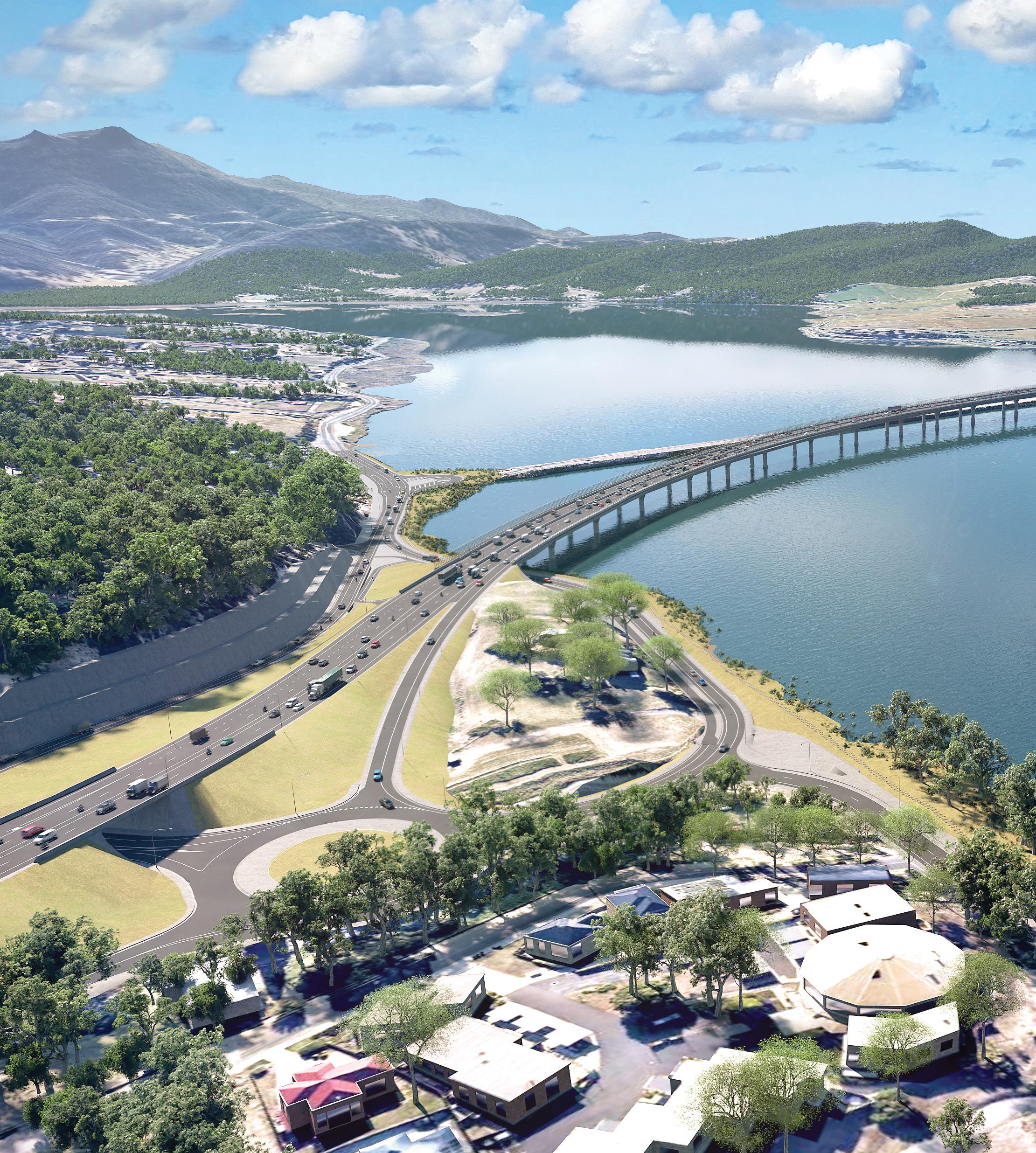
UDIA’S
SIX STEPS TO SMARTER CITIES
TASMANIA’S BIGGEST TRANSPORT PROJECT HIGHLIGHTS FROM THE CRITICAL INFRASTRUCTURE SUMMIT
BUILDING BRIDGEWATER BRIDGE
Issue 23 June 2022 ROAD - RAIL - AIRPORT - PORT - URBAN - UTILITY

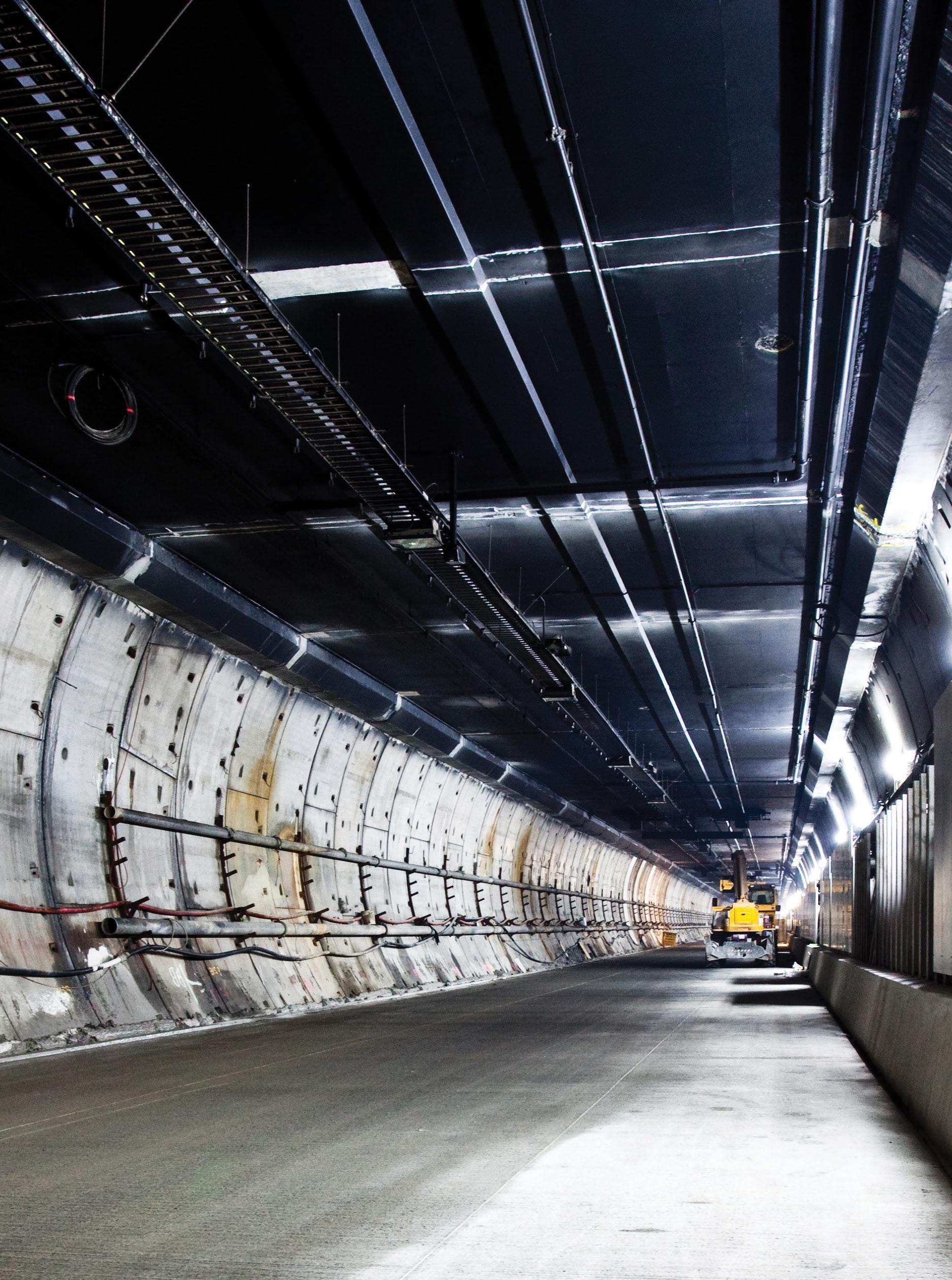

1300 062 064 | polymaster.com.au 25 YEAR DESIGN LIFE See our range
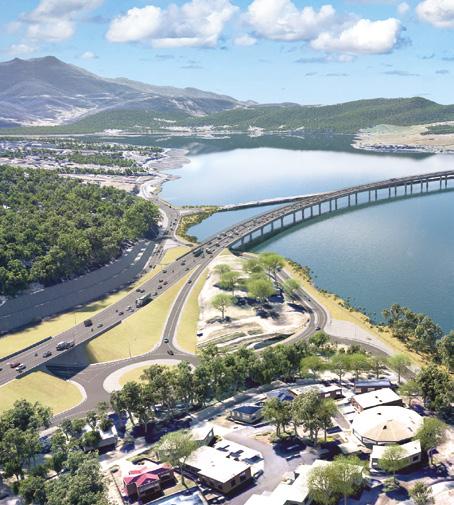
Published by
Monkey Media Enterprises
ABN: 36 426 734 954
C/- The Commons, 36–38 Gipps St, Collingwood VIC 3066
P: (03) 9988 4950
F: (03) 8456 6720
monkeymedia.com.au info@monkeymedia.com.au infrastructuremagazine.com.au news@infrastructuremagazine.com.au
Editor Jessica Dickers
Journalists
April Shepherd
Lauren DeLorenzo
Annabelle Powell
Christopher Allan Mikayla Bridge
National Media and Events Executives
Rima Munafo
Brett Thompson
Jacob Trad
Design Manager
Alejandro Molano
Designers
Luke Martin
Danielle Harris
Jacqueline Buckmaster
Marketing Manager
Radhika Sud
Marketing Associate
Andie James
Digital Marketing Assistant
James Holgate
Jackson Barnes
Publisher Chris Bland
Managing Editor
Laura Harvey
ISSN: 2206-7906
EDITOR’S WELCOME

Ifeel like I say this in every edition of the magazine, but it has been a particularly eventful few months.
Since our last issue, we’ve had devastating floods in the East Coast, several major infrastructure company insolvencies including ProBuild, the Federal Budget released and an election called, all in addition to continuing challenges including the pandemic, and many international developments such as the Russian invasion of Ukraine.
All of these things have had an impact on our industry in one way or another and have highlighted the reforms needed across procurement, supply chains, culture and diversity, and more.
This edition of the magazine continues our conversations on these important issues, including a look at some recent industry reports including Infrastructure Australia’s Delivering Outcomes, and the Federal Government’s Government procurement: A sovereign security imperative.
These topics were also front and center at Infrastructure’s recent Critical Infrastructure Summit – three virtual conferences in April. The Summit was a chance to bring the thought-leading articles from the magazine to life and hear from some of the most respected leaders in the industry.
More than 550 infrastructure professionals registered for the Summit, and for those that missed it, you can still access all of the recordings by registering for free at www.critical-infrastructure.com.au
We have several in-depth articles covering some of the Summit presentations including Melbourne Airport’s Chief of Infrastructure Simon Gandy on page 28, Infrastructure Victoria’s CEO Jonathan Spear on page 44, and Rachel Smith from the Australian Logistics Council on page 64.
We’ve also got a feature on airports to highlight the ramp up of domestic and international travel, with the Easter break and recent public holidays bringing more passengers through Australia’s airports than we’ve seen over the last few years.
This increase in movement also brings back conversations around urban development and how we can make our cities smarter and more adaptable to a post-COVID world. In this issue, the Urban Development Institute of Australia explores what it says are the six steps to growing better cities and increasing housing supply, while PwC details why Australia’s cities of tomorrow need to start today.
One of the other stand-out features is our bridge coverage, as you can see from the cover image, which highlights our feature on the Bridgewater Bridge. We also have a fantastic article on the Narre Warren Station rail bridge, part of Victoria’s Level Crossing Removal Project.
As always, I’d love to hear your thoughts and feedback, and find out what issues are impacting you the most in your day to day operations and what you’re interested in reading. The Infrastructure team will also be attending and supporting a few upcoming industry events over the next few months including the National Roads & Traffic Expo, Locate22 and Sydney Build Expo, so we’ll see you there.
Jessica Dickers Editor
Drop me a line at jessica.dickers@monkeymedia.net.au or feel free to call me on 03 9988 4950 to let me know what you think. Don’t forget to follow Infrastructure magazine on social media – find us on LinkedIn, Twitter and YouTube.
1 www.infrastructuremagazine.com.au June 2022 // Issue 23 EDITOR’S WELCOME Issue 23 ROAD RAIL AIRPORT - PORT URBAN UTILITY INFRASTRUCTURE JUNE 2022 BUILDING BRIDGEWATER BRIDGE TASMANIA’S BIGGEST TRANSPORT PROJECT HIGHLIGHTS FROM THE CRITICAL INFRASTRUCTURE SUMMIT UDIA’S SIX STEPS TO SMARTER CITIES

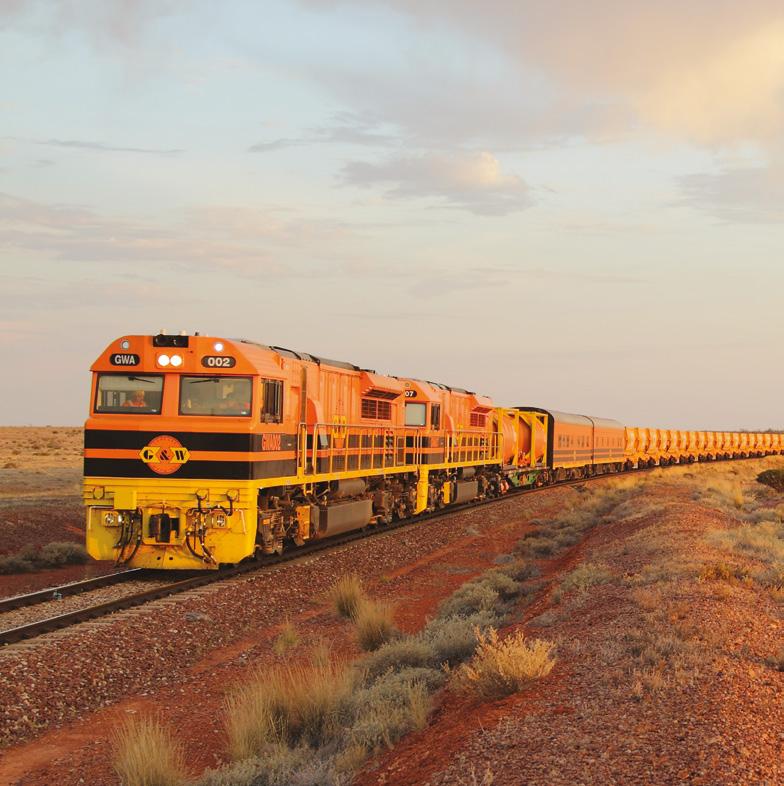
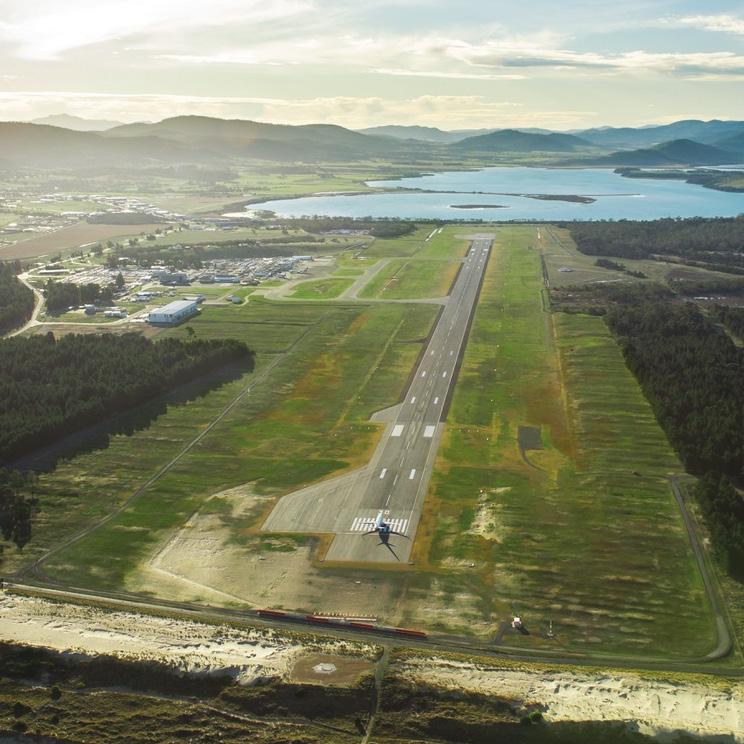
URBAN DEVELOPMENT
LIGHT AT THE END OF THE TUNNEL
Infrastructure planning, decision-making and delivery consistently falls short of best practice in Australia.
A WORD FROM CCF
GOVERNMENT PROCUREMENT: A SOVEREIGN SECURITY IMPERATIVE
You might use them to zip under the city, cross the harbour or pass through a mountain –tunnels are a major part of Australia’s road and rail infrastructure. With lengths of up to nine kilometres, which is the longest in Australia, they require precise planning, engineering and ongoing maintenance to keep users safe and avoid the types of disasters we only want to see in movies.
SIX STEPS TO GROWING BETTER CITIES AND INCREASING HOUSING SUPPLY
Great cities and regions don’t just happen automatically. They demand foresight, planning, early investment, and the capacity to respond to the needs of people who already live there and those who aspire to live in them in future.
HIGHLIGHTS FROM THE 2022 CRITICAL INFRASTRUCTURE SUMMIT
Infrastructure magazine’s Critical Infrastructure Summit, held on 6-8 April, brought together the biggest names in infrastructure for three days of thought-provoking discussion.
MELBOURNE AIRPORT: THE RIGHT INFRASTRUCTURE AT THE RIGHT TIME
BUILDING TASMANIA’S FUTURE
As the major gateway to Tasmania, with nearly 60 per cent of visitors to the state passing through its doors, the airport’s success is intrinsically linked to Tasmania’s.
MAINTAINING CRITICAL INFRASTRUCTURE ASSETS IN A TIME OF TRANSFORMATIVE CHANGE
Dr Jonathan Spear, the CEO of Victoria’s independent infrastructure advisory body, Infrastructure Victoria, describes a pathway for managing Victoria’s critical infrastructure over the next thirty years.
HOW QUALITY SPATIAL DATA SUPPORTS VIEWSHED ANALYSIS
SMART CITIES – WHY AUSTRALIA’S CITIES OF TOMORROW START TODAY
When it comes to planning infrastructure, the smart money is on smart precincts.
2 CONTENTS June 2022 // Issue 23 www.infrastructuremagazine.com.au
44 48 50 DELIVERING OUTCOMES: A 10-YEAR INDUSTRY ROAD MAP
14 A WORD FROM INFRASTRUCTURE
AUSTRALIA
FROM ADVOCACY TO IDEAS GEOSPATIAL FOUNDATIONS AT THE HEART OF AUSTRALIAN INFRASTRUCTURE 18 22 24 INDUSTRY INSIGHTS SMART CITIES AIRPORT
28 32 36 40
16



UP AND AWAY – BUILDING A RAIL BRIDGE OVER WEBB STREET, NARRE WARREN
REMOTE MONITORING THE SAFETY OF BRIDGES
BUILDING BRIDGEWATER BRIDGE – TASMANIA’S BIGGEST TRANSPORT PROJECT
While building a new Bridgewater Bridge has been talked about for more than two decades, it is now becoming a reality, with the awarding of a contract for the design and construction of the project to McConnell Dowell. Work is now underway in preparation for construction to start later this year on what will be the biggest transport infrastructure project in Tasmania’s history.
CHALLENGES AND OPPORTUNITIES FACING THE FREIGHT SECTOR
Rachel Smith, the Head of Government and Policy at the Australian Logistics Council (ALC), explores the current state of Australia's logistics and freight sector, and the harmonisation that is needed in the future.
HOW TO INCREASE RAIL FREIGHT’S MODAL SHARE
As a means to move freight, rail works. In many instances, it is the stand-out performer when compared to other modes of transport. This is particularly true for moving heavy bulk material over long distances.
REGULARS
1 EDITOR’S WELCOME
4 CONTRIBUTORS
72 ADVERTISERS’ INDEX
72 FEATURES SCHEDULE NEWS
6 $323.7 MILLION ECHUCA-MOAMA RIVER CROSSING NOW OPEN
6 $538.5 MILLION CONTRACT AWARDED FOR SYDNEY METRO – WESTERN SYDNEY AIRPORT PROJECT
7 FEDERAL BUDGET 2022-23 –INFRASTRUCTURE BREAKDOWN
8 VIC HITS LEVEL CROSSING, CAPACITY UPGRADE MILESTONES
8 NEW METRONET SITE WORKS UNDERWAY
9 INFRASTRUCTURE SUSTAINABILITY AWARD WINNERS REVEALED
10 CONTRACT AWARDED FOR AUSTRALIA’S LARGEST TRAM PROJECT
10 GLADSTONE PORTS CORPORATION APPOINTS NEW CEO
12 DOES IT COMPLY? WHY INDEPENDENT PRODUCT TESTING MATTERS
3 www.infrastructuremagazine.com.au June 2022 // Issue 23 CONTENTS
54 58 60 BRIDGES
64 FREIGHT AND LOGISTICS 68
Melissa Harris
Chair, Australia and New Zealand Land Information Council (ANZLIC)
Melissa Harris is the Chief Executive of Land Use Victoria (LUV) which is the agency within the Victorian Department of Environment, Land, Water and Planning (DELWP) responsible for all aspects of land administration including property titles, valuations, subdivisions, land monitoring, surveying, spatial services, government land advice, the $45 million Digital Cadastre Modernisation project and the $37 million Digital Twin Victoria project.
Ms Harris is also the Chair of the Australia and New Zealand Land Information Council (ANZLIC), the peak intergovernmental organisation providing leadership on all aspects of spatial information in Australia and New Zealand.

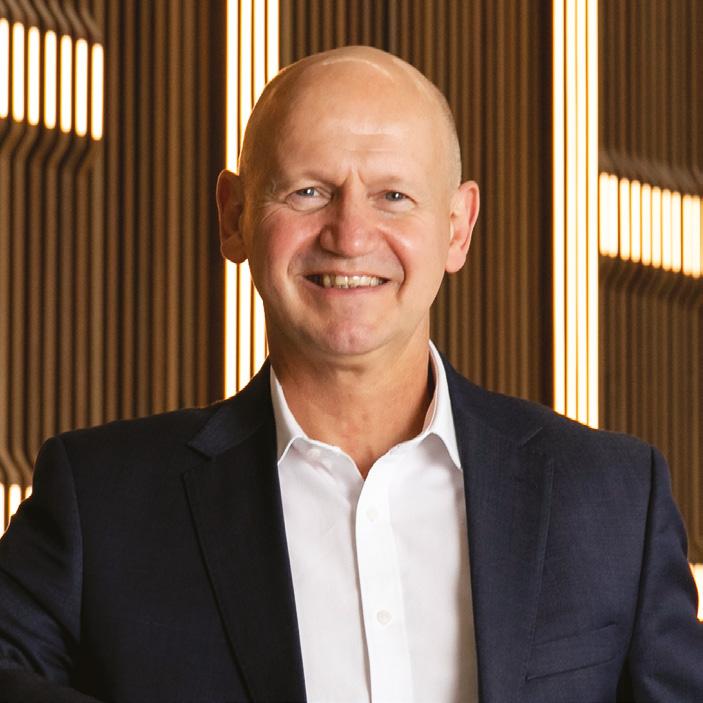
Simon Gandy
Chief of Infrastructure, Melbourne Airport
Mr Gandy is an experienced executive leader with more than 30 years aviation experience, transforming airports to deliver high levels of growth and market share. Having joined APAC in 2007, he brings a wealth of experience working with boards, regulators, government and community stakeholders in the UK and Australia, to create enduring solutions for businesses, people and the communities they operate within.
Through his career, Mr Gandy has held a number of C-suite roles including corporate strategy, business & commercial development, operations and construction delivery.
Peter Colacino Chief of Policy and Research, Infrastructure Australia
Mr Colacino is one of the leading voices in Australian infrastructure. He is responsible for driving Infrastructure Australia’s transformative policy and research agenda across sustainability, resilience, place-making, industry productivity and infrastructure planning.
An accomplished leader with experience in strategy, policy and corporate affairs, he has held senior roles across politics, industry and government, including within some of the world’s largest infrastructure operators – Keolis Downer and Transurban.
As Chief of Policy & Research at Infrastructure Australia, Mr Colacino led delivery of the landmark 2021 Australian Infrastructure Plan, 2019 Australian Infrastructure Audit and the inaugural Market Capacity Program

4 June 2022 // Issue 23 www.infrastructuremagazine.com.au INFRASTRUCTURE
Contributors
Contributors
Dr Jonathan Spear
CEO, Infrastructure Victoria
Previously the organisation’s Deputy Chief Executive, Chief Operating Officer and General Counsel, Dr Spear has led Infrastructure Victoria’s work on Victoria’s 30-year infrastructure strategy, research program and provision of independent advice to the Victorian Government.
Before joining Infrastructure Victoria during its establishment in 2015, he held senior leadership, policy, strategy and legal roles with the Victorian Government Department of Premier and Cabinet, Department of Justice, Victoria Police and Slater and Gordon Lawyers.

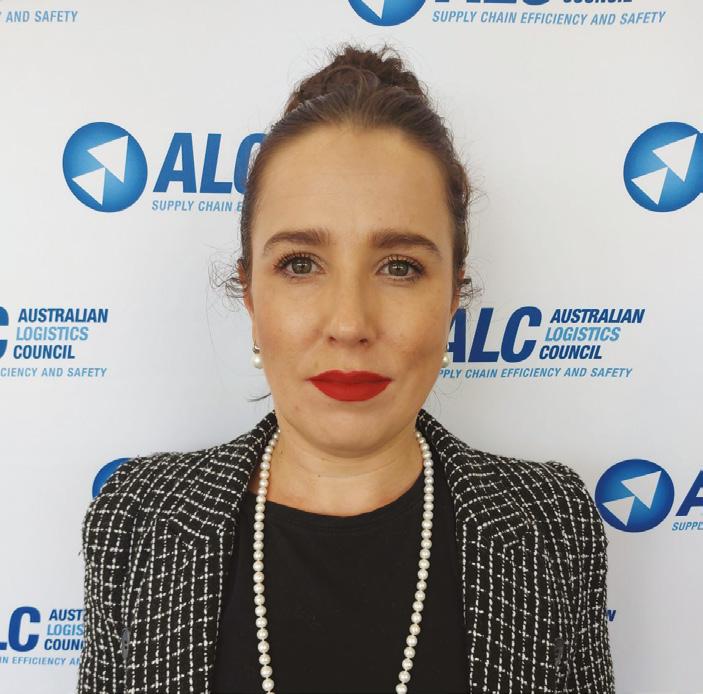
Rachel Smith
Head of Government and Policy, Australian Logistics Council (ALC)
Ms Smith joined the Australian Logistics Council in 2020 and currently holds responsibility as the Head of Government and Policy. She has over eleven years of experience in policy, membership, and strategic organisational roles. Her career expands working closely with multiple factions of State and Federal Governments as well as across a wide range of industry categories including engineering, housing, health, pharmacy, and supply chain.
Ms Smith was recognised for her success in project managing negotiations with the Commonwealth landing a record funding agreement of $25.303 billion for 5,800 small businesses around Australia whilst with the Pharmacy Guild of Australia.
Maxwell Shifman
National President, Urban Development Institute of Australia
Mr Shifman is Chief Operating Officer of Intrapac Property, one of Australia’s largest private developers. Mr Shifman’s focus is on the continued, successful delivery of Intrapac's project portfolio and the pursuit of new opportunities and growth. After studying Civil Engineering and Law at Monash University, his experience covers broad aspects of residential development from large-scale subdivisions, integrated townhouse developments and apartments.
Mr Shifman has spent six years on UDIA Victoria committees; four on Outlook, and two on Infrastructure & Urbanisation. He is the industry representative on the South East Water Customer Engagement Council and successfully lobbied for the formation of a SEW Industry Reference Group in early 2018.

5 INFRASTRUCTURE www.infrastructuremagazine.com.au June 2022 // Issue 23
$323.7 MILLION ECHUCA-MOAMA RIVER CROSSING NOW OPEN
The new $323.7 million Echuca-Moama Bridge project, the largest transport infrastructure project in northern Victoria and southern New South Wales, opened in April, months ahead of schedule.
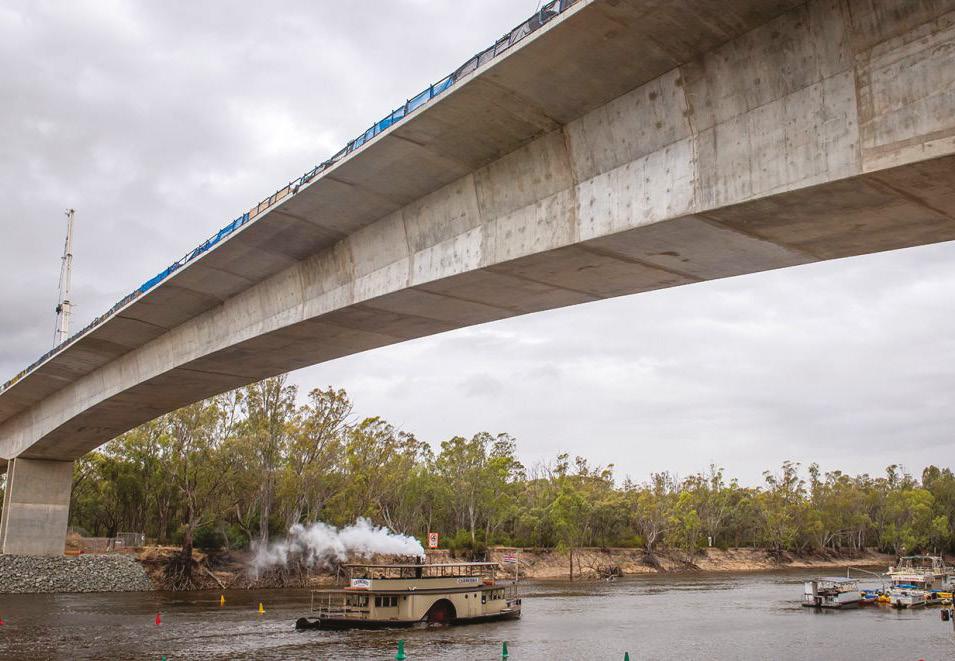
After more than 140 years with a single Murray River crossing, drivers and pedestrians will now enjoy safer and easier trips between the border towns
via a new river crossing connecting the Murray Valley Highway in Echuca, Victoria, with the Cobb Highway in Moama, New South Wales.
Deputy Prime Minister and Minister for Infrastructure, Transport and Regional Development, Barnaby Joyce, said the Echuca-Moama Bridge Project would deliver travel and economic benefits to the region.
“We fought for the funding for the new Echuca-Moama Bridge and we secured it. And now we’ve delivered the biggest transport infrastructure project this region has seen,” Mr Joyce said.
“This is a once-in-a-generation project that will transform this region, keeping commuters moving and freight flowing to our ports, helping our nation get paid for the products we produce.”
New South Wales Minister for Regional Transport and Roads, Sam Farraway, said one of the project’s most important
legacies would be creating a significant long-standing connection between New South Wales and Victoria.
“The new river crossing will provide an essential tourism link between Victoria and New South Wales, with the more than one million people who visit this popular tourist hot spot annually now able to commute between both towns far more easily,” Mr Farraway said.
“In addition to boosting tourism, the project has created more than 400 direct jobs and up to 1,100 indirect jobs, with many local businesses and suppliers employed to provide ongoing services.”
The Echuca-Moama Bridge has been delivered with construction partner McConnell Dowell with crews clocking more than 640,000 construction hours on Stage 3 of the Project alone. The Echuca-Moama Bridge Project is jointly funded by the Australian, Victorian and New South Wales Governments.
$538.5 MILLION CONTRACT AWARDED FOR SYDNEY METRO – WESTERN SYDNEY AIRPORT PROJECT
A$538.5 million contract for the Sydney Metro –Western Sydney Airport project has been awarded, the second major contract assisting the delivery of the rail project.
The contract has been awarded to a joint venture between CPB Contractors and Western Sydney group, United Infrastructure.
United Infrastructure is made up of three Western Sydney companies: Mulgoa Quarries, Burton Contractors and JK Williams.
The contract for Surface and Civil Alignment Works will provide a substantial job boost for the area, with more than 20 per cent of the workforce for this project coming from Western Sydney.
As work on this contract ramps up over 2022, 50 new jobs, including apprentices and trainees, will be created to support United Infrastructure in the construction of the new metro rail line.
The project will also source a minimum of 50 per cent Australian steel, including reinforcement on all three of the project’s major contract packages, which will be a further boost to jobs in Australia.
This contract includes construction of:
♦ 3.5km of elevated viaduct at Orchard Hills and Luddenham
♦ 6.7km of earthworks for track formation
♦ 190m long rail bridge over the new M12 motorway
♦ 20m long rail bridge within the airport
♦ Construction of temporary and permanent access roads
♦ Bulk earthworks for the stabling and maintenance facility site
The project will provide a significant boost for the region, supporting 14,000 new jobs, including 250 apprenticeships during construction.
The driverless 23km metro line will link St Marys to the centre of the new Aerotropolis at Bradfield via the new Western Sydney International (Nancy-Bird Walton) Airport. Six stations will also be built along the alignment.
The Sydney Metro – Western Sydney Airport project is jointly funded by the Federal and New South Wales Governments. The third and final major contract package to be procured for the project is expected to be awarded at the end of 2022.

6 NEWS
FEDERAL BUDGET 2022-23
INFRASTRUCTURE BREAKDOWN
The Federal Government has announced a record infrastructure investment in the Federal Budget, with $17.9 billion committed to new and existing infrastructure projects across Australia.
With investments in new and existing infrastructure projects in every state and territory, the Federal Government’s rolling ten year infrastructure investment pipeline will increase from $110 billion to over $120 billion, a new record that will support around 40,000 jobs.
Key new commitments funded in the 2022–23 Budget include:
♦ $3.1 billion in new commitments to deliver the $3.6 billion Melbourne Intermodal Terminal Package (VIC), including:
♦ $1.2 billion for the Beveridge Interstate Freight Terminal in Beveridge, taking the total investment to $1.62 billion
♦ $280 million for Road

Connections, including Camerons Lane Interchange, to the Beveridge Interstate Freight Terminal
♦ $740 million for the Western Interstate Freight Terminal in Truganina
♦ $920 million for the Outer Metropolitan Ring – South Rail connection to the Western Interstate Freight Terminal
♦ $1.6 billion for the Brisbane to the Sunshine Coast (BeerwahMaroochydore) rail extension (QLD)
♦ $1.121 billion for the Brisbane to the Gold Coast (Kuraby – Beenleigh) faster rail upgrade (QLD)
♦ $1 billion for the Sydney to Newcastle – (Tuggerah to Wyong) faster rail upgrade (NSW)
♦ $678 million for Outback Way (NT, WA, QLD)
♦ $336 million for the Pacific Highway – Wyong Town Centre (NSW)
♦ $336 million for the Tasmanian Roads Package – Northern Roads Package – Stage 2 (TAS)
♦ $200 million for the Marion Road –Anzac Highway to Cross Road (SA)
♦ $145 million for the Thomas Road –Dual Carriageway – South Western Highway to Tonkin Highway and interchange at Tonkin Highway (WA)
♦ $140 million for Regional Road Safety upgrades (WA)
♦ $132 million for Central Australian Tourism Roads (NT)
♦ $120 million for the Adelaide Hills Productivity and Road Safety Package (SA)
♦ $46.7 million towards the Athllon Drive Duplication (ACT)
For the full rundown of infrastructure funding, please visit infrastructuremagazine.com.au.

www.infrastructuremagazine.com.au June 2022 // Issue 23
7 NEWS
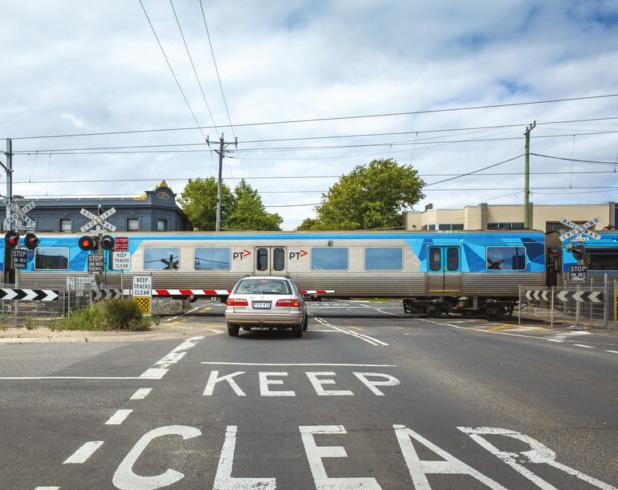
Victoria has achieved a number of new rail infrastructure milestones across level crossing removal projects and capacity upgrades for bigger trains.
CRANBOURNE: LEVEL CROSSING CONTRACT AWARDED
A construction contract has been awarded for the Camms Road level crossing removal project, which will bring the Cranbourne Line one step closer to being level crossing free by 2025 and allow trains to run every ten minutes during morning peak.
The level crossing will be removed by elevating Camms Road over the rail line, improving safety and easing congestion for the 12,000 drivers passing through each day.
The project will remove one of the last two remaining level crossings on the Cranbourne line a year ahead of schedule in 2024.
VIC HITS LEVEL CROSSING, CAPACITY UPGRADE MILESTONES
The $92 million works will be undertaken in a collaboration between Fulton Hogan Construction, Metro Trains Melbourne (MTM) and the Level Crossing Removal Project.
PRESTON: MILESTONES IN LEVEL CROSSING SITE WORKS
New milestones have been achieved in rail works in Preston to remove four level crossings and build the new Preston and Bell stations along the Mernda line.
The Level Crossing Removal Project construction team has continued work on the elevated rail line, installing more concrete segments and adding screens, balustrades and overhead power line structures.
The team has also installed the final concrete segment for the city-bound elevated structure. At Bell Station two lift shafts were recently installed. Each lift is more than 15m tall, 3.2m wide and weighs 11.5t.
NEW METRONET SITE WORKS UNDERWAY
METRONET has escalated works on Lakelands Station in Mandurah, Western Australia, a connection point between Warnbro and Mandurah stations, creating 200 construction jobs.
Works underway at the new Lakelands Station on the Mandurah line include station building as well as platform, bus interchange and car park works.
Lakelands Station will bridge the 23km distance between Warnbro and Mandurah stations, supporting the nearby growing suburbs of Madora Bay, Lakelands and Meadow Springs.
Jointly funded by the Western Australian and Federal Governments, the station is expected to open in 2023.
The cost of trips on the services will be greatly reduced after the Western Australian Government’s introduction of a two-zone fare cap.
Western Australia Premier, Mark McGowan, said, “The construction of Lakelands Station is progressing well, with thousands of people in surrounding suburbs set to benefit from this brand new station on the Mandurah Line.
“This major project bridges the gap between existing stations to provide convenient, affordable public transport options for these communities.
“Lakelands Station is just one of the 15 METRONET projects we are delivering – transforming Western Australia’s public transport network while creating thousands of local jobs.”
The lift shafts were manufactured in Dandenong South and painted in Laverton before being transported to Bell Station. The lift shafts will be craned into Preston Station later this year.
SUNBURY LINE: BOOSTED RAIL CAPACITY FOR BIGGER TRAINS
Round-the-clock upgrades to train substations on the Sunbury line –enabling bigger trains to run on the Sunbury Line and preparing for a future of turn-up-and-go train services – are now complete.
The upgrades will enable new highcapacity trains to run on the Sunbury line in the future, using smart signalling technology to safely travel closer together, meaning more trains, more often on the Sunbury line.
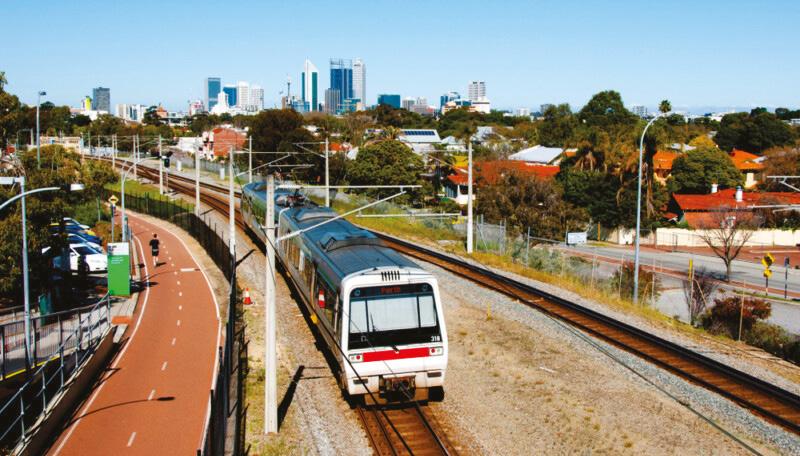
Work is underway to prepare the site for a major bridge lift next month, where the station’s 50 tonne, 15.5m long concourse bridge will be cranelifted into place.
As the station’s two train platforms begin to take shape, work to install the elevator shaft and 60 pre-cast concrete panels is also underway; this infrastructure will support the future station entry and bus interchange buildings.
Bulk earthworks are also continuing across the site to facilitate construction of the car park and the bus interchange. Track drainage works and the installation of below-ground stormwater pipework and electrical services are also progressing.
June 2022 // Issue 23 www.infrastructuremagazine.com.au
8 NEWS
INFRASTRUCTURE SUSTAINABILITY AWARD WINNERS REVEALED
Winners of the Infrastructure
Sustainability Council
Gala Awards have been announced, showcasing how the infrastructure industry continues to set new benchmarks in sustainability. The 2022 awards celebrated sustainability best practices across Australia and New Zealand.
AWARD WINNERS
Excellence in governance outcomes
Victoria’s Major Transport Infrastructure Authority (MTIA) North Western Program Alliance (NWPA) won the Excellence in Governance Outcomes Award for its governance framework, Power of the Program.
Excellence in social outcomes
A joint venture between CPB, BAM
Ghella and UGL Joint Venture won the Excellence in Social Outcomes Award.
The Tunnel, Station and Development (TSD) package of works for Cross River Rail is Queensland’s largest infrastructure project, requiring scarce specialist underground and civil rail skills.
Excellence in environmental outcomes
McConnell Dowell Decmil Join Venture (MCDDJV) with MTIA’s Major Roads Project Victoria won the Excellence in Environmental Outcomes Award for their joint project, the Mordialloc Freeway Project.
Excellence in economic outcomes
Global energy and infrastructure company, Acciona, won the Excellence in Economic Outcomes Award for its work on the Department of Infrastructure and Transport’s NorthHub.
Emerging leader
Rosie Dutton, Sustainability Manager at Acciona, won the Emerging Leader award, recognising her influence and contribution to sustainability outcomes.
Sustainability Champion
Pamela Simpson received the Sustainability Champion Award for fostering a strong sustainability culture
and integrating sustainability into infrastructure projects.
Outstanding individual contribution to the sector
Liz Root won the Outstanding Individual Contribution to the Sector Award for enhancing sustainability and championing social outcomes in the New Zealand construction sector.

Outstanding achievement – IS operations
Downer EDI Works won the Outstanding Achievement for Infrastructure Sustainability Operations Award for its North West Tasmania Road Maintenance Contract.
Outstanding achievement – IS design Arenco (NSW) won the Outstanding Achievement for Infrastructure Sustainability Design Award for the Rooty Hill Station upgrade and multistorey car park (NSW).
Outstanding achievement – IS As-built
The CTD Alliance (Acciona, CPB, Aurecon, WSP, MTM, LXRP) won the Outstanding Achievement for Infrastructure Sustainability As-Built Award for their work on MTIA’s Caulfield to Dandenong Level Crossing Removal Project.
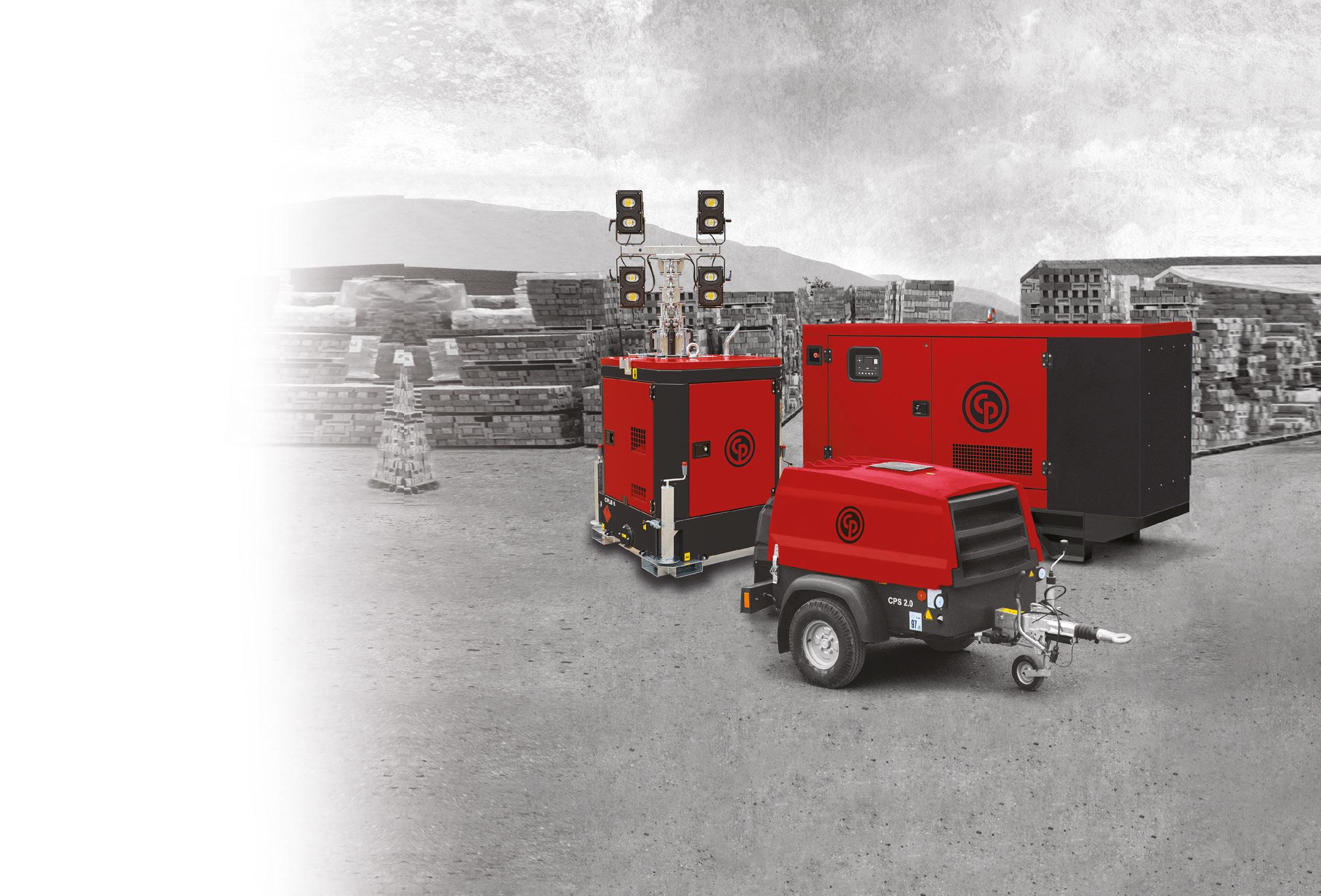

www.infrastructuremagazine.com.au June 2022 // Issue 23
AVAILABLE TO BUY OR RENT 9 NEWS
CONTRACT AWARDED FOR AUSTRALIA’S LARGEST TRAM PROJECT
The Victorian Government has awarded a contract to build 100 new and accessible trams as part of the $1.85 billion Next Generation Trams Project – the largest investment in locally-made trams in Australia’s history.
Bombardier Transportation Australia has been awarded the contract which will support thousands of jobs and improve access to Melbourne’s iconic tram network.
The project supports up to 1,900 local jobs in manufacturing, the supply chain, and the construction of a new purposebuilt depot and maintenance facility.
Victorian Premier, Daniel Andrews, said, “We’re proud to build trams and trains in Victoria, by Victorians
– supporting thousands of jobs and improving our public transport network.
“Whether it’s delivering the road and rail upgrades that will slash travel times, or building new trams, trains and buses to get people where they need to go –we’re getting it done.”
Following a competitive design and tender process, the proposed plans for the trams will be refined in consultation with key stakeholders including representatives from accessibility groups, passengers and tram drivers.
A local content quota of 65 per cent has been included as a requirement for the Next Generation Tram Project – the biggest for any train or tram project since rolling stock local content quotas were introduced.

The Next Generation Tram order will progressively replace some of Melbourne’s longest-serving high-floor trams to ensure the public transport network is accessible to all Victorians.
The Victorian Government has invested more than $7.5 billion in new and upgraded rolling stock and supporting infrastructure since 2015 to get people where they need to go safer and sooner.
GLADSTONE PORTS CORPORATION APPOINTS NEW CEO
Gladstone Ports Corporation (GPC) has announced its new Chief Executive Officer, who brings to the position extensive experience in civil engineering, national and international resources sectors.
Craig Haymes will take on the role of CEO in May 2022.
GPC Chair, Dr Anthony Lynham, said Mr Haymes had a reputation for leadership, business operations, project management, sustainability performance, corporate governance and all with a focus on environmental protection and maintaining a safe workplace.
“The Corporation is entering an exciting phase and we welcome Craig and his diverse experience,” Dr Lynham said.
“Our operations across the three ports of Rockhampton, Gladstone and Bundaberg are growing and diversifying at an extraordinary rate – hydrogen will be a fundamental part of our port in the near future but we also know
that coal and LNG exports will be here for decades to come.”
Dr Lynham said Mr Haymes had more than 30 years of experience in multinational companies including across Australia, Canada and the United States.
“He was most recently Executive Vice President with INPEX Australia, where he had a lead role in the $60 million INPEX Ichthys LNG Project in the environmentally sensitive area of Darwin Harbour and previously held Senior Executive positions with ExxonMobil in multiple regions and countries,” Dr Lynham said.
Dr Lynham thanked all involved in the selection process, noting nearly 60 applicants for the role and acknowledging GPC’s standing as one of the world’s finest seaport operators.
Mr Paul Heagney will continue as Acting CEO until Mr Haymes takes up office in May 2022.

June 2022 // Issue 23 www.infrastructuremagazine.com.au 10 NEWS

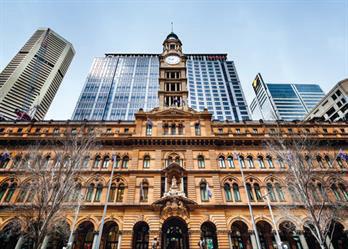


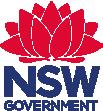





DOES IT COMPLY?
WHY INDEPENDENT PRODUCT TESTING MATTERS
To give the construction industry total confidence in its product performance, Fosroc ANZ has embarked on a major program of independent testing.
Colin Picton, ANZ Specification Manager for Waterproofing and Sealants, said that as part of the DuluxGroup, Fosroc ANZ will not state that its products comply with a particular standard unless it has had independent testing.
He encourages product specifiers and buyers to look closely at technical data sheets (TDS) and question where the test data has come from.
"It might say the material complies with a certain standard, but is the manufacturer relying on its own internal data? We believe the market can have more confidence in external independent testing,” Mr Picton said.

QUALITY ASSURANCE
Fosroc ANZ commissions testing from reputable third parties, including the Australian Water Quality Centre (AWQC), AWTA, Boral, Safe Environments, Cetec, Geotherm Australasia, CSIRO and BRANZ.
“The emphasis on quality is increasing across the construction industry,” Mr Picton said.
In New Zealand, BRANZ approval has become increasingly valued by architects specifying construction products. Meanwhile, in Australia, New South Wales introduced a Building Commissioner and the Construct NSW strategy in 2019, with a view to ‘improving the quality of construction of residential apartment buildings and restoring trust in the industry’.
“Fosroc ANZ is being proactive and doing the due diligence,” Mr Picton said.
"We won’t claim a product complies with a standard just because we believe it complies. We prove compliance with an independent testing certificate."
KEY PRODUCTS TESTED TO INDUSTRY STANDARDS
Independent testing is either complete or underway for more than 50 Fosroc ANZ products and systems. The following will be of particular interest in relevant industries.
♦ Concrete repairs and potable water
Some of its most popular concrete repair products have been tested and certified to AS/NZS 4020 for potable water applications, including Renderoc HB40, HB70 and LA55.
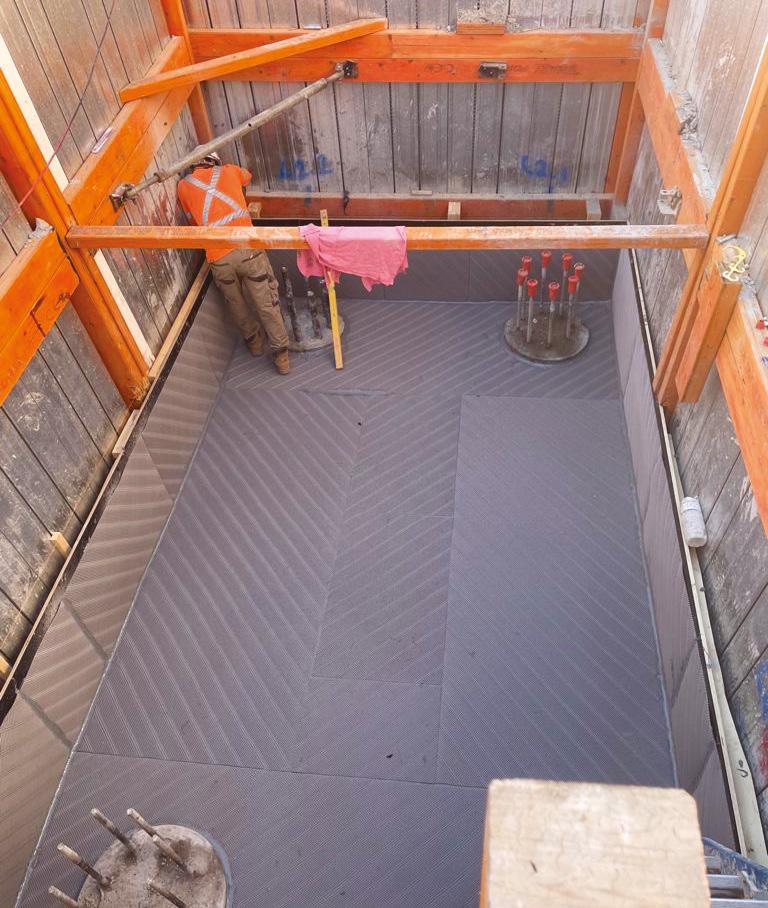
♦ Industrial flooring
With testing either underway or completed for most of its Nitoflor range, Nitoflor is the ideal choice to achieve AS 4586 Slip Resistance and AS 9239.1
Critical Radiant Flux.
♦ Food-safe flooring
For the food and beverage industry, many products in its Nitoflor range have HACCP Certification.
♦ Fire rated sealants
Fosroc's Flamex sealants are tested to AS 1530.3 and AS 1530.4 Fire Resistance.
♦ Waterproofing
Its Nitoproof liquid waterproofing membranes meet internal and external waterproofing standards, with testing complete or underway for AS/NZS 4858
Wet Area Membranes and AS 4654.1
External Above-ground Membranes. For potable water applications, Polyurea WPE110, Nitoseal PU400, Nitoseal SC600 and Nitocote EP405 are all certified to meet AS/NZS 4020.
♦ Diffusion resistance with Dekguard
Fosroc's elastomeric protective coatings are being tested for Chloride Ion Diffusion Resistance and Carbon Dioxide Diffusion Resistance.
♦ Curing compounds
Its concure range of curing compounds are certified to AS3799 Liquid membrane-forming curing compounds for concrete.
June 2022 // Issue 23 www.infrastructuremagazine.com.au
12 NEWS // SPONSORED EDITORIAL
For more information and to download Fosroc test certificates visit fosroc.com.au.
DELIVE r ING OUTCOMES: A 10-YEAR INDUSTRY ROAD MAP
by Peter Colacino, Chief of Policy and Research, Infrastructure Australia
Infrastructure planning, decision-making and delivery consistently falls short of best practice in Australia.

June 2022 // Issue 23 www.infrastructuremagazine.com.au
A WORD FROM INFRASTRUCTURE AUSTRALIA 14
Procurement and contracting arrangements are driving poor investment outcomes, a lack of project coordination is creating capacity constraints, and the potential of digital transformation remains unharnessed.
Our national sector is one of only a handful with declining productivity.
It has amongst the lowest rates of technology and digital adoption, the highest rates of suicide and, with only 12 per cent women, has the lowest rate of female participation of any sector in Australia.
Declining productivity, cost overruns, skills and resource gaps, declining profitability, and growing insolvency are just some of the immediate challenges underpinning the burning platform for infrastructure transformation.
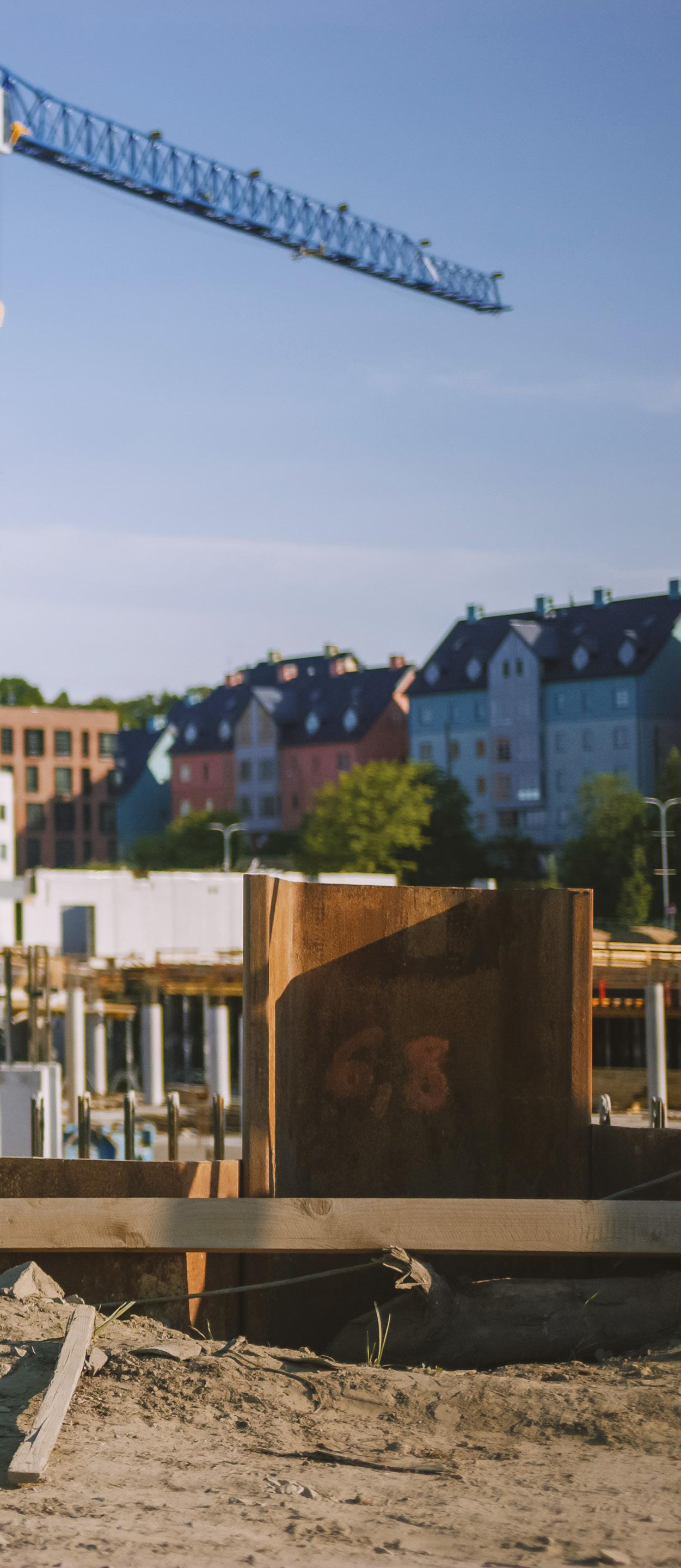
If
With a record $225 billion in major infrastructure investments committed by governments across the country between now and 2023-24, as well as investments being planned and delivered by the private sector, it is vital that infrastructure is planned, sequenced, procured and delivered effectively to ensure we reap the economic and social benefits.
To that end, Infrastructure Australia recently released Delivering Outcomes, a 10-year road map to a more productive and resilient future for our industry.
It is a comprehensive action plan, supported by the 2019 Australian Infrastructure Audit, 2021 Australian Infrastructure Plan and 2021 Infrastructure Market Capacity Report
THE POWER OF COLLABORATION
Reform is necessary for our sector to be able to withstand disruptions, be financially flexible and resilient, and continue providing the high-quality infrastructure that communities expect.
Our recommendations are informed by extensive industry engagement and focus on seven key areas – outcomes for people and places; systems; digital transformation; collaboration and integration; commercial alignment and optimisation; innovation, and people wellbeing and resilience.
If adopted, the reforms in Delivering Outcomes will improve the sector’s productivity and resilience by lifting capacity and capability, promoting innovation, and embedding sustainability.
For reform in these areas to be accepted and successful, we must be committed to change, especially changing behaviours, to build respect and the conditions that encourage collaboration.
We need to work together, and industry is critical in driving this sector-wide reform.
People are the foundation for any successful business and a flourishing infrastructure sector. If we always do what we’ve always done, 105,000 roles will go unfilled over the next four years.
We need to attract more people to our industry by being fair, diverse, and inclusive. We must establish workplaces
where everyone has equivalent access to resources, opportunities, career progression, rewards and benefits.
This powerful trio – equality, diversity and inclusion – helps create high-performing, innovative and supportive work environments where creativity, problem-solving and decision-making increase.
The Culture Standard, led by the Australian Constructors Association and the New South Wales and Victorian governments, with its focus on wellbeing, time for life and diversity, provides a framework for how industry can support a positive cultural shift in our sector.
THE CASE FOR GREATER DIVERSITY IS CLEAR
Genuinely diverse and inclusive workplaces consistently report higher people engagement, resilience, productivity and performance.
By taking deliberate and meaningful steps to address the working needs of women, for example, we can unlock additional capacity to deliver the record infrastructure pipeline and support Australia’s long-term prosperity.
We want to see a proactive and systemic approach to achieving health, safety and wellbeing outcomes adopted across the sector.
To attract and nurture a diverse and inclusive workforce, organisations need to establish and systematically pursue targets around equality, diversity and inclusion.
The Australian Constructors Association, Consult Australia, Australasian Railway Association, Civil Contractors Federation and Roads Australia are some of the organisations lending their voice to support the need for a step change in our culture and increased diversity across the sector.
Industry leaders need to champion equality, diversity, and inclusion across the infrastructure sector. The infrastructure sector is known as ‘a hard place to work’ and we know that cultural change is needed.
Everyone – regardless of their background, religion, culture, age, gender and other differences – is welcome in infrastructure.
www.infrastructuremagazine.com.au June 2022 // Issue 23 A WORD FROM INFRASTRUCTURE AUSTRALIA 15
you have a suggestion on improving equality, diversity or inclusion in our industry or any other focus area in Delivering Outcomes, we welcome your feedback via www.infrastructureaustralia.gov.au/publications/delivering-outcomes until 27 May 2022.
GOVERNMENT PROCUREMENT: A SOVEREIGN SECURITY IMPERATIVE
 by Chris Melham, Chief Executive, Civil Contractors Federation National
by Chris Melham, Chief Executive, Civil Contractors Federation National
On the last day of the 46th Parliament before the federal election, hours before the House of Representatives rose, a report titled Government procurement: A sovereign security imperative was tabled in Federal Parliament.
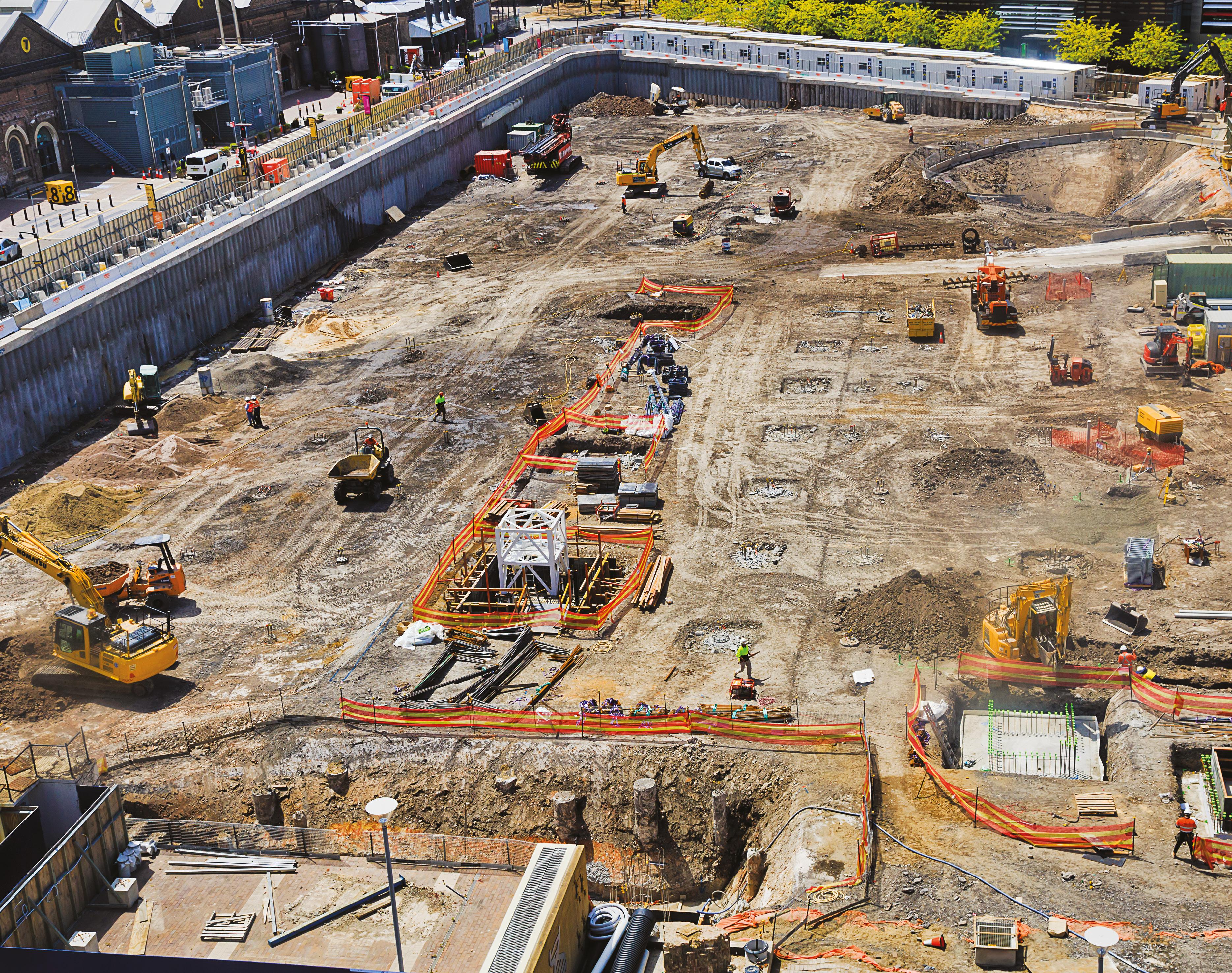
A WORD FROM CCF 16
Given the timing of its release, the report probably didn’t receive the prominence it deserved, which is unfortunate given how important the topic is to Australia’s economic future.
The final report was almost ten months in the making, received more than 60 submissions and heard from more than 40 organisations, including the Civil Contractors Federation (CCF).
This report is incredibly timely given the allocation of a record level of taxpayer federally funded infrastructure investment of $120 billion over the next ten years as announced in the 2022/2023 Federal budget.
It is essential that this funding commitment is accompanied by policy and procurement reforms to maximise returns to the Australian economy.
The report is extensive, well considered and makes a number of recommendations which have the potential to significantly enhance the sovereign capability of the Australian industry.
Its in-depth analysis of the challenges and opportunities facing Australia’s infrastructure industry should underpin future policy reform in the procurement of government-funded infrastructure.
A BALANCED AND EQUITABLE PROCUREMENT FRAMEWORK
The thrust of the final report was clear and summed up well by Committee Chair John Alexander OAM when he said in his tabling speech to Parliament:
“The lack of long-term planning for major infrastructure projects has resulted in a piecemeal, ad hoc and reactive delivery process which thwarts the development of efficiencies in the construction industry that could be attained if there were a steady pipeline of projects available.”
Mr Alexander’s fellow committee member, Luke Gosling, hit the nail squarely on the head when he said during the tabling debate:
“I did want to point to recommendation six, which sees increasing access to Commonwealth funded projects for tier 2 and tier 3 companies and related Australian small and medium enterprises. That's how we will build the capacity of our nation to provide jobs for our own people but also to make sure that more taxpayer funds stay in Australian companies, developing them up through the tiers.”
It is pleasing to note that this report has bipartisan support from both the Labor Party and the Coalition which we hope will lead to real action to address the recommendations contained in the report.
CCF lobbied hard for a report such as this to analyse how we can improve how government infrastructure is undertaken. For example, procurement reform was a centrepiece of our 2021 report Rebuilding Australia – A Plan for a Civil Infrastructure Led Recovery
The CCF report found that for every $1 million invested in the civil construction industry:
♦ 7.2 workers are employed in the construction and related industries
♦ $2.95 million of output is contributed to the economy
♦ $1.3 million is contributed to Australian GDP
A balanced, sustainable and equitable procurement framework pertaining to all levels of government is needed to ensure these economic and employment benefits are achieved.
INCREASING ACCESS FOR TIER 2 AND 3 COMPANIES
CCF’s submissions to the Committee focused on measures to achieve a more balanced approach to project allocation to the respective tiers which will result in additional benefits to the community including, higher local employment opportunities, increased and upskilled local workforce, higher economic growth in the local community, and improving Australia’s sovereign capability
The Committee’s recommendations directly address many of the key challenges and opportunities in the procurement of government funded infrastructure, and in many respects, they pick up on a number of recommendations CCF provided the Committee.
In particular, CCF welcomes the Committee’s recommendation that states: “the Committee sees that increasing the access of tier two and three companies, and related Australian small and medium enterprises, to projects in the Australian infrastructure pipeline as key to enhancing Australia’s sovereign industry capacity.”
CCF also welcomes the Committee’s recommendation for the Australian Government to: “… investigate, in consultation with state, territory and local governments,
and relevant industry bodies and stakeholders, how to facilitate better planning and coordination of the infrastructure pipeline.”
CCF’s supplementary submission to the Committee stressed the need for a formal consultative mechanism involving key civil industry representative bodies, federal and state government infrastructure and policy agencies.
As acknowledged by the Committee, there would be significant value in establishing a formal mechanism, such as a ‘Civil Infrastructure Consultative Forum’ to facilitate a two-way dialogue between industry and government on critical civil infrastructure matters such as investment, procurement and enhanced skills development and training.
CCF is therefore pleased that the Committee has embraced CCF’s recommendation to improve industry and government collaboration.
TURNING RECOMMENDATIONS INTO ACTIONS
A special acknowledgement needs to be paid to former Committee Chairman, John Alexander OAM.
Mr Alexander has been a tireless advocate for the potential of infrastructure in Australia and this report reflects his commitment to improve how governments identify, procure and deliver infrastructure projects.
Whilst it is positive that the report has been tabled, it is hardly a job done. Rather, the hard work starts now.
It is imperative that this report does not gather dust on the shelves like so many others that have come before it on the necessary steps to improve how government funded infrastructure is procured and delivered.
For too long, good intentions have not turned into actions. This includes, for example, reports from government bodies like Infrastructure Australia, as well as numerous reports from industry such as CCF.
CCF calls on all tiers of government to work with industry to progress the Committee’s infrastructure procurement reforms which are critical to building a stronger, more sustainable civil construction industry.
www.infrastructuremagazine.com.au June 2022 // Issue 23 A WORD FROM CCF 17
HIGHLIGHTS FROM THE 2022 CRITICAL INFRASTRUCTURE SUMMIT
Infrastructure magazine’s Critical Infrastructure Summit, held on 6-8 April, brought together the biggest names in infrastructure for three days of thought-provoking discussion.
The 2022 event featured three virtual conferences:
♦ Critical Infrastructure: State of Play – 6 April
♦ Asset Management for Critical Infrastructure – 7 April
♦ Future of Infrastructure – 8 April State of Play was the Summit keynote session exploring the biggest issues currently facing Australia’s critical infrastructure; Asset Management for Critical Infrastructure took a deep dive into the most pressing challenges and opportunities in asset management; and Future of Infrastructure looked at what’s next for the industry – from digital infrastructure, the circular economy, skills, funding, future sector trends and more.
More than 550 infrastructure professionals registered for the Summit and all three conferences provided fascinating discussions concerning the challenges that the sector is currently facing and what needs to be done in the future.
CRITICAL INFRASTRUCTURE: STATE OF PLAY
The first conference in this year’s Summit set the scene for what the current state of Australia’s infrastructure industry looks like.
The session kicked off with Peter Colacino, Chief of Policy and Research at Infrastructure Australia, delivering the keynote presentation.
Mr Colacino is one of the leading voices in Australian infrastructure and
is responsible for driving Infrastructure Australia’s transformative policy and research agenda across sustainability, resilience, place-making, industry productivity and infrastructure planning.
He led the delivery of the landmark 2021 Australian Infrastructure Plan, 2019 Australian Infrastructure Audit and the inaugural Market Capacity Program
In his presentation, Mr Colacino explored Infrastructure Australia’s new report Delivering Outcomes: A roadmap to improve infrastructure industry productivity and innovation
Infrastructure Australia developed this report to support policy makers, infrastructure owners, delivery agencies and the broader industry to improve productivity and provide clear priorities for innovation, and the models to embrace it.
You can read more about Delivering Outcomes in this issue of the magazine on page 14.
Critical Infrastructure Summit Partner, Axis Communications, also delivered an insightful video presentation looking at industry trends within the critical infrastructure space, use cases and how Axis products contribute to creating a safer, smarter world.
A single, smart surveillance system from Axis can go far beyond physical security and addresses all key aspects of critical infrastructure protection, from ensuring a safe workforce and environment to uninterrupted operation and secure sites.
Advanced intelligence like AI can be employed by Axis to enhance and optimise all aspects of video surveillance performance, from camera configuration to image quality to analytics to protect your critical assets.
You can find out more about Axis at www.axis-communications.com/ criticalinfrastructuresummit2022.
The second speaker was Rachel Smith, Director Policy and Advocacy, Australian Logistics Council.
Australia’s supply chain has gone through major upheaval in recent months so it was valuable to have Ms Smith explore all aspects of the logistics and freight sector at the Summit.
Ms Smith’s presentation discussed the sector’s current challenges and opportunities, as well as issues around sustainability, training and skills. You can read a full rundown on her presentation on page 64.
We were also lucky enough to be joined by Simon Gandy, Chief of Infrastructure at Melbourne Airport.
Mr Gandy discussed the critical infrastructure needed for airports as the country emerges from COVID-19 lockdowns and the importance of having the right infrastructure at the right time.
He also gave delegates more information about future plans for Melbourne Airport, including the proposed third runway. A summary of Mr Gandy’s presentation is available on page 28.
June 2022 // Issue 23 www.infrastructuremagazine.com.au
INDUSTRY INSIGHTS 18

Rounding out the State of Play conference on day one was the anticipated industry panel session The last six months in the infrastructure industry. The panellists included Jon Davies, CEO of the Australian Constructors Association; Dr Kim Houghton, Chief Economist at Regional Australia Institute (RAI); and Sam Wiffen, CEO and Managing Director at Reveal.
Panel topics ranged from federal funding for projects, the industry’s market capacity and productivity, skills and training, the technologies having the most impact, Probuild and the growing trend of construction sector insolvencies, subsurface infrastructure risks, and more.
This was a fascinating discussion as our panellists did not hold back regarding the current state of the sector and the important reforms that are desperately needed.
Panellist Sam Wiffen from Reveal, who sponsored the panel, said the world of underground infrastructure is plagued with uncertainty, resulting in costly delays, workplace injuries, and billions of dollars of wasteful spending annually.
“Reveal is creating the ‘Google Maps of the subsurface’ – a digital twin of the subsurface to help cities see clearly into the underground realm for the first time,” Mr Wiffen said.
“Our solution is breaking out the siloed data, fixing errors and filling in the gaps with hard science, so planners can act with confidence and deliver a more efficient and sustainable world.”
ASSET MANAGEMENT FOR CRITICAL INFRASTRUCTURE
The second Summit conference was one that has been running for many years, both in person and online, and that was Asset Management for Critical Infrastructure. This is always a popular event as it covers many different industries including water, energy and road, and provides delegates with tips and advice they can take back to their own organisations and asset management strategies.
The companies that helped support this event included Session Partner Nozomi Networks, Major Sponsor EKA CyberLock and Panel Sponsor Copperleaf.
Nozomi Networks said the protection of industrial assets is crucial for both commercial and national security reasons.
“The rise of connected assets is providing an entry point into new areas, such as smart cities. The increasing exposure of critical assets has led industrial corporates across water and electric utilities, manufacturing, healthcare, and oil & gas to quickly seek new solutions.
“The secret to staying one step ahead is gaining complete visibility into your IoT, OT and IT networks. This allows you to monitor and catch anomalies before they do any damage to your network, your business and your reputation.”
You can find more information about Nozomi Networks at www. nozominetworks.com

www.infrastructuremagazine.com.au INDUSTRY INSIGHTS 19
Industry panel – The last six months in infrastructure. Left to right: Jessica Dickers, Sam Wiffen, Kim Houghton and Jon Davies.

Dr Jonathan Spear, Chief Executive Officer at Infrastructure Victoria, delivered the keynote presentation; looking at how to maintain infrastructure assets in a time of transformational change.
Mr Spear said infrastructure asset owners must prepare for multiple challenges over the next three decades including a growing and aging population, technological transformation, a warming climate, and worsening congestion on our transport network.
In his presentation, Mr Spear outlined recommendations within Victoria’s infrastructure strategy (2021-2051) which supports the development and maintenance of the state’s critical infrastructure – including transport, energy, water and telecommunications –in a time of transformational change.
Major Sponsor EKA CyberLock also delivered a video presentation and said they are passionate about securing critical infrastructure assets to ensure we, as a nation and a community, are protected.
“We had the privilege to be the Asset Management for Critical Infrastructure Major Sponsor once again. EKA CyberLock have been working with major critical infrastructure organisations for over 20 years and have secured thousands of facilities including electrical substations, water reservoirs, commercial buildings, telecommunication towers, airports, universities, data centres, and many more assets.
“We’ve taken the concept of a master key system and revolutionised it with our fully electronic electro-mechanical master key system, which requires no batteries, no power, and no Wi-Fi in the lock.”
If you’d like to know more about EKA CyberLock, visit www.ekacyberlock.com.au.
Representing the energy sector and its asset management strategies was Joshua Thomas, Manager Asset Management Framework at Essential Energy.
Essential Energy recently achieved its three-year accredited certification to ISO 55001 for its Asset Management
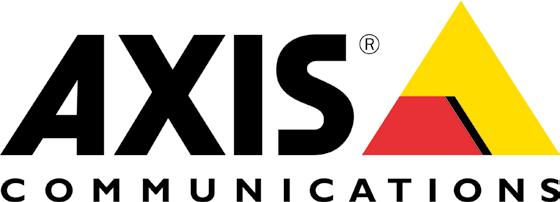
System. At the Summit, Mr Thomas detailed the utility’s work in developing asset management capabilities and network and asset class strategies that meet both customer and stakeholder expectations, now and into the future.
We were then joined by asset management leaders for the industry panel session, to discuss making the most of data in asset management.
The three panellists were:
♦ Mark Simister, Head of Program Delivery at Sydney Water
♦ Julian Watts, Director, Engineering & Asset Management at KPMG Australia
♦ Tim Mumford, Business DirectorDigital and Innovation at Beca
We were fortunate to have a guest moderator for this panel session, Boudewijn Neijens, Chief Marketing Officer at Copperleaf, who sponsored the panel. Mr Neijens led an in-depth discussion that covered everything from changes in asset management, impactful uses of data, how to allow for more informed decision-making, to skill gaps, cyber security, holistic digitally enabled asset strategies, and more.
Mr Neijens said it was a great panel discussion centred around the growing role of data in asset management.
“We explored the key opportunities and risks – all the way from the adoption of digital spines to the importance of retaining ‘grey hair’ talent in a digitallyenabled workplace. Tim, Julian and Mark are true experts and their insights were invaluable,” Mr Neijens said.
More information about Copperleaf can be found at www.copperleaf.com.
The final speaker for the day was Professor Jayantha Kodikara, Director, ARC Smart Pavements Hub – SPARC, Department of Civil Engineering, Monash University, who gave a fantastic presentation on the smart management of transport pavements.
FUTURE OF INFRASTRUCTURE
The third and final conference in the Summit was the Future of Infrastructure. While State of Play took a wider lens at the current state of the sector, and Asset Management for Critical Infrastructure focused on the more technical aspects of asset management, Future of


www.infrastructuremagazine.com.au INDUSTRY INSIGHTS 20

Infrastructure was all about what’s next and what can be done now to meet the future project pipeline.
Keynote speaker Chris Melham, CEO of the Civil Contractors Federation (National), opened the conference with a presentation about a civil infrastructure led economic recovery for Australia.
Mr Melham has more than 30 years of experience as an industry advocate within the not-for-profit industry association sector, and has represented a number of industries at state, federal and international levels including agriculture, transport and logistics, and currently the Australian civil infrastructure sector. He had some great insights into what’s next for the sector, which provided a great foundation for the day’s conversations.
The second speaker was Andrew Curthoys, Digital Relationship Manager at Cross River Rail (CRR), who explored the transformative rail project and the digital technologies it is using in the planning and construction, including digital twins.
Mr Curthoys’ role at CRR is responsible for the integration of the project’s digital elements and data, and he has become recognised as a thought leader in digital
enablement, digital policy development and digital application. This presentation also had fantastic video elements that showed exactly what parts of the project will look like once completed.
Representing the telecommunications sector in the program was Louise Hyland, CEO of the Australian Mobile Telecommunications Association (AMTA), who spoke on 5G and the enormous opportunities for accelerated adoption across key industries where infrastructure plays a key role.
We then got an insight into another one of Australia’s significant rail projects, METRONET, with Ashley Vincent, METRONET Managing Director, providing an update on the groundbreaking project.
As with the previous two conferences, Future of Infrastructure also ran an industry panel session, and this one explored how we can change construction culture.
Culture is no longer an afterthought or something thought to be outside the scope of assets and projects – it is a critical component of the infrastructure sector’s ability to run effectively and meet demand. Currently the infrastructure industry is facing
challenges around diversity, accessibility, and burnout from excessively long working hours.
This panel explored these issues and what we can do to improve industry culture, with panellists including:
♦ Gabrielle Trainor, ChairConstruction Industry Culture Taskforce (CICT)
♦ Lisa Hogben, Package Director – Melbourne Airport Rail, Metro Trains Melbourne
♦ Naomi Frauenfelder, Chief Executive Officer - Healthy Heads in Trucks & Sheds
This was a standout from the Summit program as the issues around culture are not only important to ensure the sector is an attractive one to work in, but also because it impacts the industry’s ability to realise the current significant pipeline of infrastructure investment.
The panel discussion covered everything from barriers when it comes to diversity, impact to infrastructure productivity, workers mental health and wellbeing in the freight and logistics sector, the key recommendations from the Construction Industry Culture Taskforce’s Culture Standard, the new Building Equality Policy, and the role of procurement in culture change, among other topics.
The Summit then wrapped up with a presentation from Katie Yates, Manager of Energy Policy at AusNet Services. With major energy sector transitions underway, it was great to hear an analysis of what needs to be done moving forward to facilitate this, including the importance of the transmission network, specifically from a Victorian perspective.
Infrastructure magazine would like to thank all of the speakers involved in this year’s event who provided insight into these topics, and all of the sponsors –Axis Communications, Reveal, Nozomi Networks, EKA CyberLock, Copperleaf, and BSI.
All of the presentations and panel sessions from the 2022 Critical Infrastructure Summit are available to watch on-demand for registered delegates. To register for free and gain access to the recordings, please visit www.critical-infrastructure.com.au.



www.infrastructuremagazine.com.au June 2022 // Issue 23 INDUSTRY INSIGHTS 21
Industry panel – Changing construction culture. Left to right: Jessica Dickers, Lisa Hogben, Naomi Frauenfelder and Gabrielle Trainor.
FROM ADVOCACY TO IDEAS

INDUSTRY INSIGHTS 22
 Tby Jon Davies, CEO, Australian Constructors Association
Tby Jon Davies, CEO, Australian Constructors Association
The Australian Constructors Association believes that the industry already knows the problems that are hindering productivity and progression of our major pipeline of work, but now is the time to actually do something about it. Its solution is the Future Australian Infrastructure Rating – FAIR – a new ratings scheme to help realise reform.
he Australian Constructors Association is unique in that it is the only national association that is purely focused on advocating on behalf of the main contractors operating in all three sectors of the construction industry: horizontal, vertical and construction services.
All of our members are large enough not to require any assistance with their day-to-day business operations. Instead, they want Australian Constructors Association to provide a collective industry view on contemporaneous issues and to advocate for changes that will make the industry more sustainable.
Over the last 18 months we have been busy doing just that. Amongst other things, we published a framework for a sustainable industry, made submissions to numerous state and federal procurement inquiries, and played an active role in keeping the industry safe and running during the COVID pandemic. But many problems still exist.
Our industry accounts for 25 per cent of all insolvencies in Australia, women make up only 12 per cent of our workforce, and our workers are six times more likely to die from suicide than a workplace incident. It is therefore unsurprising that we are struggling to attract and retain enough people to construct the record pipeline of work ahead of us.
In fact, Infrastructure Australia has estimated a shortfall of 105,000 people in the next 18 months. The thing is, we all know about these problems and have for some time. They are reflected in construction productivity growth, which has not grown in 30 years!
We do not need any more advocacy on the need for change. We all largely agree on the problems and the solutions. What is needed now are ideas that can bring about change and bring it about quickly. Ideas that have the support of stakeholders right across industry.
The Australian Constructors Association has developed such an idea, we have consulted widely on it, and we have strong consensus that if implemented it will substantially improve the productivity and sustainability of the construction industry.
FAIR IDEA
The idea is FAIR – the Future Australian Infrastructure Rating. It is a mechanism to realise reform recommendations from across industry including the nation’s infrastructure advisor, Infrastructure Australia.
FAIR provides a way for the Federal Government, as the bank roller of major projects, to coordinate and incentivise
reform in a consistent way across state governments. And it is simple. It does not require any major change in existing federal governance processes or increased Commonwealth involvement.
Ratings get results. FAIR builds on the success of ratings schemes like NABERs, Green Star and the IS Rating to rate government funded projects on how well they performed against a range of key reform areas such as improved productivity, increased innovation and improved sovereign capability.
Federally funded projects undertaken by state government delivery agencies would be given a rating that would be published, leading them to strive for increasingly better outcomes for their stakeholders.
Just like people who look at restaurant ratings, contractors wanting the opportunity to demonstrate their capabilities would look at state government agency ratings when choosing where to focus their best resources, providing another reason for government delivery agencies to collaborate with industry to drive improved outcomes.
The FAIR initiative could be included in the next iteration of the National Partnership Agreement as a requirement for all federally funded projects. To further incentivise quality outcomes, high ratings could unlock access to new funding pools similar to the previous Asset Recycling Scheme.
GOVERNMENT AND INDUSTRY SUPPORT
All things point to FAIR. Reports like Infrastructure Australia’s Delivering Outcomes and the recent findings from the Federal Government procurement inquiry explain why the industry has struggled to change.
The Federal inquiry made a clear recommendation to establish a mechanism to monitor and rate project performance and verify value for money. That mechanism is ready – it’s FAIR!
FAIR has widespread support from government and industry. All agree FAIR has significant merit on the basis that it provides a way for the Federal Government to get more involved in reform of how projects are procured and delivered without interfering at a detailed level.
We have an opportunity to recalibrate the industry so that it is innovative and able to deliver the infrastructure that Australia needs – when it needs it – for a price that it can afford. We have identified the problems and come up with a solution, it is now time for the Federal Government to get on board!
www.infrastructuremagazine.com.au June 2022 // Issue 23
INDUSTRY INSIGHTS 23
AT THE HEART OF AUSTRALIAN INFRASTRUCTURE
by Melissa

It may not be the first thing you think about on site, but geospatial data and technology (information or tools about land or location) are playing a critical role in the delivery of our infrastructure programs.
Geospatial intelligence underpins all decisions that involve putting the right project or asset in the right place, as well as critical insights through the entire lifecycle of a project.
Geospatial technology includes our country’s global navigation satellite system (GNSS) and continuously operating reference station (CORS) infrastructure, which is used by construction and earth moving equipment to dig tunnels and roads and build bridges with incredible precision. All infrastructure is designed and delivered to a single height standard across Australia using geospatial data based on mean sea levels, known as the Australian Height Datum. This ensures consistency in heights and reduces cost and risk for new structures.
In each state, property boundaries can be determined because of the millions of plans of subdivision that form our authoritative mapbase, called the cadastre, which is the basis upon which all property boundaries can be determined, and land can be confidently bought, sold and valued.
UNDERRATED LOCATION BASED SERVICES
Things we take for granted, such as street names and numbers, are geospatial datasets and the basis for so much service delivery and wayfinding from one place to another. Geolocated aerial imagery is used across the entire lifecycle of infrastructure delivery including planning, design and even remote site supervision enabling teams to collaborate on projects, without leaving the office.
Infrastructure programs are driving economic recovery in Australia and around the world, and geospatial technology is powering them.
Humans have always relied on maps and charts to navigate from one place to another. Over time this has evolved to become a complex foundational web of critical datasets and services that now underpin almost everything we do, and seamlessly provide location-based information to almost every person in Australia every day.
However, many people are unaware of how essential geospatial information is in our daily lives. Google recently
announced that there are one billion users every month on Google Maps. Location-based services are now so ubiquitous that the underpinning technology, data and expertise that produce these services is almost taken for granted. Even our basic human rights have been fundamentally linked to geospatial information and achievement of the UN’s Sustainable Development Goals.
SUPPORT DURING COVID-19
Fortunately, the digital revolution and government investment at all levels in the modernisation of geospatial data and technology, as well as critical land services, is driving huge efficiencies and innovation and providing critical support for the Australian economy.
It’s no coincidence that the Australian property market has been able to function so seamlessly over the past two years. This is the result of years of investment in digital transformation by successive governments at all levels to support secure land registries in Australia, and their transition towards electronic conveyancing.
June 2022 // Issue 23 www.infrastructuremagazine.com.au GEOSPATIAL
FOUNDATIONS
INDUSTRY INSIGHTS 24
Harris, Chair, Australia and New Zealand Land Information Council (ANZLIC)
High density point clouds of features in Melbourne's south-eastern suburbs create a 3D data model including heights. This data can be explored as a fly-though, transformed or colour coded to provide new insights. Image credit: Victorian State Government.
In Victoria, over 90 per cent of the one million property transactions carried out in 2021 were fully automated and conducted in near real time from a vast distributed network of remote working locations.
As a result, the buying and selling of land continued throughout the pandemic, providing essential support for the construction industry, major infrastructure projects and the community more generally.
THE POWER OF GEOSPATIAL
States are investing significant funds into digitising their cadastre and providing enhanced information about land in a digital format. This is increasing the usefulness and accuracy, making it easier and quicker to update, and opening the door for new innovation like digital twins.
Of course, the cadastre is constantly changing as a result of new subdivisions, which are now also moving towards fully digital processing. Plans of subdivision can now comprise thousands of lines of computer code that can be visualised as a physical plan, through a mobile phone using augmented reality, or used to support automated assessment and processing.
This has the potential to save huge amounts of time and money for government, as well as development industry customers and stakeholders.
Countries like Australia and New Zealand have always recognised the power of geospatial. This is evidenced by long-standing intergovernmental collaboration over decades through forums such as the Australia and New Zealand Land Information Council (ANZLIC) and the Intergovernmental Committee on Surveying and Mapping (ICSM).
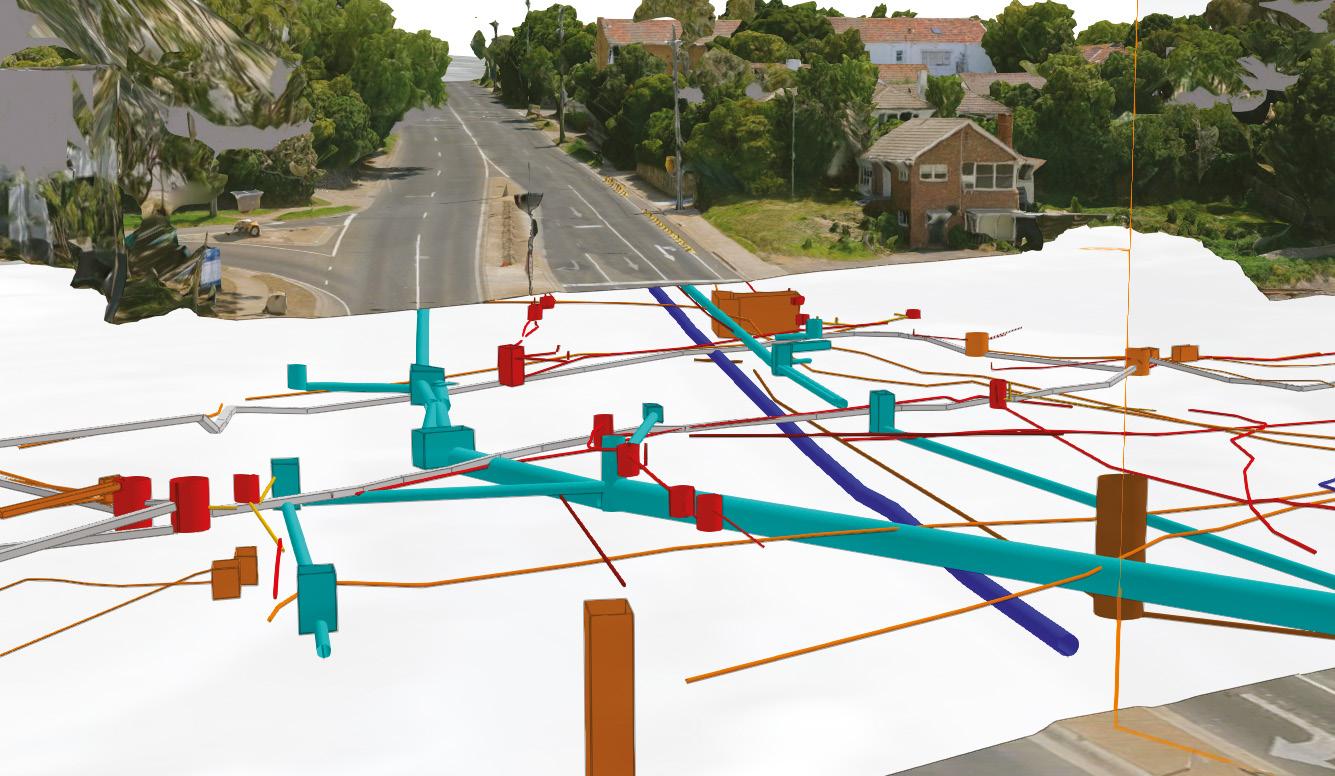
In Australia’s federated government system, our long-term commitment to collaboration across the jurisdictions has helped us achieve geospatial excellence that has withstood the test of time.
Along with New Zealand, we are leading the world in the creation of high-quality, reliable, standardised geospatial datasets, along with the provision of tools and value-added services to leverage the value of these powerful datasets.
SUPPORTING ENHANCED DECISION MAKING
Access to high quality and high precision geospatial information saves time and money through the entire lifecycle of projects, from planning and design through to delivery, asset handover and operation.
Increasingly, geospatial technology using collaboration platforms such as digital twins utilise real worldrepresentations and 3D datasets providing access to vast amounts of complex integrated data and insights in
ways that would have previously been too difficult, costly and time consuming.
This supports enhanced decision making, automated business processes, connected digital ecosystems with real time sensors, satellite services and modelling future scenarios that can measure impacts over time.
Cloud computing, machine learning and artificial intelligence are bringing capabilities that were previously impractical and unaffordable, to within reach. Machine learning techniques can do in weeks what used to take years, greatly reducing the cost of maintaining important datasets and breathing new life into our digital assets.
Increasingly, governments are focusing on accessing new value from their existing digital assets. For example, utility mapping is a fundamental part of any infrastructure project. Uncertainty about utility location accounts for a significant proportion of program risk, so projects go to extreme lengths to precisely locate and digitally model underground utilities before commencing a project.

www.infrastructuremagazine.com.au June 2022 // Issue 23 INDUSTRY INSIGHTS 25
The points have been classified as buildings in orange, vegetation in green, ground surface in brown. Image
Victorian
Uplifted 3D utilities data is being created as part of infrastructure projects. Image credit: Victorian State Government.
credit:
State Government.
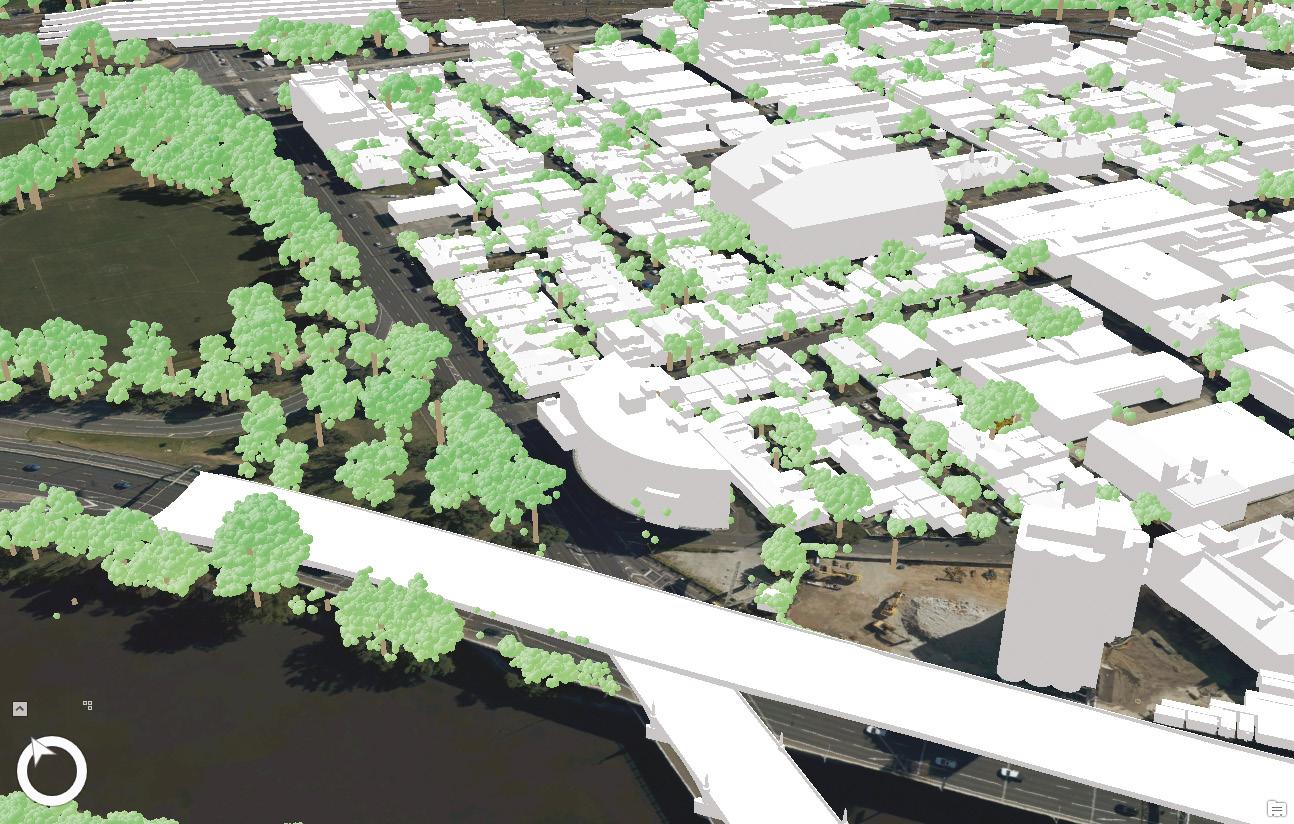
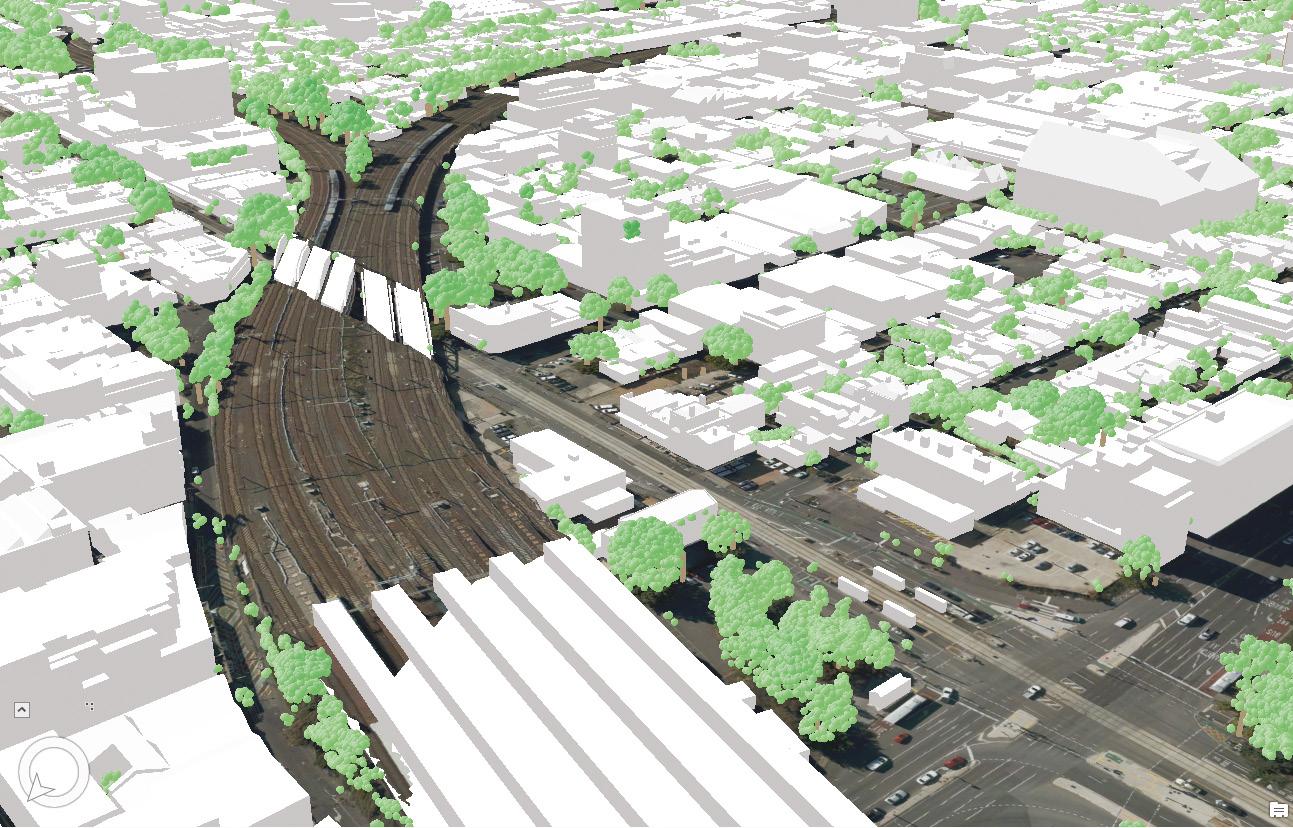
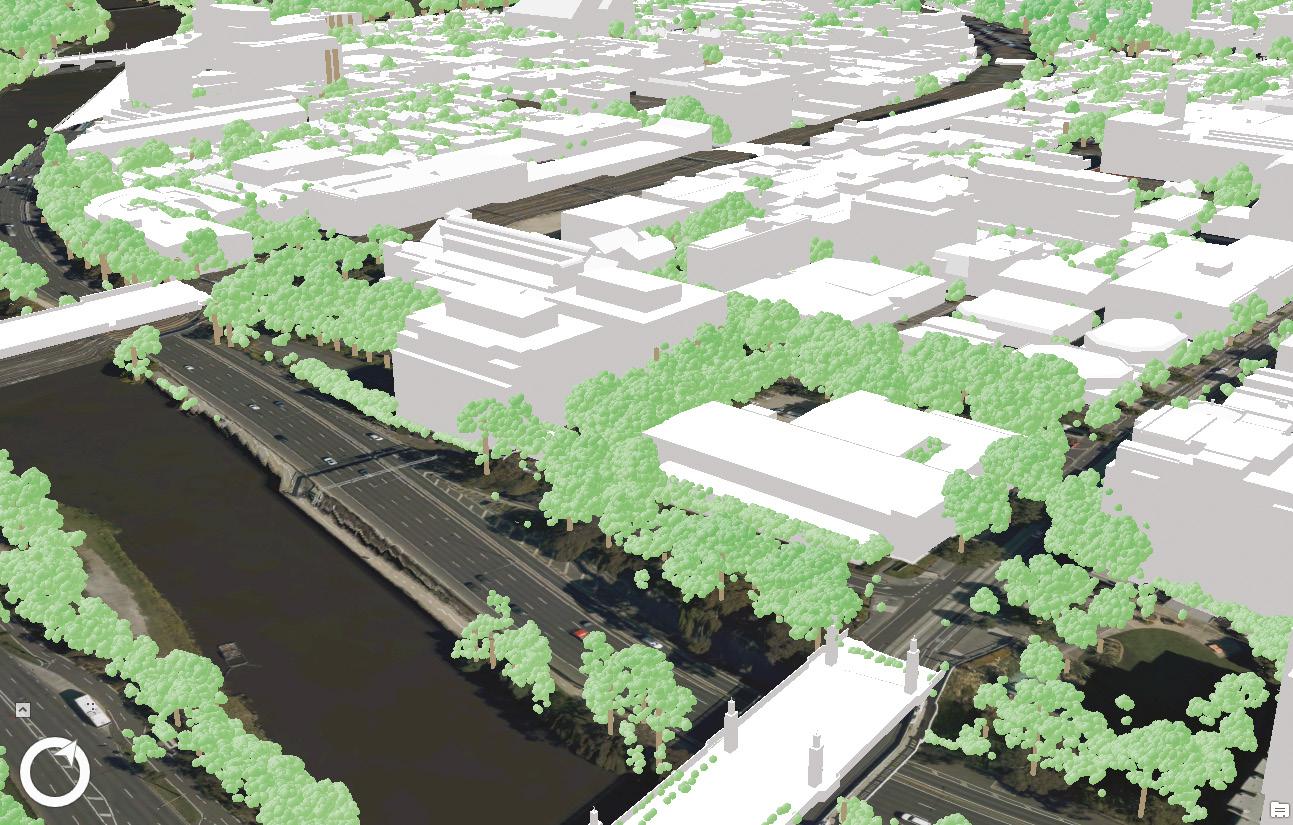
This work is vital for effective project delivery and creates incredibly valuable data. Now, instead of becoming digital landfill at the end of a project, the data is increasingly being stored and recycled for a whole new generation of future users to benefit from.
NATIONAL POLICY STRATEGIES
The demand for robust, reliable, connected digital workspaces that support remote working and distributed program delivery is also driving national policy decisions. The 2021 Australian Infrastructure Plan is one such example, and requires a digital-by-default approach to infrastructure projects and collaboration around the development of digital twins for the built environment.
The $40.2 million Digital Atlas of Australia, funded through the Federal Government’s $1.2 billion Digital Economy Strategy, is another example. It is being developed to provide greater access to authoritative national datasets on Australia’s geography, people, economy, employment, infrastructure, health, land and the environment.
The Federal Government’s $250 million Positioning Australia program will deliver satellite-based augmentation services that will greatly improve positioning accuracy all over Australia and New Zealand, benefitting not just the construction and infrastructure sectors, but also agriculture, aviation and autonomous vehicles to name just a few.
These strategies and policies show that geospatial capability will continue to evolve as a major enabler for the design, delivery and operation of infrastructure. Australia can harness the benefits of geospatial technology and help fuel the digital revolution, but there’s more work to do to get there.
Our success will depend on even greater collaboration between industry, academia and government at all levels. Governments need to continue to break down data silos and join the data between major activities. We need to work in closer partnership across sectors to build an ecosystem of interconnected digital twins.
And critically, we must secure a pipeline of future talent to tackle a major skills shortage. It’s immensely valuable work that’s increasingly at the cutting edge of digital innovation, and we need to be telling this story better to attract the next generation of talent.
June 2022 // Issue 23 www.infrastructuremagazine.com.au INDUSTRY INSIGHTS 26
Planning our future with 3D and machine-learning datasets in a digital twin environment. Images show new 3D untextured buildings data with LiDAR high vegetation points displaying as green foliage.
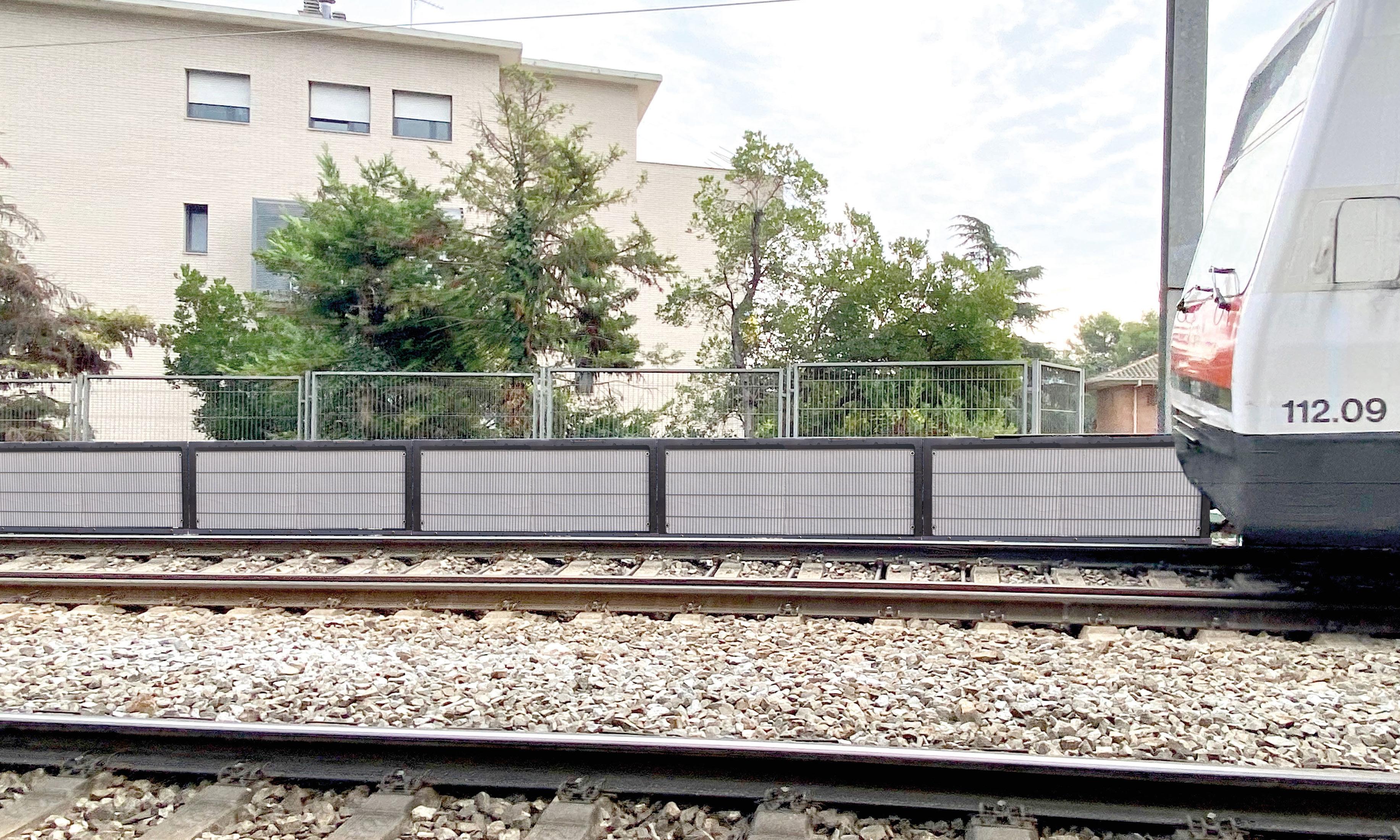
New STRAILastic_mSW 730
mini soundprotection wall with high absorbing surface
The new version of the STRAILastic_mSW adds a higher wall to the product range. This version is used for train speeds of up to 120 km/h.
Benefits at a glance
¬ No foundation required for installation
¬ easy and quick installation
¬ Short delivery times > noise hot spots can be supplied with products quickly
¬ Closer to the noise source than any other sound protection
¬ Break-proof due to bre-reinforced rubber compound with a cover layer of virgin rubber > UV and ozone resistant
¬ No material fatigue caused by vibrations or pressure and suction forces
¬ No problems with oversized loads
STRAILastic - sound protection

Due to the higher design, it gains even more e ect in the area of the wheel.
STRAILastic_mSW 730 is fastened to both rails with an insulated, decoupled substructure or directly in the subsoil using ground screws.
STRAILastic_mSW 730 > mini goes maxi.
1. STRAILastic_mSW 730 new version of the mini sound protection wall
2. STRAILastic_IP the infill panel
3. STRAILastic_mSW the established mini sound protection wall
4. STRAILastic_A inox 2.0 rail dampers
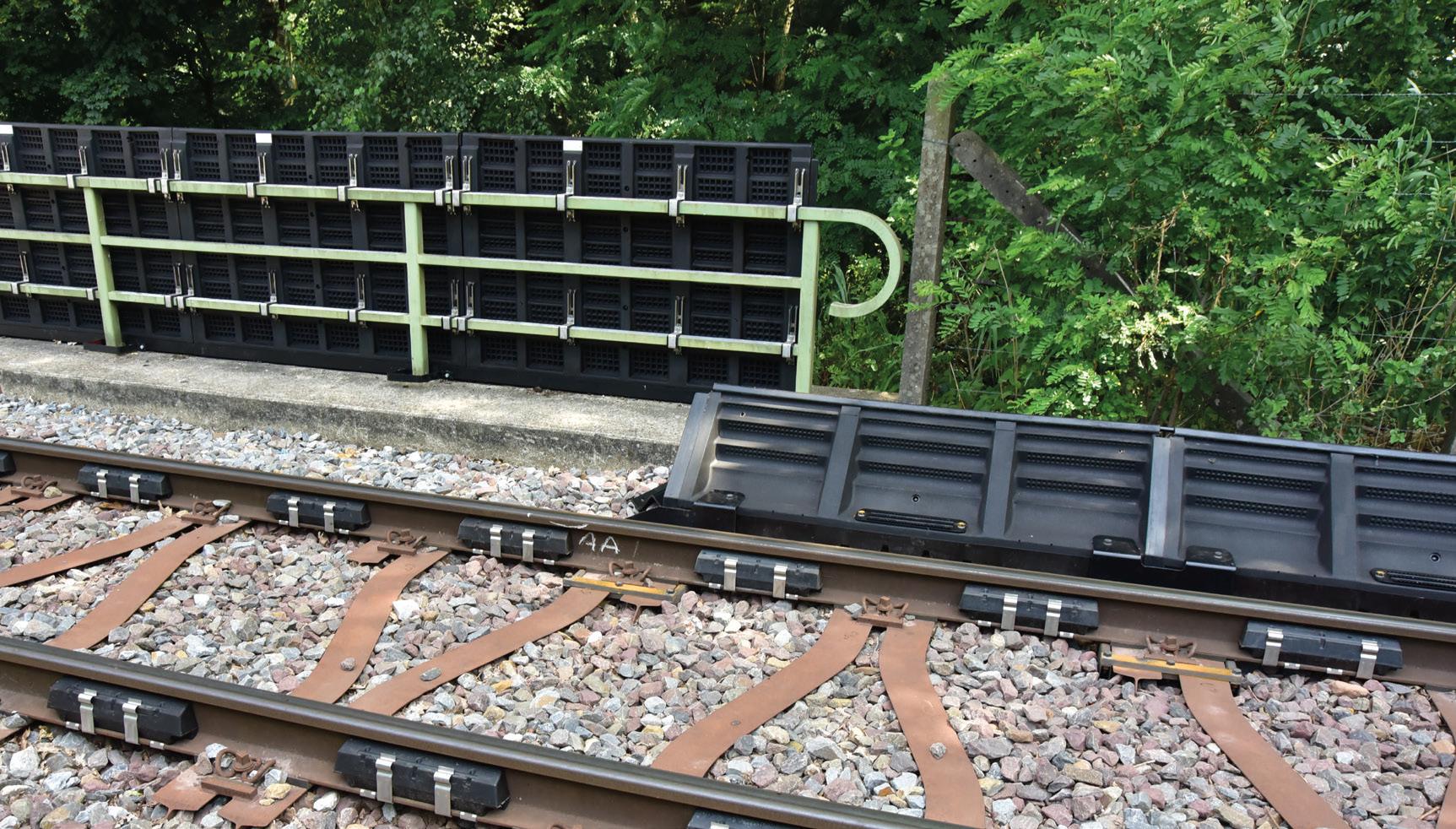



STRAILastic Australia Pty Ltd // STRAILastic track damping systems 350 Botany Road | Beaconsfield NSW 2015 Sydney | www.strailastic.com.au
4 products - 1 result - silence More information can be found at www.strailastic.com.au 1. 2. 3. 4.
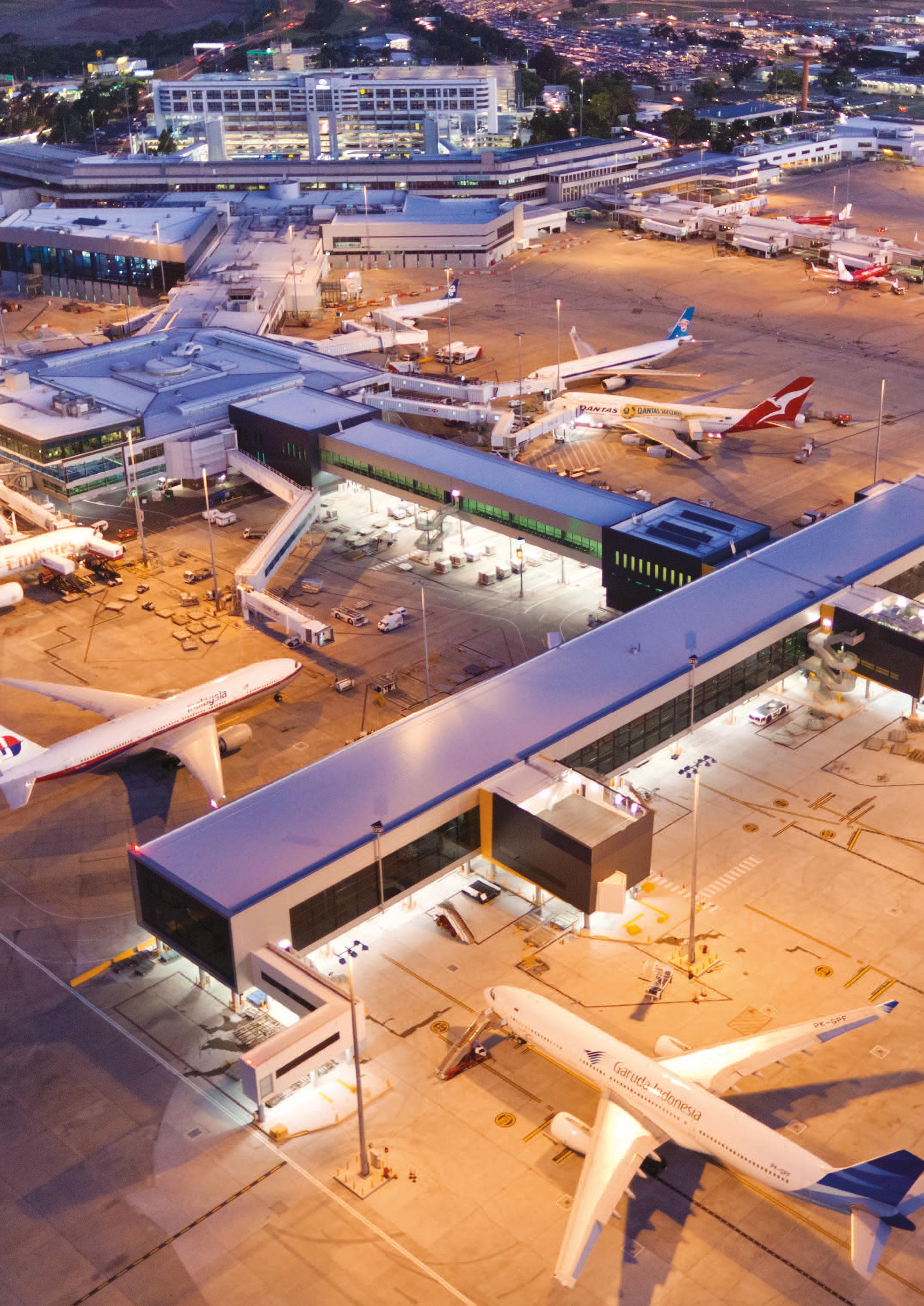
AIRPORT 28

MELBOURNE AIRPORT:
THE RIGHT INFRASTRUCTURE AT THE RIGHT TIME
by Jessica Dickers, Editor, Infrastructure magazine
June 2022 // Issue 23 AIRPORT 29
As the country emerges from COVID-19 and travel is slowly coming back, the conversation around the critical infrastructure needed for airports is firmly back on the agenda. In his presentation at the 2022 Critical Infrastructure Summit, Simon Gandy, Chief of Infrastructure at Melbourne Airport, explored the impacts of the pandemic and future plans for the airport, including the proposed third runway.
Melbourne Airport is Victoria's gateway to Australia and the world. Its close proximity to the CBD, located within one of the city’s largest growth areas, an undeveloped land bank of around 775 acres, and curfew-free and aircraft movement cap-free status, allow for a lot of exciting growth opportunities.
Before COVID-19, the airport operated more than 675 flights per day to over 74 destinations, with an average of 102,000 daily passengers. By 2pm each day, the airport would have handled around 60 per cent of the domestic flights flying in Australia, including Sydney-Melbourne which is one of the busiest routes in the world.
The airport’s infrastructure includes four terminals and two runways, and contributes around $20 billion per annum into the Victorian economy.
Then in March 2020 everything changed.
THE IMPACTS OF THE PANDEMIC
“To say that we have been on a bit of a roller coaster ride is probably the biggest understatement,” Simon Gandy, Melbourne Airport‘s Chief of Infrastructure, said.
Mr Gandy is an experienced executive leader with more than 30 years of aviation experience transforming airports to deliver high levels of growth and market share. He said the last few years have been extremely challenging, not just for Melbourne Airport, but all of Australia’s aviation and tourism industry.
“Airports aren't designed to be empty, they come alive with passengers and the day-to-day operations of enabling people to connect with loved ones, experiences and businesses. Airports and tourism were hit early on in the pandemic and have been one of the last industries to start their recovery. We had an extended period of time where we were down to around less than one per cent of our revenue,” Mr Gandy said.
“It was an extremely difficult time for not only our business but our service providers, our retailers and of course our customer airlines.”
As an airport, it was classified as an essential service and remained open, which created challenges in itself, but there were also decisions that had to be made all the way through this period, one of which was around how it should adapt its operating base and its investment plan.
“We'd literally just taken to our board our biggest investment portfolio for the next five years in February 2020. And then in March/April, we were going back saying, ‘we need to reprioritise and scale down,” Mr Gandy said.
“Reducing the capital was both a huge challenge, but also an opportunity to really focus on those projects that are essential to keep progressing right now to not only maintain a safe and secure operating environment but to progress work more efficiently and safeguard for the future.
“We were able to make changes without having passengers around, so we could do it faster and cheaper.”
A number of projects were continued during this time, including critical airfield maintenance works, terminal upgrade
works in both the international and domestic terminals, our amenities upgrade program and safeguarding for new security legislation. The team also maintained progress with the longterm planning for the future third runway.
Mr Gandy said the airport is now starting to see traffic building back up and this was reinforced over the recent Easter period with new daily record passengers for domestic travellers of over 90,000 some days.
“We're now averaging around about the 70 per cent mark in terms of recovery compared to pre-COVID and the forward signs continue to look promising. Whilst forecasts remain difficult to predict with confidence, our attention is shifting back to what future growth investment may be needed and in what timeframe.”
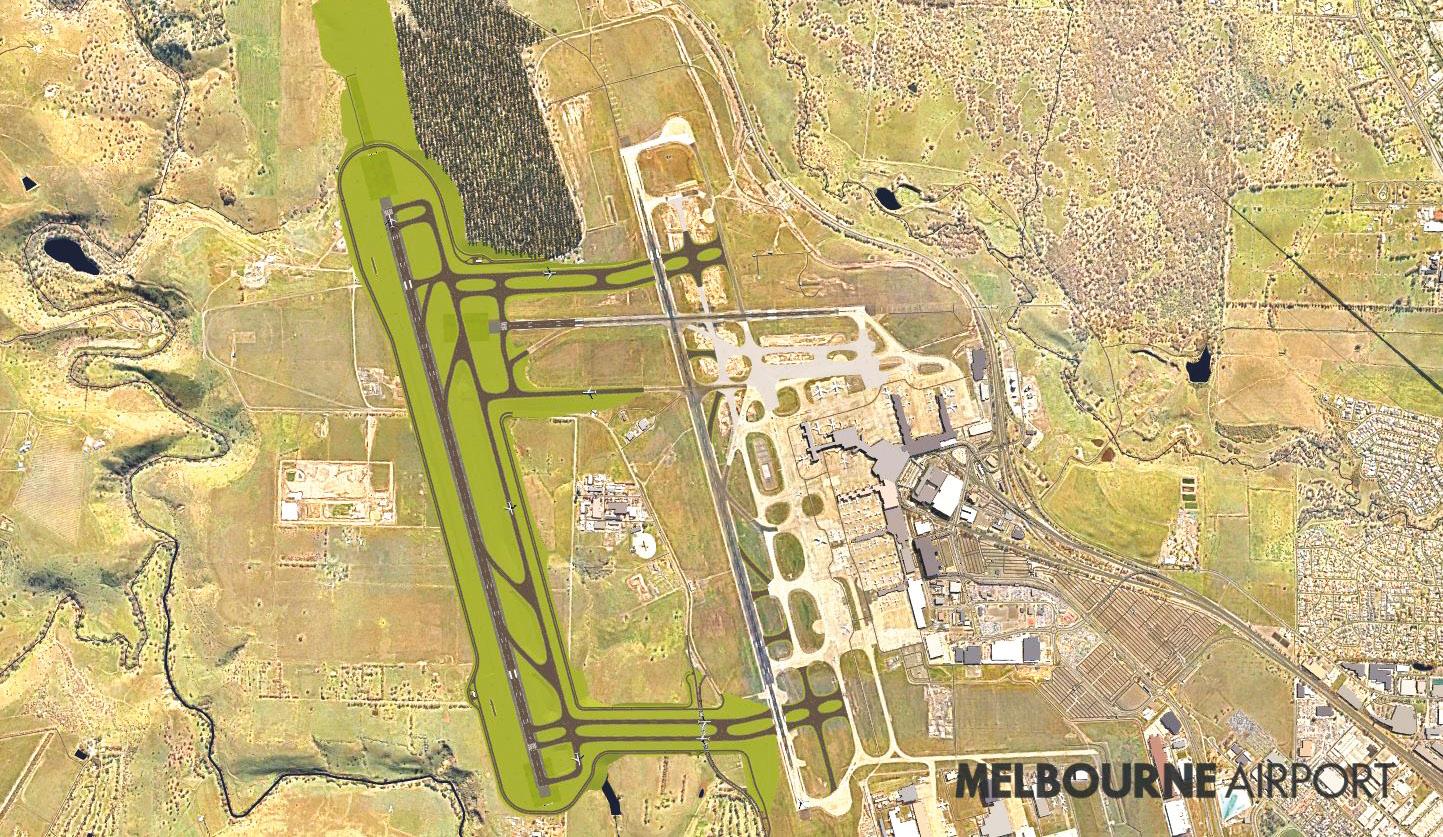
THE MASTER PLAN
Mr Gandy said that the airport’s Master Plan is the blueprint for how it will be developed moving forward. On its 20-year plan is the third runway, which will be located to the west of the existing cross runway system. The plan also continues to safeguard for a future airport rail link.
“We're in continued discussions with the State and Federal Governments on the timing and location for the rail link as our teams work together to ensure the offering is really great for both Melburnians and visitors,” Mr Gandy said.
The overall long-term vision for the airport features a four runway ‘hashtag’ arrangement, two parallel runway systems running north-south and two running east-west, noting that this arrangement has formed part of the planning for the airport for decades.
“Having that hashtag configuration entrenched in planning since 1970 has been a real benefit to ensure that the environment around the airport has been safeguarded to allow for the future growth in air travel,” Mr Gandy said.
Mr Gandy said some of the key drivers of the Capital Plan and development planning process include:
♦ Necessity: Planning processes reflect known capacity constraints which are used to determine future needs
♦ Deliverability: The level of investment Melbourne Airport is capable of delivering, and funding while ensuring the minimum impact on the 24x7 operations
June 2022 // Issue 23 www.infrastructuremagazine.com.au AIRPORT 30
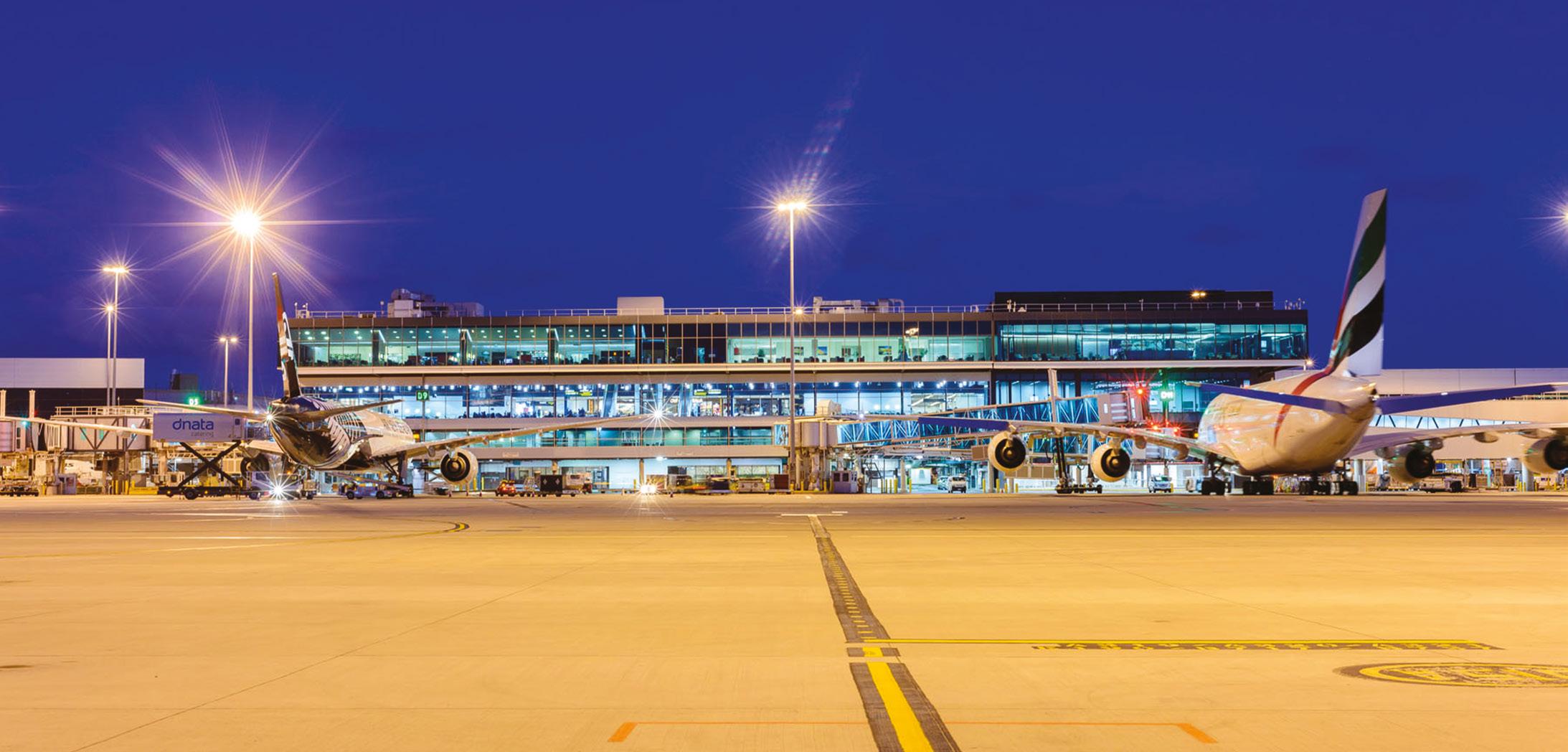
♦ Commerciality: What is affordable for both Melbourne Airport and airlines, and optimises overall enterprise returns
♦ Traveller experience: Delivering those projects that go beyond the bricks and mortar and seek to improve the overall passenger experience and brand of an airport to be proud of
“Commerciality plays a big part of our discussions with our airline customers to make sure that we are building the right facilities at the right time, and to make sure we're doing that in a commercially efficient way. But we’re also focused on making sure that the product that we're building ticks the boxes for traveller experience,” Mr Gandy said.
Mr Gandy said annual passenger forecasts are also a key component in making sure that they’re building the right infrastructure at the right time. Due to COVID-19 disruptions, there are a few possible scenarios with high and low cases depending on certain assumptions around where and when they think growth is going to be coming back, which plays a critical role in how the airport is shaped.
ENERGY AND NET ZERO TARGET
Mr Gandy said that none of this future development can happen without also thinking about the utilities within the airport.
“Utilities infrastructure is critical to most large-scale infrastructure businesses, not only to keep the heartbeat of the airport running, but also making sure we tread softly from an environmental perspective,” Mr Gandy said.
“I was delighted when we endorsed our carbon net zero approach which will see our scope one and scope two emissions reduce to zero by 2025.
“We have a very well thought through plan that builds on the investments we've already made in the Melbourne Airport solar farm, which is a 12-megawatt system at the north end
of our longest runway. We’re looking at expanding that facility further, reducing our energy use and also securing green energy supplies for the balance of our operations.”
LEGACY SHAPING PROJECT – THIRD RUNWAY
One of the biggest future projects for Melbourne Airport is the development of a third runway.
“Pre-COVID-19, we were already reaching capacity during our peak periods and we were seeing continuing delays in on-time-performance impacts from reaching the capacity of the existing cross runway system,” Mr Gandy said.
“Our proposed third runway is a new three-kilometre northsouth runway positioned 1.3km to the west of the existing one, to enable simultaneous operations. The new runway will be connected to the airfield infrastructure through a number of parallel taxiways to ensure that we can maximise the efficient movement of aircraft to and from the runway systems.”
Construction of the third runway is expected to take four to five years. Approximately six million cubic metres of general or high-quality fill will be required (the equivalent volume of four Melbourne Cricket Grounds), with between 70 per cent and 90 per cent to be sourced on site.
The build will include 750,000m² of pavement (an area the size of 3,000 tennis courts) and 3,500 energy efficient LED lights.
The north-south orientation for Melbourne's new runway has been chosen to maximise its availability based on prevailing wind conditions.
The $1.9 billion project will help cater for the longterm growth of Melbourne Airport's passenger and freight operations and support thousands of new jobs, including approximately 650 people to be involved in the construction activities.
For more information on the M3R, please visit www.melbourneairport.com.au/runway.
www.infrastructuremagazine.com.au June 2022 // Issue 23 AIRPORT 31
Register for free to watch Simon Gandy’s presentation at the Critical Infrastructure Summit on demand by visiting www.critical-infrastructure.com.au.
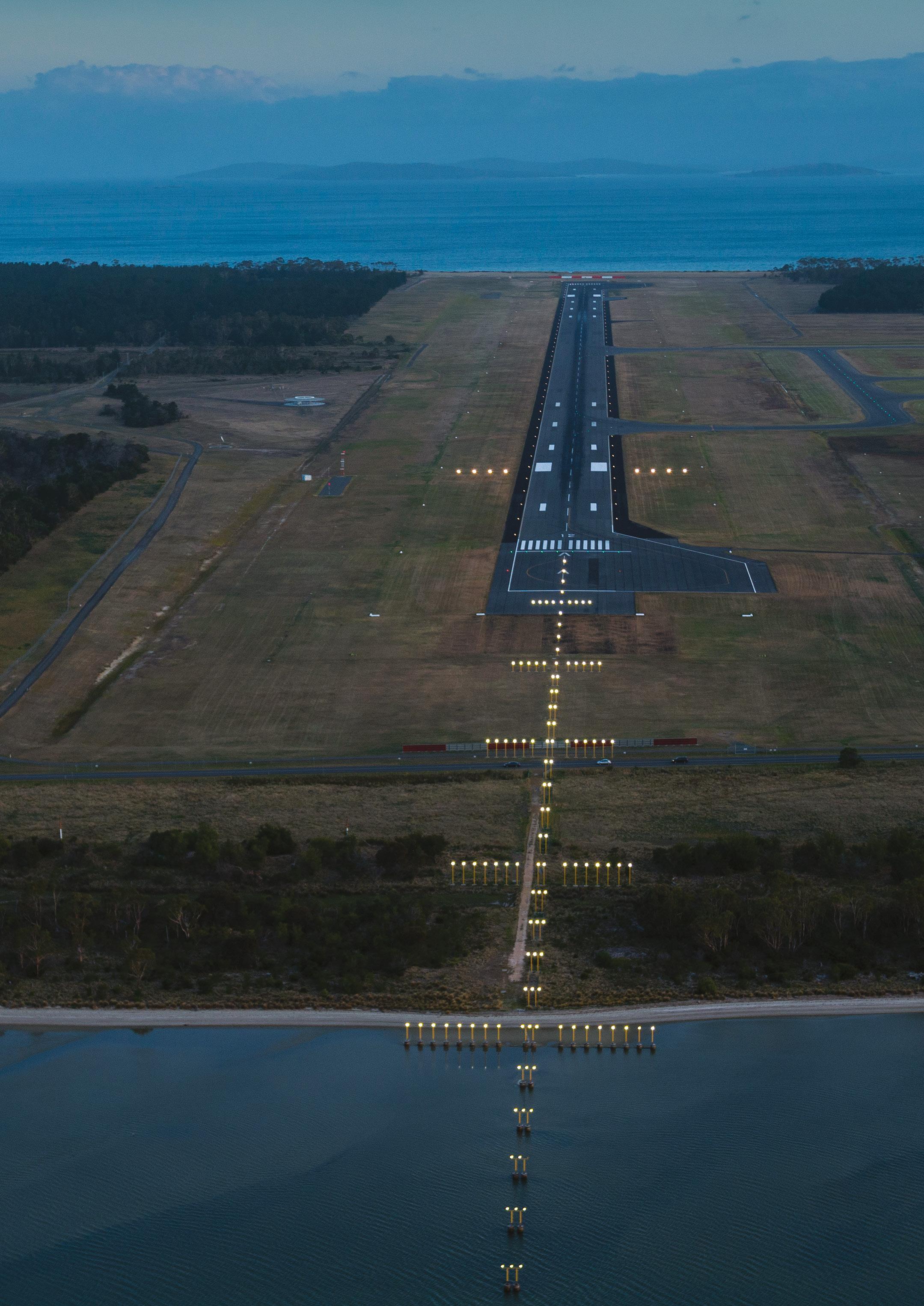
AIRPORT 32
BUILDING TASMANIA’S FUTURE
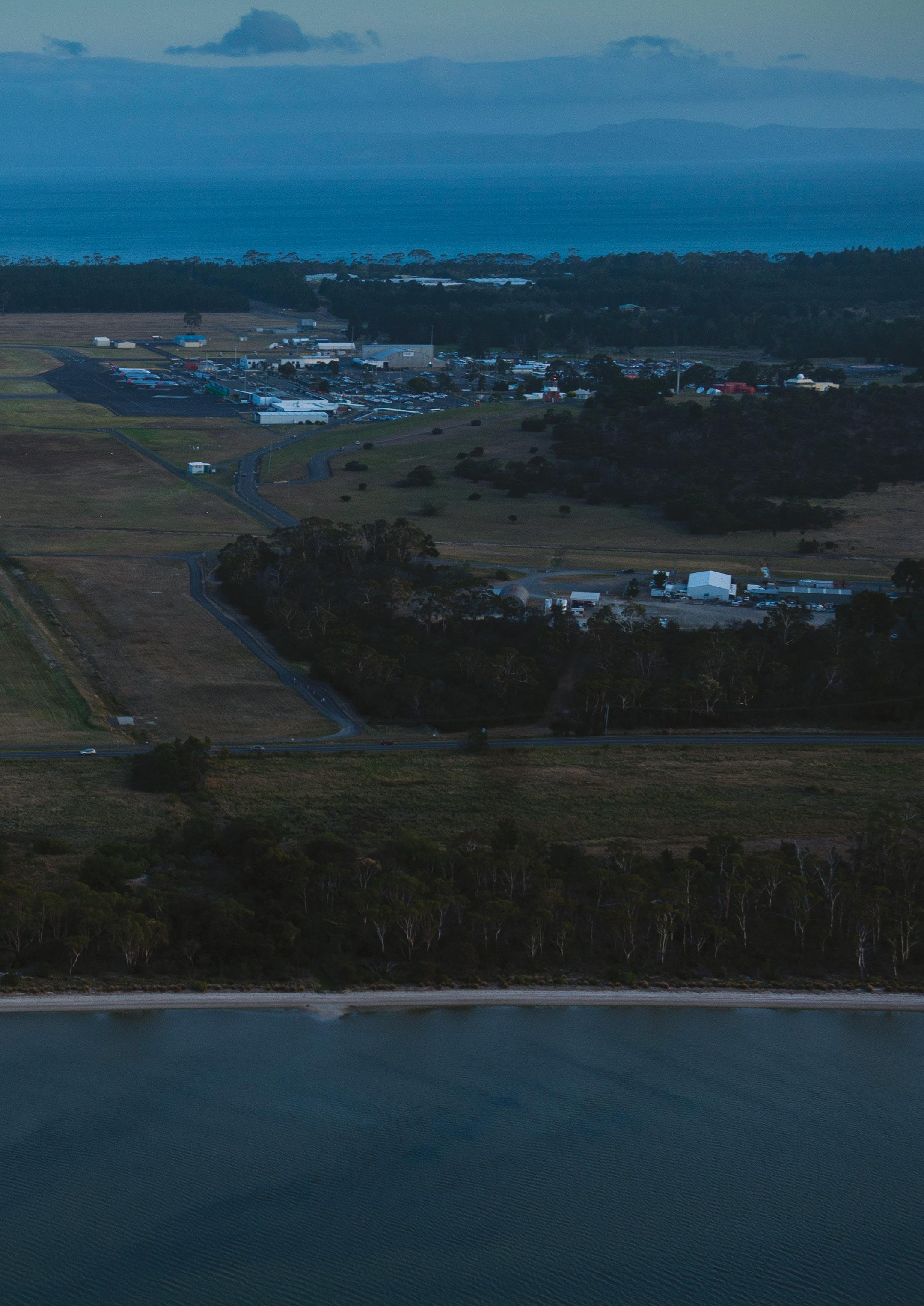 by Norris Carter, CEO, Hobart Airport
by Norris Carter, CEO, Hobart Airport
About a year ago I stepped into the role of CEO at Hobart Airport. As the major gateway to Tasmania, with nearly 60 per cent of visitors to the state passing through its doors, the airport’s success is intrinsically linked to Tasmania’s.
AIRPORT 33
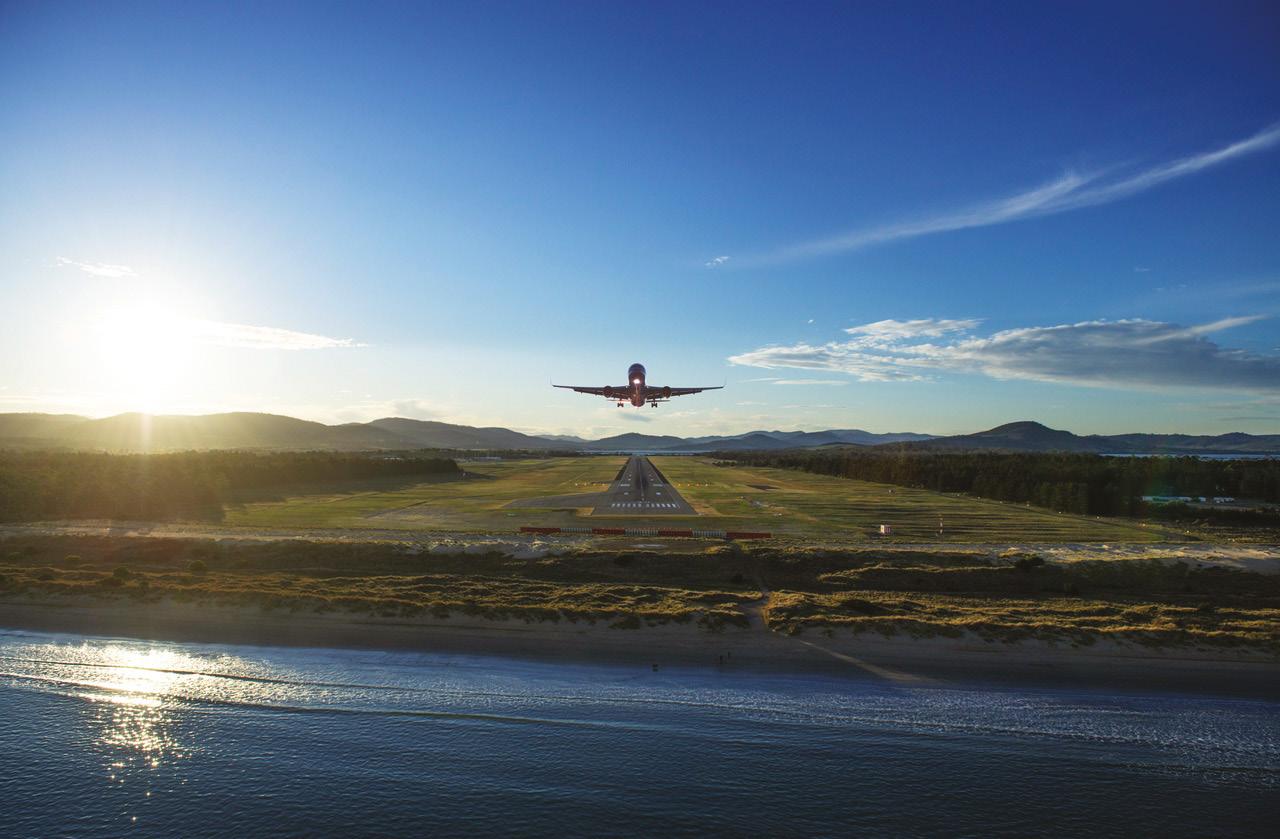
Tasmania is poised to take off. It’s viewed globally as unique and safe, it has outstanding environmental credentials, and it has a strong and prosperous economy. Tasmania can already generate 100 per cent of its energy from renewables and has a target to double that, and it has achieved net zero in six of the last seven years. In January, CommSec ranked Tasmania’s economy as the best performing in Australia for the eighth quarter in a row.
Hobart Airport’s purpose is connecting communities. Connection is at the very core of what we do, bringing people and communities together. We’re a host, a caretaker, a friend and a genuine member of the countless communities that make up Tasmania and the world we open our arms to.
We’re one of Tasmania’s most strategically important pieces of infrastructure, serving passenger flights, cargo flights, rescue helicopters, and Australia’s air link to the frozen continent Antarctica.
The world, and the aviation industry in particular, has been through a tough couple of years of pandemic-induced slowdown. As we emerge from this period we need to evolve and adapt, and help build Tasmania’s future.
We’ve built new connections over the last year, with new domestic routes and more airlines flying on them, to Perth, Adelaide, Canberra, the Gold Coast, and the Bass Strait islands.
We’ve brought international flights back to Tasmania after more than 20 years with the launch of Air New Zealand’s flights between Auckland and Hobart. We’ve seen Tasmania’s incredible cherries, crayfish and abalone flying to Hong Kong on seasonal cargo flights with Cathay Pacific.
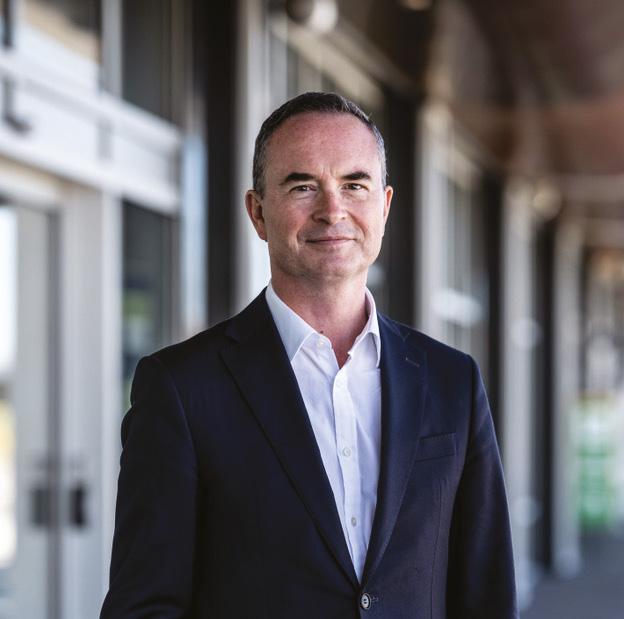
Widebody aircraft are restricted in how much fuel and payload they can take on by the strength of the original runway. This means an aircraft can’t load up with enough fuel to fly non-stop to Hong Kong or Singapore, and has to stop on the mainland to refuel. Even stopping on the mainland, they still can’t take on a full load of cargo in Hobart. Upgrading the runway will allow these aircraft to take off at Hobart Airport fully fuelled and fully laden.
This would allow the airport to expand Tasmania’s opportunities.
Hobart Airport has a solid foundation, but now we need to do more to unlock the next phase of growth.
RUNWAY UPGRADE TO EXPAND OPPORTUNITIES
The Hobart Airport runway is probably the most important stretch of asphalt in Tasmania. In 2017 it was lengthened to allow larger widebody aircraft to land. Now we need to strengthen the original section of it to allow them to operate without restrictions.
We could expand international freight capability to allow non-stop flights to Asia, growing Tasmania’s agribusiness by allowing express delivery of the state’s premium produce.
We could enable non-stop international passenger flights from Asia, supporting the continued growth of Tasmania’s tourism industry. Imagine direct flights to Hong Kong or Singapore without stopovers. For many visitors there is a ‘mental block’ of having to get to Hobart via a stopover in Melbourne or Sydney.
www.infrastructuremagazine.com.au AIRPORT 34
Norris Carter
These upgrades will increase the aviation capability of the Tasmanian Antarctic Gateway. Upgrades to both the port and airport are essential to cement Hobart’s position as the gateway to the Antarctic for Australia and other countries.
They will cater for potential future Defence air operations from Hobart, such as search and rescue in the Southern Ocean.
Upgrading Hobart Airport will ensure that we seize these opportunities that greatly benefit Tasmania. The return on this investment will be huge and it won’t be confined to the cities. It’s an economic enabler for the whole state and the positive impacts would be felt across Tasmania, throughout the regions, from King Island to Kettering.
A recently commissioned KPMG analysis confirmed that we have the chance to create nearly 1,300 jobs around Tasmania and create an additional $122 million in economic activity each year.
This upgrade will help Tasmania to grow, expand our economy, and create more jobs for Tasmanians. Importantly, it will go a long way to helping us connect communities across the country and around the world.
The strategic investments we make now have the capacity to pay massive dividends by helping build Tasmania’s future.
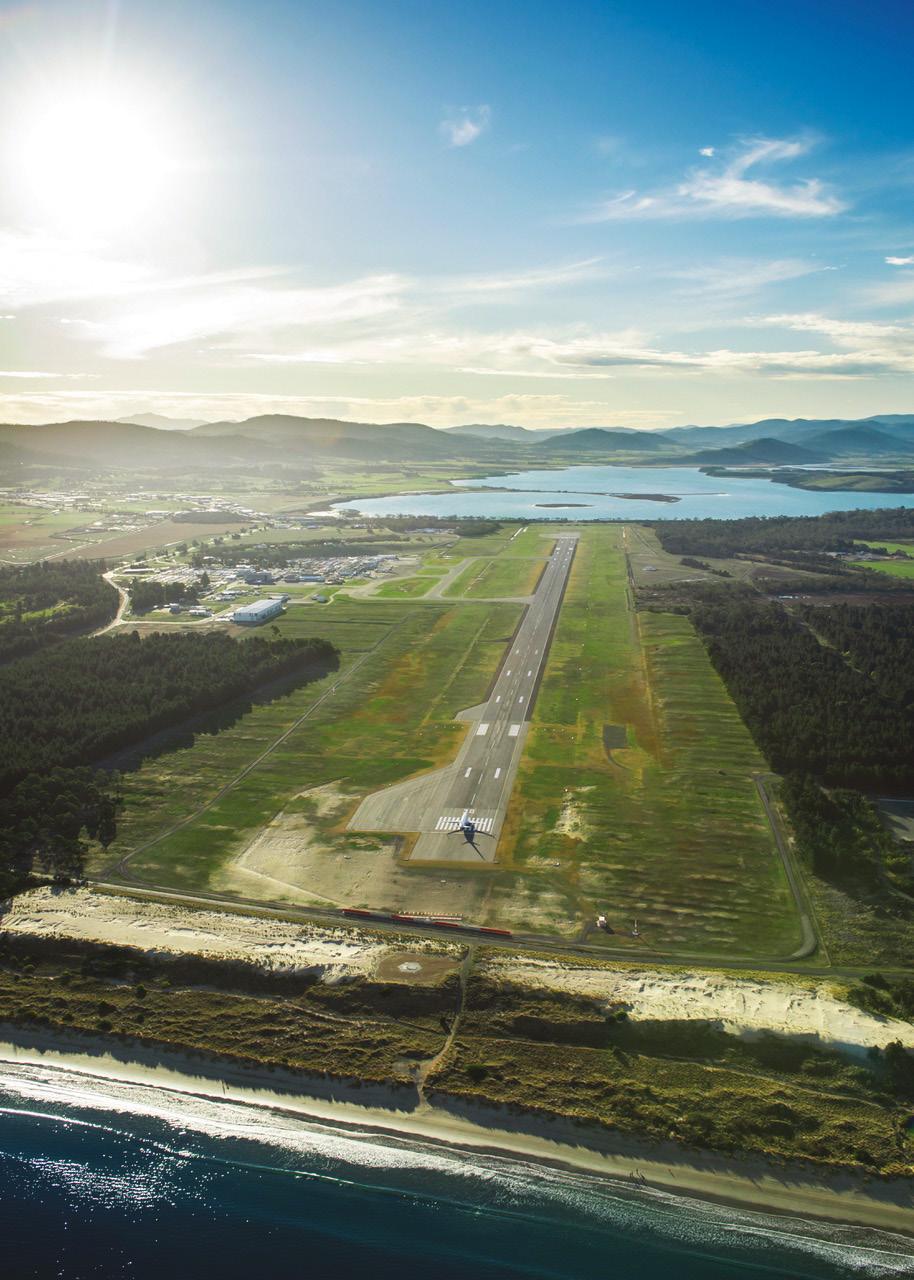

AIRPORT 35

LIGHT AT THE END OF THE TUNNEL
URBAN DEVELOPMENT 36
 by CSIRO
by CSIRO
You might use them to zip under the city, cross the harbour or pass through a mountain – tunnels are a major part of Australia’s road and rail infrastructure. With lengths of up to nine kilometres, which is the longest in Australia, they require precise planning, engineering and ongoing maintenance to keep users safe and avoid the types of disasters we only want to see in movies (because let’s face it, no one wants to end up as Sylvester Stallone in Daylight).
URBAN DEVELOPMENT 37
CSIRO’s Fire Engineering team (part of the Infrastructure Technology team). From left to right – Joe Abraham, Alex Webb, Neythra Weerakkody and Nathan White.
At CSIRO, our Infrastructure Technologies teams work hard to provide specialist services to managers of this key type of national infrastructure. From working with the companies that paint the lines on the road, to those that install and manage the ventilation, CSIRO is involved in ways you may never have imagined.
Conditions underground present unique challenges compared to those on the open road, which makes the safety measures of tunnels of utmost importance, particularly those which prevent accidents or fire.
Every single element of installed safety systems must undergo meticulous testing to ensure that they work as designed, continue to operate over time, and are ready to perform to their exact specification in the event of an emergency.
The tests undertaken by CSIRO on products and systems installed in tunnels cover structural fire performance, smoke management and ventilation, fire detection and alarm transmission, painting, speaker systems and often-ignored road markings.
IT’S GETTING HOT IN HERE
Fire is one of the biggest threats to the safety of occupants of a tunnel, but the next time you drive through one, have confidence knowing that in the unlikely event of a fire, every safety element has been thoroughly considered.
High temperatures affect each material in different ways, but in a tunnel, it’s vital that the structure of its linings – the walls and ceilings that define the tunnel – are not adversely affected by fire. Road tunnels are tested to ensure that their, typically concrete, linings remain structurally sound and in place, while withstanding temperatures of up to 1350°C for many hours.
During testing, the concrete structural elements of the tunnel are exposed to a gas-fired furnace, which represents the intensity of an environment full of burning hydrocarbon (petrol), while being continuously checked to ensure
that the lining will maintain its integrity during a car (or worse, a petrol tanker) fire inside.
BREATHING EASY
Adequate ventilation is crucial to ensure that safe conditions are maintained while a tunnel is in operation. In the event of an underground fire, it is very important that ventilation systems can clear large volumes of smoke while tunnel users evacuate. CSIRO tests tunnel ventilation systems using largescale smoke generators, which produce and direct heated smoke to simulate the buoyancy and flow characteristics of real fires.
During these tests, CSIRO staff can look more like firefighters than engineers and scientists, outfitted with hi-vis protective clothing, helmets and breathing apparatus to replace the white coats usually associated with CSIRO’s experts!
TRIPLE ZERO HEROES
Fires require rapid response. In the event of an emergency, the fire brigade and tunnel management systems are automatically notified of incidents through a series of advanced smoke and heat detection sensors and control systems.
While these systems may quietly monitor the tunnel year after year, they must raise an alarm within seconds of detecting a fire. CSIRO operates Australia’s only laboratory which tests and assesses fire detection systems, testing many types of detectors to ensure that they respond to fires, and also the interconnected control systems which transfer the emergency information to the fire services.
ALERTING DRIVERS
In case of an emergency, tunnels include a network of occupant warning systems, emergency sounders and loudspeakers to alert tunnel users with safety warning messages to assist with safe evacuation.
Loudspeakers and sounders are subjected to an extensive acoustic and durability test program, with speakers exposed to heat, cold, humidity, corrosion, shock and vibration. They are also tested in CSIRO’s anechoic chambers to ensure that their audio performance remains high so that they can produce messages with good speech intelligibility.
CSIRO staff also mathematically model the time taken for users to evacuate tunnels once they hear the emergency message.
WATCHING PAINT DRY
While most don’t give it a second thought, road markings are a critical life safety component of the transport system. The coatings and reflective materials used in road markings are tested for both performance and durability over time.
CSIRO operates an accreditation scheme for organisations that apply road markings and individually audits each accredited company to ensure that their processes and systems enable the tested coatings to be applied correctly.
And, there’s a lot more to a white line than one may imagine. Our paint and coating accreditation programs write and manage hundreds of technical specifications specifying the attributes and requirements for these essential coatings, covering everything from light reflectance to how long they take to dry.
DON’T PANIC
CSIRO doesn’t intend for the above discussion of emergencies and disasters to cause concern. Although car accidents will happen from time to time, Australia’s road and rail tunnels have comprehensive safety systems, which allow all of us to enjoy the benefits of a quick trip from A to B without any worries.
Hundreds of Australian companies and thousands of talented experts deliver safe tunnel infrastructure, and CSIRO is proud to support them with the scientific services they need to do this important job.
If you are interested in any of the diverse range of testing and consulting services at Australia’s national science agency, CSIRO, please contact the Infrastructure Technologies team at https://research.csiro.au/infratech/
June 2022 // Issue 23 www.infrastructuremagazine.com.au URBAN DEVELOPMENT 38

The purpose of the testing pictured is to simulate a large fire event within a tunnel and verify that fire detection systems, tunnel ventilation and smoke control systems and evacuation systems all operate in accordance with the design criteria for the tunnel, which generally includes no back layering of smoke upstream of the fire incident location.
URBAN DEVELOPMENT 39
Commissioning hot smoke tests in accordance with AS 4391 for a major Australian road tunnel project.

TO GROWING BETTER CITIES AND INCREASING HOUSING SUPPLY SIX STEPS
by Maxwell Shifman, National President, Urban Development Institute of Australia
June 2022 // Issue 23 www.infrastructuremagazine.com.au URBAN DEVELOPMENT 40

www.infrastructuremagazine.com.au June 2022 // Issue 23 URBAN DEVELOPMENT 41
Great cities and regions don’t just happen automatically. They demand foresight, planning, early investment, and the capacity to respond to the needs of people who already live there and those who aspire to live in them in future.
Consistent benchmarking is needed for the base services required for liveable cities, suburbs and regional towns, and must consider future needs as well as current demand.
This data should be used to inform investment in both large and small infrastructure such as public transport, urban and open spaces, technology, schools, hospitals and the environment, as well as sewer, water, road and drainage infrastructure to ensure capacity exists to unlock new housing supply.
UDIA National believes that in the wake of the pandemic and the demographic changes that have ensued, a new plan is needed to develop more liveable places.

Now is the time for political leaders to seize the opportunity to put core infrastructure as their central focus and develop plans that integrate investment in transport infrastructure and urban planning with the goal of delivering globally competitive cities, enabling Australia to exit the pandemic stronger than when it began.
The property and construction sector’s capacity to deliver the housing Australia needs is intrinsically linked to this strategic planning, and the funding and delivery of core infrastructure.
Long-term growth corridors should be identified and secured, aligned to population forecasts and strategic plans, with barriers to their development resolved early in the process.
Major transport investments must be synchronised with the objectives of long-term strategic land use and infrastructure plans for our cities and regions; they can be the catalyst for substantial improvements in new supply in both established and greenfield areas.
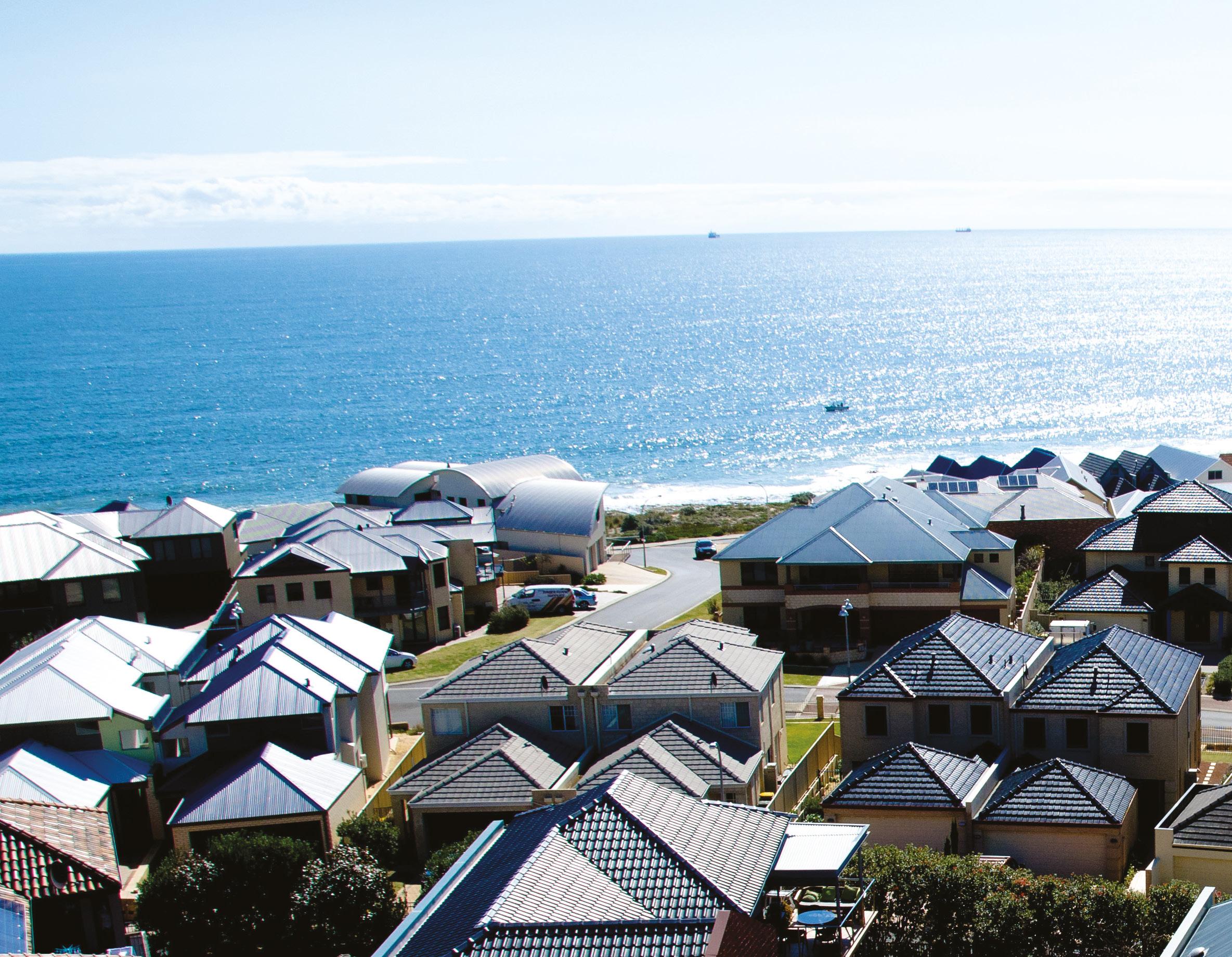
A stronger focus on local-scale infrastructure – without a price tag in the hundreds of millions or billions – can generate significant improvements for relatively small spends, and in turn, quickly kick-start new dwellings.
URBAN DEVELOPMENT 42
Maxwell Shifman
Too often, the lack of alignment between all three tiers of government produces disjointed planning around the trajectory of growth that will underpin our cities, as well as the land use and infrastructure pipelines needed to service them. Productivity suffers without an integrated plan and supply is constrained.
Governments will yield a much stronger dividend from a more cohesive and proactive approach to infrastructure investment. This would accelerate better and more affordable housing outcomes, particularly coupled with larger projects such as rail that support urban renewal and shape cities, better connecting communities and improving urban amenity.
ALIGNING TO STRATEGIC PLANS
UDIA NSW’s Building Blocks research report shows that a $1 billion investment in infrastructure funding across the Sydney Megaregion would unlock over 100,000 greenfield dwellings within three years. It stands to reason that this scale of outcome could be replicated nationally. Imagine the impact of such thinking across Australia.
UDIA National’s 2022 Federal Election Campaign Platform, A Plan for Prosperity, includes six steps to ensure that longterm growth corridors for housing and related infrastructure properly align to demographic trends and strategic plans:
1. Synchronising investment with the objectives of the long-term strategic land use and infrastructure plans in place for each of our major capital cities and regions
2. Ensuring integrated approval regimes are applied to infrastructure that also accommodate housing (and other uses) which are attached to or benefit from them
3. Linking higher levels of infrastructure funding to regions
prepared to accept a greater share of population growth, synchronised with increases in housing supply
4. Putting a greater focus on local-scale infrastructure which can generate significant improvements based on a relatively small spend and in turn kick-start new housing opportunities
5. Charting and removing the barriers to the delivery of more diversified housing stock, particularly support for build-to-rent as a viable asset class and encouraging mixed tenure affordable housing
6. Planning for an aging population by ensuring the diversity and facilitation of housing choices for seniors is accommodated
We need to begin the hard work now to plan for what our major cities and regions look like in 2030 and the decades beyond and start delivering the infrastructure today for what is needed tomorrow.
About Urban Development Institute of Australia
The Urban Development Institute of Australia (UDIA) is the peak body representing the property development industry throughout Australia.
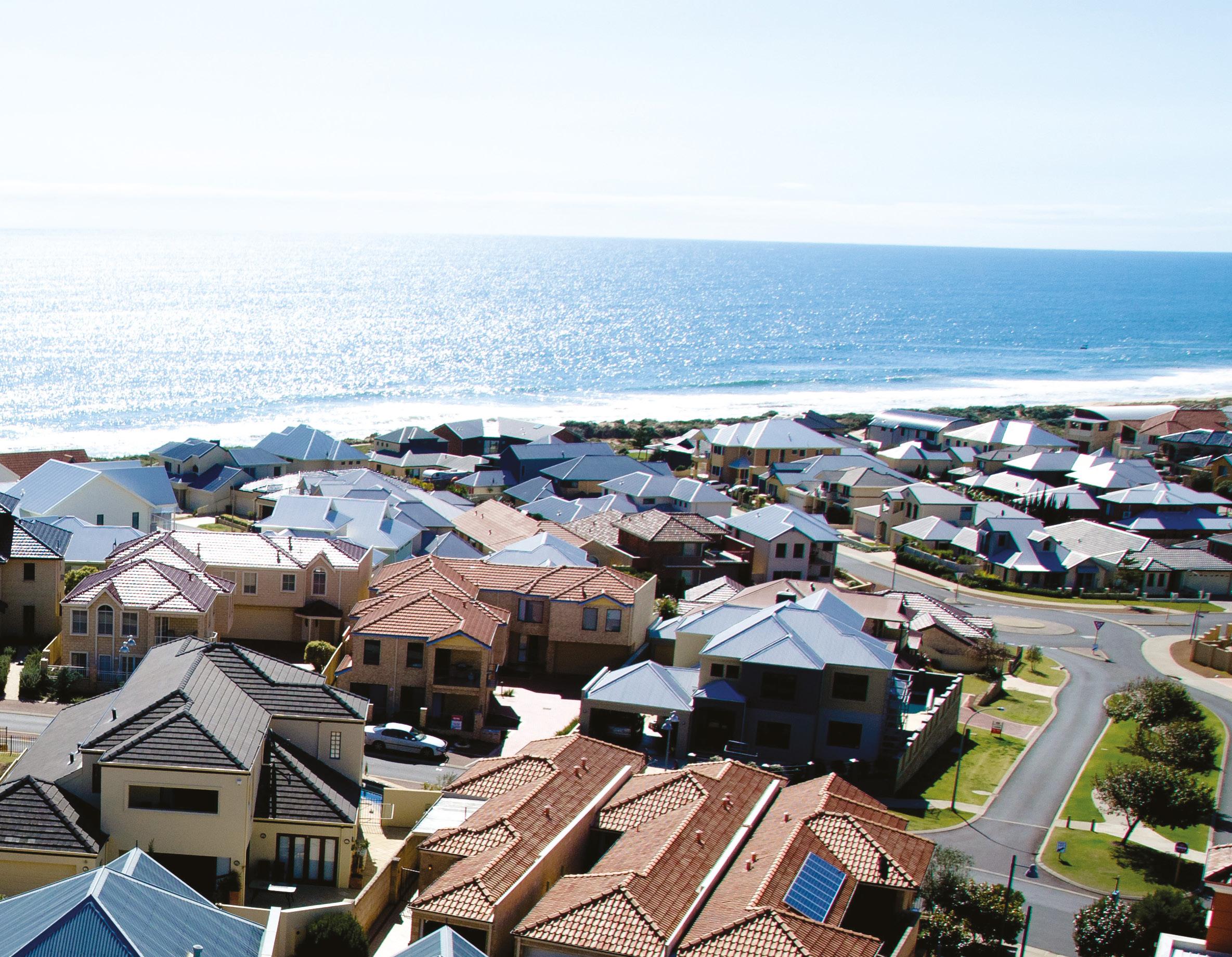
As the development industry’s most broadly representative industry association, UDIA has more than 2,500 member companies spanning top tier global enterprises and consultants, to local governments and small-scale developers.
URBAN DEVELOPMENT 43

MAINTAINING CRITICAL INFRASTRUCTURE ASSETS
IN A TIME OF TR ANSFO r MATIVE CHANGE
SMART CITIES 44
 by Christopher Allan, Journalist, Infrastructure magazine
by Christopher Allan, Journalist, Infrastructure magazine
In a presentation delivered at the 2022 Critical Infrastructure Summit, the CEO of Victoria’s independent infrastructure advisory body, Infrastructure Victoria, described a pathway for managing Victoria’s critical infrastructure over the next thirty years.
SMART CITIES 45
Dr Jonathan Spear, CEO, drew upon the recently released Victoria’s infrastructure strategy 20212051 to explore how different classes of critical infrastructure assets will navigate transformative change.
Here we explore some of the key learnings in Dr Spear’s presentation, from his discussion of critical asset classes like transport and energy, to how the themes of adaptation and resilience could define Victoria’s infrastructure build.
Dr Spear’s presentation centred around the projects, challenges, and priority areas across four classes of critical infrastructure – namely the transport, energy, water, telecommunications sectors.
The presentation explored how the themes of adaptation and resilience could shape Victoria’s infrastructure build, as well as touching on costing and resourcing considerations for Victoria’s 30-year infrastructure pipeline.
He emphasised how changing how the transport system is priced can deliver sizeable benefits by spreading demand more evenly, complementing new projects and investment as well as getting the most out of existing infrastructure.

“What we've been calling for as a priority is that there's a real opportunity to use how our public transport fares are set to encourage more people to travel off-peak on our transport system,” Dr Spears said.
“And if we can reduce both bus and tram fares, this makes much better use out of those modes of transport.”
Speaking to some of the ambitious transport projects in Victoria that could work alongside these pricing changes, Dr Spear emphasised how Melbourne’s metropolitan rail is highly contingent on the City Loop corridor.
“The Melbourne Metro Project is starting to disentangle the City Loop with more end-to-end services that are less reliant on going around the loop,” Dr Spear said.
Prior to joining Infrastructure Victoria during its establishment in 2015, Dr Spear held senior leadership, policy, strategy, and legal roles across the Victorian Government’s Department of Premier and Cabinet, the Department of Justice, Victoria Police and Slater & Gordon Lawyers.
VICTORIA’S INFRASTRUCTURE STRATEGY
Infrastructure Victoria currently fulfils three core objectives:
♦ Producing a 30-year infrastructure strategy for Victoria
♦ Providing independent advice to the Victorian Government on request
♦ Conducting leading research that informs infrastructure investment and policy change across Victoria, with applications for the nation
In August 2021, it presented the Victorian infrastructure strategy 2021-2051 to the Victorian Parliament, to a positive reception.
“We released a draft strategy in December 2020 that had many thousands of comments and suggestions about how to improve it and nuance it. Community and stakeholder input is essential to ensuring the strategy reflects the issues of importance to Victorians,” Dr Spear said.
“The Victorian Government has responded to the 30-year strategy, and it’s really pleasing to see that over 90 per cent of those recommendations have been supported in full or in part by the Victorian Government.
“What we are all looking for now is the progress on implementation of the strategy and its recommendations –with a real opportunity for the government and other parties to [respond to the strategy] as investments, budget decisions and policy announcements are made.”
THE FUTURE OF CRITICAL INFRASTRUCTURE
Transport
One of the four classes of critical infrastructure explored by Dr Spear was the transport sector. He focused on the projects, emerging challenges and priority areas for transport infrastructure as outlined in the Victorian infrastructure strategy 2021-2051.
“We've got some real opportunities to better use what we've got in the transport sector, but also prepare for the changes to come,” Dr Spear said.
“There’s an opportunity to continue that disentanglement with an additional reconfiguration of the City Loop by building two additional rail tunnels.
“If we build tunnels from Richmond to North Melbourne, this will enable continued, end-to-end services across more lines in Melbourne. That means those assets are likely to be more easily maintained, and more resilient to disruptions on the network.
“We’ve also identified the need for additional rail investment to the growing western area of Melbourne.
“Building the Outer Metropolitan Road and Rail Corridor will really assist with the productivity and resilience of our transport network, especially for freight users, by connecting up the key freight precincts and demand and supply centres across Melbourne.”
Speaking on some of the transformative changes facing critical infrastructure in transport, Dr Spear highlighted the transition to zero-emission vehicles, technological changes in road management technology, and the potential rise of autonomous vehicles.
In terms of road management technology, Dr Spear said new innovations provide the ability to manage our road network much more proactively through signalling, collision clearing, and the freeing up of lanes for different modes and directions in real time.
“What our research and modelling shows is that if we use that technology, we can really maximise the use of our transport network,” he said. “It also gives us many more opportunities to manage disruptions to the critical infrastructure component of the transport network.”
Energy
Another of the four asset classes of critical infrastructure explored by Dr Spear was the energy sector, and the importance of energy efficiency.
“Any megawatt of power that we can avoid by improving energy efficiency is going to help us with the really significant task of decarbonisation,” Dr Spear said.
“The more we can do on energy efficiency now, the easier it will be in coming decades,” he said.
June 2022 // Issue 23 www.infrastructuremagazine.com.au SMART CITIES 46
Dr Jonathan Spear
“With less energy use comes less emissions and the less need for new energy infrastructure, making it cheaper on consumers’ hip pockets as well.”
Dr Spear explained how regulatory changes, as well as changes to energy pricing to reflect demand periods, could deliver immediate benefits.
Delivering greater energy efficiency for new homes, particularly through increasing the Energy Star Rating that is required, as well as a mandatory disclosure scheme for home energy ratings, were two regulatory changes that encouraged purchasers and vendors to have greater incentive to think about energy efficiency improvements and to value them.
Dr Spear also addressed the role of energy prices in managing future patterns of demand.
“If we make sure that we continue to have energy prices that are reflective of demand – so that we pay more at higher peak periods and less in lower demand periods – combined with technology that makes it easy to take advantage of those prices, that will help us make best use of our energy system,” Dr Spear said.
“This will avoid putting high demand on the system unnecessarily, particularly on those really hot days that we experience with peak demand.”
Speaking on the transformative shift towards renewable generation facing Victoria’s energy grid, Dr Spear referred to continuing the effort that has already started on augmenting electricity transmission infrastructure around the state.
“Because many of the renewable energy transmission sites that we have in Victoria are located in rural and regional areas of Victoria, that gives great opportunity for both zero emissions energy generation and great new sustainable jobs.
“But we do need to connect that energy with the sources of demand, which tend to be in Melbourne and the regional cities.
“Continuing to invest and augment the transmission system is going to be critical for our energy infrastructure, in coordination with Victoria’s Renewable Energy Zones.”
A further challenge facing Victoria’s energy sector is to reduce emissions from the state’s gas system.
“This is a particularly significant challenge in Victoria, as around 20 per cent of our emissions come from gas,” Dr Spear explained.
“A lot of that is from space heating in residential and commercial settings.
“There’s going to need to be effort over this decade in identifying the viable pathways to reduce emissions from our gas sector, particularly to reach the interim and net zero targets that the Victorian Government has set.”
ADAPTATION AND RESILIENCE: KEY THEMES FOR INFRASTRUCTURE MAINTENANCE AND PLANNING
Dr Spear also explored how the themes of adaptation and resilience could define Victoria’s infrastructure build over the next 30 years.
He said critical infrastructure and infrastructure networks must plan for more extreme weather events due to climate change, as well as other forces of transformative change.
For example, by building climate change into infrastructure decisions with consistent scenarios around the sort of climate change effects Victoria is likely to see, policymakers can work towards more adaptable and resilient infrastructure classes.
“We can also have a more consistent approach to valuing the carbon that is embedded in both the construction, but also the operation, of our infrastructure,” Dr Spear said.
“We also know that the critical infrastructure sectors do not exist alone – that increasingly, there is interplay between the way one sector is reliant on another.
“What we have called for is increasing improvements in information flow, not only within sectors, but across sectors –so that there can be an understanding of the interplay and the interconnections of how impacts on one sector are going to flow through to the other.”
Dr Spear also highlighted how adaptation and resilience will define infrastructure decision-making and planning across all non-critical infrastructure, from improved policies for social housing to achieving resilience through urban green spaces.
BREAKING DOWN THE COST OF VICTORIA’S INFRASTRUCTURE STRATEGY
Dr Spear said delivering the policies and programs contained within the 30-year infrastructure strategy doesn’t come without a cost.
“To deliver all the recommendations in our strategy would cost around $100 billion over the next three decades.
“Now, in the context of the amount of money that is spent by the state on infrastructure, that is an entirely reasonable amount for us to be planning to spend.”
Dr Spear pointed to how many recommendations directly speak to the long-term maintenance of critical infrastructure – both in terms of assets as well as the use of policy changes – towards better use of critical infrastructure and getting the greatest productivity from existing infrastructure.
“I think that’s a real opportunity for all of us who are interested in the asset management and maintenance of critical infrastructure to keep our eye on the fact that much of the infrastructure we already have is the infrastructure we are going to have over the coming decades.
“Continuing to invest in its maintenance – and continuing to have an eye on managing the demand for it so it’s best used –is something that really pays dividends to us all.”
To learn more about Infrastructure Victoria’s infrastructure strategy 2021-2051, visit www.infrastructurevictoria.com.au
To watch a video on the strategy’s major transport recommendations visit https://www.youtube.com/watch?v=BrYuCRvEW0A on Infrastructure Victoria’s YouTube channel.
Register for free to watch Dr Jonathan Spear’s presentation at the Critical Infrastructure Summit on demand by visiting www.critical-infrastructure.com.au.
www.infrastructuremagazine.com.au June 2022 // Issue 23 SMART CITIES 47
Viewshed simulation in Adelaide with green areas visible and red areas invisible from the chosen point.

HOW QUALITY SPATIAL DATA SUPPORTS VIEWSHED ANALYSIS
Whether you’re designing an apartment block, installing 5G infrastructure, simulating a new road design, or creating a stadium crowd surveillance system, high-accuracy 3D spatial data is a robust and effective tool for analysing visibility and sightlines, also known as ‘viewshed analysis’ for infrastructure projects.
The need to stage and simulate scenarios for viewshed testing is ever-increasing with large infrastructure and building projects. Finding solutions has never been more straightforward with accurate and readily available spatial data supported by cloud computing and algorithmic calculations.
Spatial technology company Aerometrex has seen an increase in demand for its 3D reality mesh models and LIDAR point clouds supporting viewshed analysis in both Australia and the United States.
WHY USE 3D DATA FOR VIEWSHED?
Using 3D datasets, whether photogrammetry models or LIDAR, saves substantial time and money for infrastructure viewshed analysis. Customers use those 3D data formats to support engineering and surveyor analysis of project sites. Spatially accurate data helps inspect areas as they currently are and simulate how future changes affect the space.
Applications for viewshed solutions using 3D data could include mapping a mine site’s route for continuous 5G coverage, safety camera positions along a highway, sightlines between existing
structures and planned projects, or shadow casts of new buildings.
The applications of view simulations are as diverse as the end clients.
STADIUM SECURITY BY EUCLIDEON
2022 saw software company Euclideon design a precise camera security system for Oracle Park Stadium in San Francisco. The project utilised high-resolution 3D data, cloud computing, and algorithmic calculation to serve as an example of their platform’s flexible and straightforward solution for client use.

The surveillance solution’s base dataset is Aerometrex’s high-resolution reality mesh model of San Francisco. The San Francisco 3D model features a complete capture of Oracle Park, and the stadium’s open-roof design means every seat location exists within the model.
Aerometrex’s models are always built with precise geo-accuracy, making them
an ideal staging environment for such spatial simulations.
Aerometrex’s 3D model was staged in Euclideon’s udCloud platform, making the high-fidelity dataset streamable within a browser interface. A camera placement algorithm calculates sightlines between a representative 200seat sample from the upper tier and the underside of the stadium’s roof, showing both the placement and minimum required cameras.
The solution shows every sightline between the sample seats and the camera to which it is visible and highlights invisible seats for further investigation.
Combining elements of accurate data inputs, cloud computing, and algorithmic calculations delivered results under ten seconds during the company’s testing.
LEARN
MORE
Accurate data for viewshed projects is available through Aerometrex’s web store across Australia and USA. Buyers can choose between purchasing an entire city or custom sections within the dataset. That flexibility helps customers buy data as, and when, they need it for project work.
For more information about Australian 3D data on the MetroMap 3D store, please visit metromap.com.au/plans/custom-data/.
June 2022 // Issue 23 www.infrastructuremagazine.com.au SMART CITIES // SPONSORED EDITORIAL 48
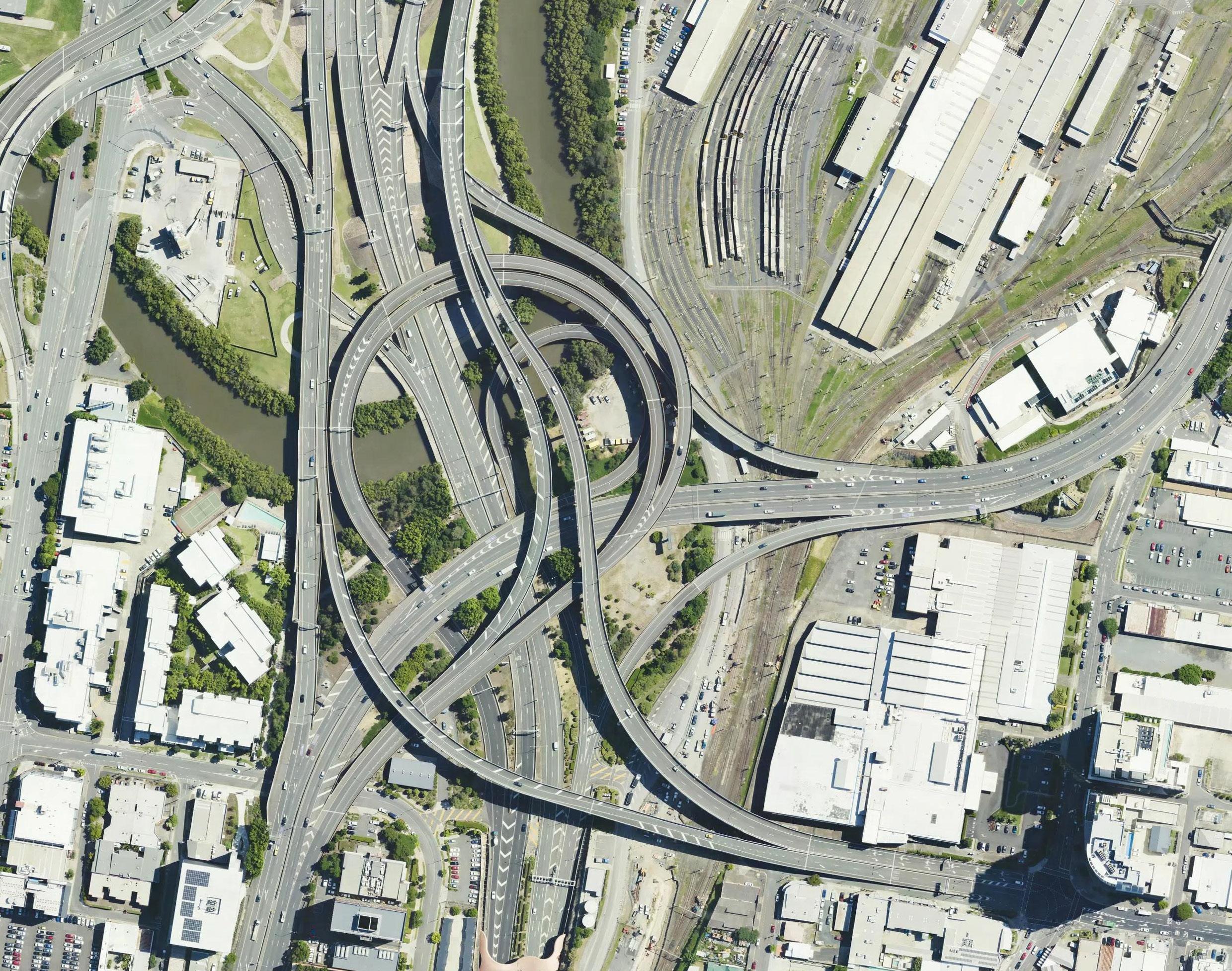
Scan to access free trial
• Manage your infrastructure reliably with frequent captures
• Respond efficiently to maintenance requests
• Measure confidently with high spatial accuracy
• Flexible access via web-application or your own GIS
• Overlay rich cadastre and building insights
metromap.com.au
INSPECT ASSETS FROM THE COMFORT OF YOUR DESK INSPECT ASSETS FROM THE COMFORT OF YOUR DESK


When it comes to planning infrastructure, the smart money is on smart precincts.
The concept of smart precincts is gaining momentum, and Australia’s smart precincts agenda has every reason to gather speed.
Recently, PwC Australia’s Integrated Infrastructure team joined forces with the University of Technology Sydney and its Industry Professor, Ian Oppermann, to state the case for why planning the smart cities of tomorrow must begin today, and to provide a blueprint to usher in a new era for smart precinct design and development.
Here in Australia, an unprecedented number of precincts are in the planning pipeline across the country, as governments of all levels invest in place and transport infrastructure, renew centres, and refresh social and cultural infrastructure.
In fact, no fewer than 45 major precinct developments are in planning throughout Australia right now, from Fishermans Bend in Victoria to the Westmead Health precinct in New South Wales, or South Australia’s Tonsley Innovation District, and Nambeelup Industrial Area in Western Australia.
When the modern smart cities movement began in Australia more than a decade ago, it was more a conceptual model for the transformation of cities, but since then, we’ve seen a host of more advanced pilots, plans and funding programs right across the nation, developed at all levels of government and made possible by a range of technologies.
WHAT MAKES A CITY ‘SMART’?
While digital dormancy continues to be a barrier, a combination of circumstances is creating a burning platform for a next generation of smart precinct design and development. These include substantial infrastructure investment by state and federal governments and the subsequent opportunities to reimagine precincts and design places, along with tech advances such as Cloud computing, the Internet of Things (IoT), the saturation of mobile devices and NBN coverage.
Further driving this burning platform, the impacts of climate change driving demands for circular design, rising digital literacy and greater tolerance when it comes to data sharing as a result of COVID-19 ( think check-ins), and of course, new ways of working triggered by the pandemic.
What is it that makes a precinct ‘smart’? Our research with the UTS has found the most successful smart precincts tend to include:
♦ Smart, data-driven services that improve citizen experience and drive operational productivity
♦ Shared public and private data streams joined together for valuable insights thanks to the willingness of citizens to share their personal data in exchange for better services
♦ Emerging technologies such as IoT creating unique, usercentric experiences
The other common denominators among successful smart precincts include:
♦ Electrification to enhance local mobility and reduce emissions
♦ The use of digital twins
♦ Artificial intelligence
♦ Renewable energy sources
Precincts are smart when they encompass the unique place, experience, and connectivity outcomes for users and citizens.
That is, when technology is planned with purpose.
THE KEY SUCCESS FACTORS
Our global study of the benchmark cities around the world for smart precinct design included deep dive analysis in Rio de Janeiro, Hangzhou, Seoul, Barcelona and New York. This study, combined with our own experience of smart city projects, saw us observe six key success factors that can help operationalise smart city projects.
1. Strategy and planning
The successful examples of smart city execution begin with a smart city strategy or roadmap in place for the precinct. We observed this in Rio, where good strategy and planning has facilitated Rio de Janeiro’s Operations Centre.
Staffed 24 hours a day, the facility coordinates the activities of more than 300 local and state departments, plus private utility and transport companies – all integrated into a single, digital command-and-control system.

SMART CITIES 52

2. Data and analytics
Data assets are planned for integrated analytics, which are used to drive decision-making. Seoul has more than 5,000 datasets readily available. In Seoul, information is provided in open API format, offering citizens real-time bus schedules, subway updates, locations of public Wi-Fi services, and more.
3. Technology
Consolidated ICT architecture is planned for the precinct, to enhance quality and interactivity of services.
4. Partnerships
Collaborative partnerships models support the delivery of smart technology in precincts. The power of partnerships was observed in Hangzhou, where the local government, Alibaba, and a number
of other companies, collaborated to achieve smart services and outcomes for the city.
It included the design of City Brain – a cloud-based, real-time data capture, aggregation and management system.
5. Social licence
Community engagement is ongoing, and is focused on problem solving, building trust, and maintaining social licence.
6. Digital literacy
A commitment to building citizen digital literacy, and inclusiveness policies to support the adoption of smart technology and solutions.
For instance, in New York, the Mayor’s Office invites citizens to participate in open competitions and propose ideas to solve real urban challenges.
SIX STEPS TO GET STARTED
Ultimately, what defines a smart place is the strategy and partnerships for embedding technology and data elements with communities, and the way the community is part of the design and learning process.
So, how to get started? Based on our study of global smart cities, PwC Australia and UTS recommend six steps to get governments operationalising proof of concepts.
These are: define your target outcomes first, establish your maturity level, prioritise citizen engagement, establish governance and practices, form delivery partnerships, and secure funding.
As you embark on your journey, there are some key questions you will want to ponder: what do these steps look like for your organisation? Have you identified the proven technologies that can deliver the outcomes you seek? How will you co-design solutions with citizens, private sector partners, and other public agencies? What might the regulatory landscape look like in the coming years?
With vision, collaboration and decisiveness, Australia’s smart city developments can succeed in building better precincts and more sustainable communities, and attracting global tenants and new industries.
It’s critical these are done properly, because if not, we run a real risk of making generational planning errors and could be counting the cost of retrofitting these sites for decades.
Ultimately, Australia has a rare window of opportunity, right now.

SMART CITIES 53
UP AND AWAY –
BUILDING A RAIL BRIDGE OVER
WEBB STREET, NARRE WARREN
The Level Crossing Removal Project (LXRP) is delivering a massive transport infrastructure overhaul as part of Victoria’s Big Build, that will transform transport across Melbourne and ease congestion. by Level Crossing Removal Project (LXRP)

June 2022 // Issue 23 www.infrastructuremagazine.com.au BRIDGES 54
Over the past seven years, on behalf of the Victorian Government, LXRP has removed 59 level crossings, built 34 new and upgraded stations, delivered 30km of bike paths, and created around 20 Melbourne Cricket Grounds (or MCGs, the unique Victorian unit of measurement) of open space for local communities across Melbourne to enjoy.
The project will remove 85 level crossings across Melbourne by 2025 and is well on track to meet this target.
This range of works will make local roads safer; reduce traffic delays; improve connectivity between road, rail and bus services; allow more trains to run; and modernise train stations across the city.
WHAT’S HAPPENING AT WEBB STREET?
The level crossing at Webb Street, Narre Warren, in Melbourne’s south-east, will be removed and replaced with an elevated rail bridge, and a new premium station at Narre Warren will be built as part of the project.
Webb Street was one of the ten level crossings announced by the Victorian Government in 2021.
We’ll remove these ten level crossings by 2025, while construction crews are already out on the ground nearby getting rid of other dangerous and congested level crossings. This will reduce disruptions, maximise delivery efficiencies, create more jobs and mean more level crossings can go sooner.
The early designs for the level crossing removal have recently been released, showing a concept of the elevated rail bridge that will be built to replace the level crossing.
The new state-of-the-art Narre Warren Station will have better facilities for passengers, including two new elevated platforms, which commuters will be able to access via lifts and stairs. The new platforms will also feature improved shelter, lighting and CCTV.
The station precinct will be safer and more accessible with modern facilities such as additional bus stops, shared use paths, Parkiteer bicycle cages and bicycle parking hoops, and landscaping.
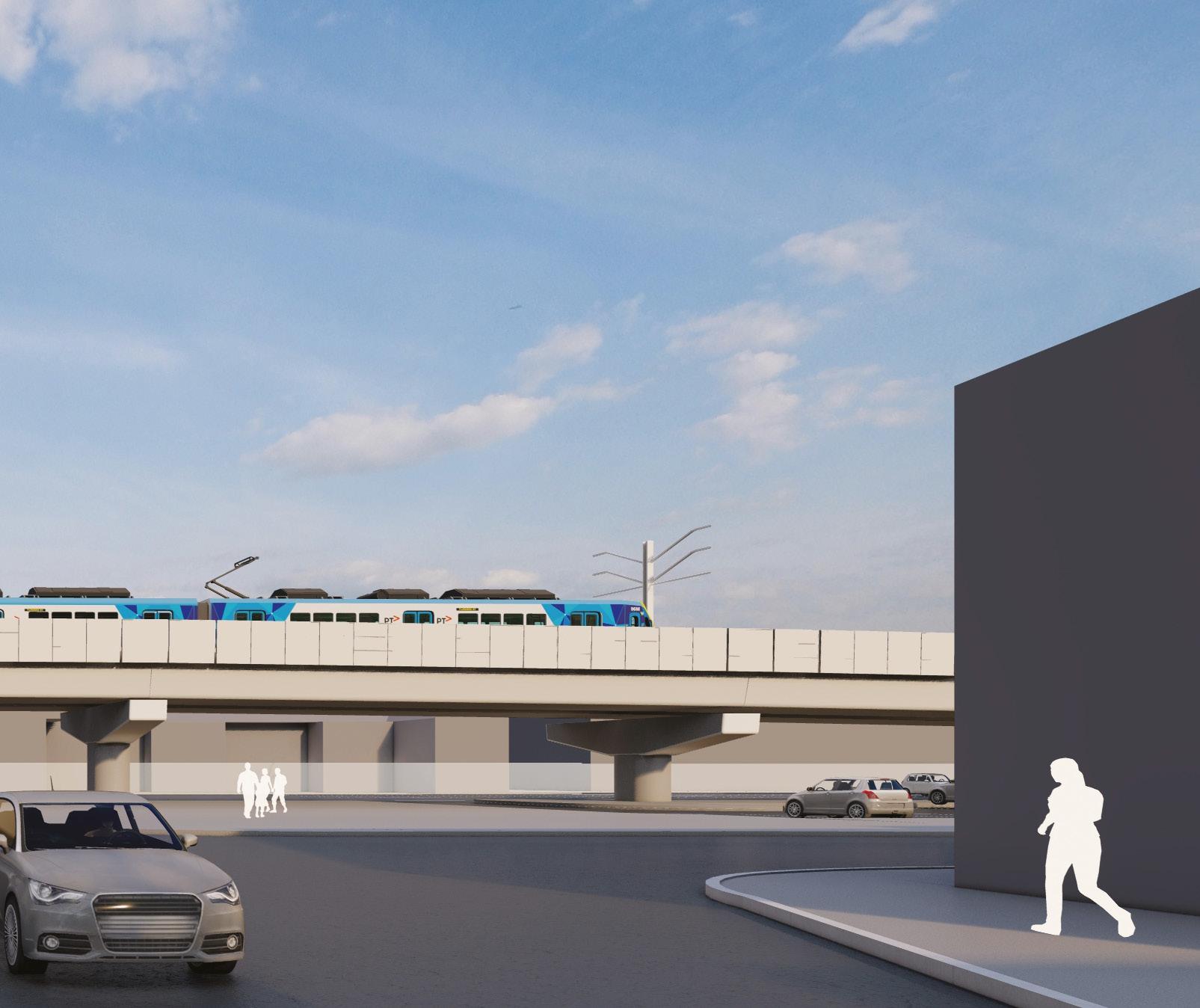
www.infrastructuremagazine.com.au June 2022 // Issue 23 BRIDGES 55

Access within the Narre Warren precinct will also be improved, with a more integrated transport hub and improved public space.
WEBB STREET – A DANGEROUS AND CONGESTED LEVEL CROSSING
Webb Street is one of the most dangerous and congested level crossings on the Pakenham line, and since 2012 there have been at least 19 near-miss incidents recorded at the Webb Street level crossing.
Additionally, the boom gates can be down for up to 40 minutes of the morning peak when up to 25 trains pass through the crossing every day, causing delays for about 13,200 vehicles.
THE PAKENHAM LINE
Webb Street is one of 22 level crossings being removed as part of a $15 billion investment to upgrade the Pakenham line. There are nine more to go by 2025 to make the Pakenham line level crossing free, with 13 sets of boom gates already consigned to history.
Around 90,000 people use the Pakenham/Cranbourne line each day, making it one of Melbourne’s busiest. Making the Pakenham line level crossing free will improve safety, reduce congestion and allow for more trains, more often. It will also deliver a more reliable road network, connections and travel times.
The upgrade of the Pakenham line also includes new highcapacity trains and the Metro Tunnel Project, which will create room for 120,000 more passengers on the Cranbourne and Pakenham lines during peak periods.
WHY A RAIL BRIDGE?
Following an evaluation of various design solutions, technical and engineering assessments determined the best outcome for the community is to build a new elevated rail bridge over the road.
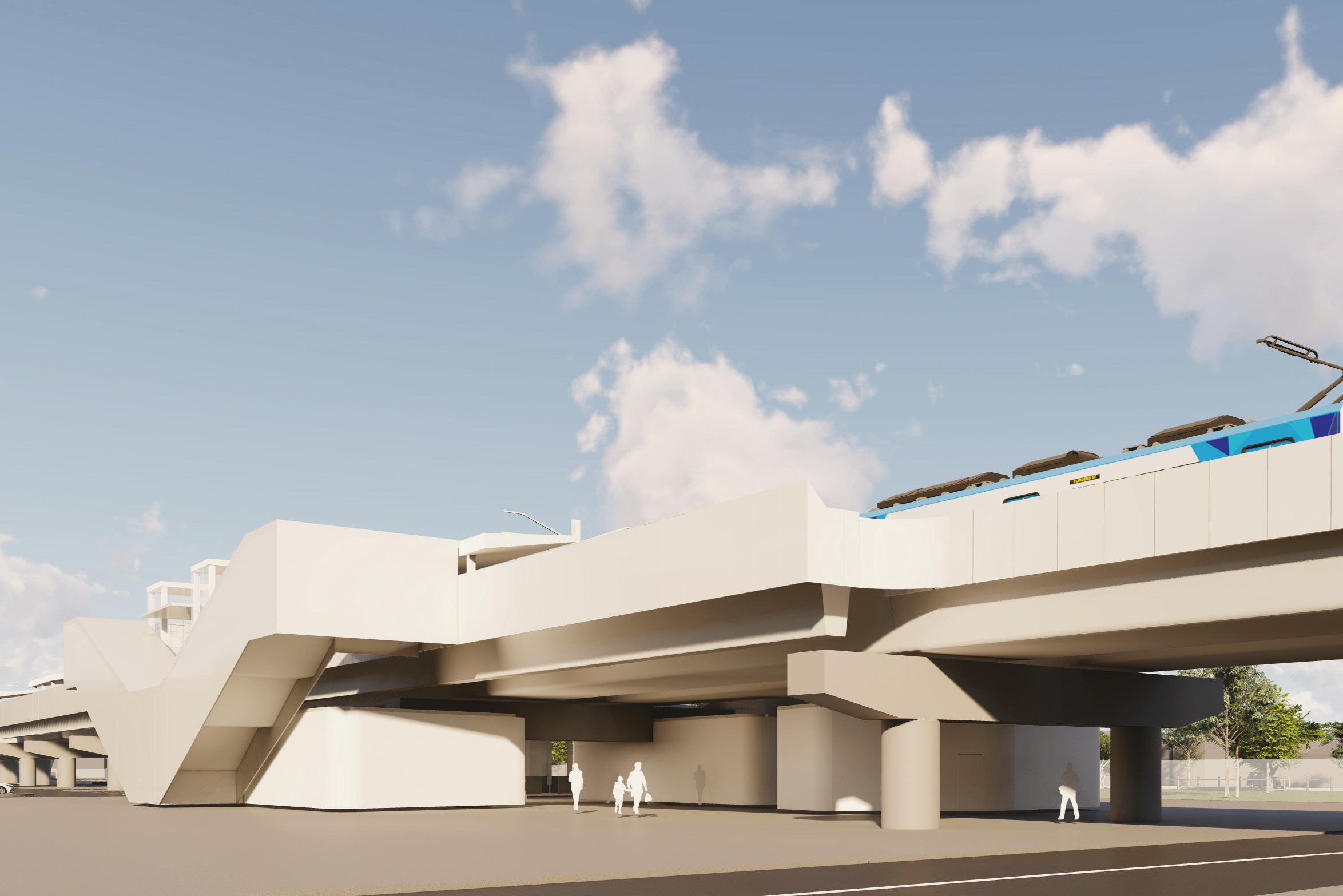
June 2022 // Issue 23 www.infrastructuremagazine.com.au BRIDGES 56
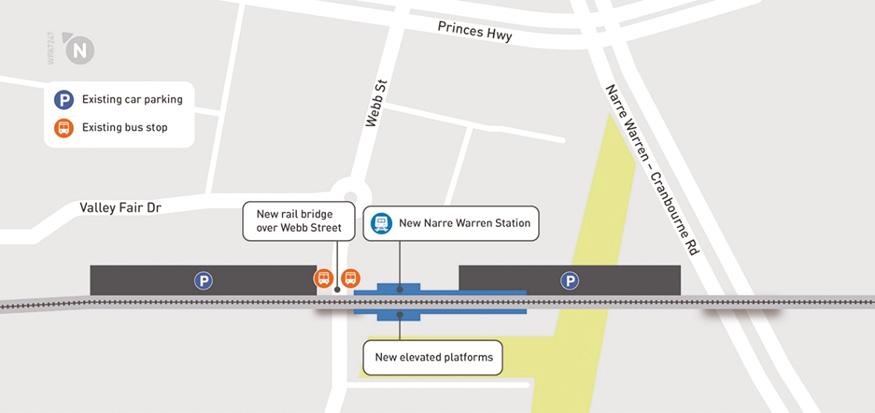
Program Director, Tony Hedley, said this outcome would minimise disruption during construction, and ultimately deliver a more efficient and reliable transport network.
“A rail bridge over Webb Street will improve travel times for commuters travelling by road, and the design will optimise access to the station precinct,” Mr Hedley said.
Mr Hedley said the design also provides an opportunity to improve accessibility and integration on both sides of the rail corridor, creating better connected and more liveable communities.
“Once we remove the boom gates and bells, traffic and trains will be completely separated, reducing the safety risk and improving pedestrian access to the station.
“It’s a busy precinct, surrounded by shops and local community facilities. This project will make it easier and safer for people to move around the area,” Mr Hedley said.
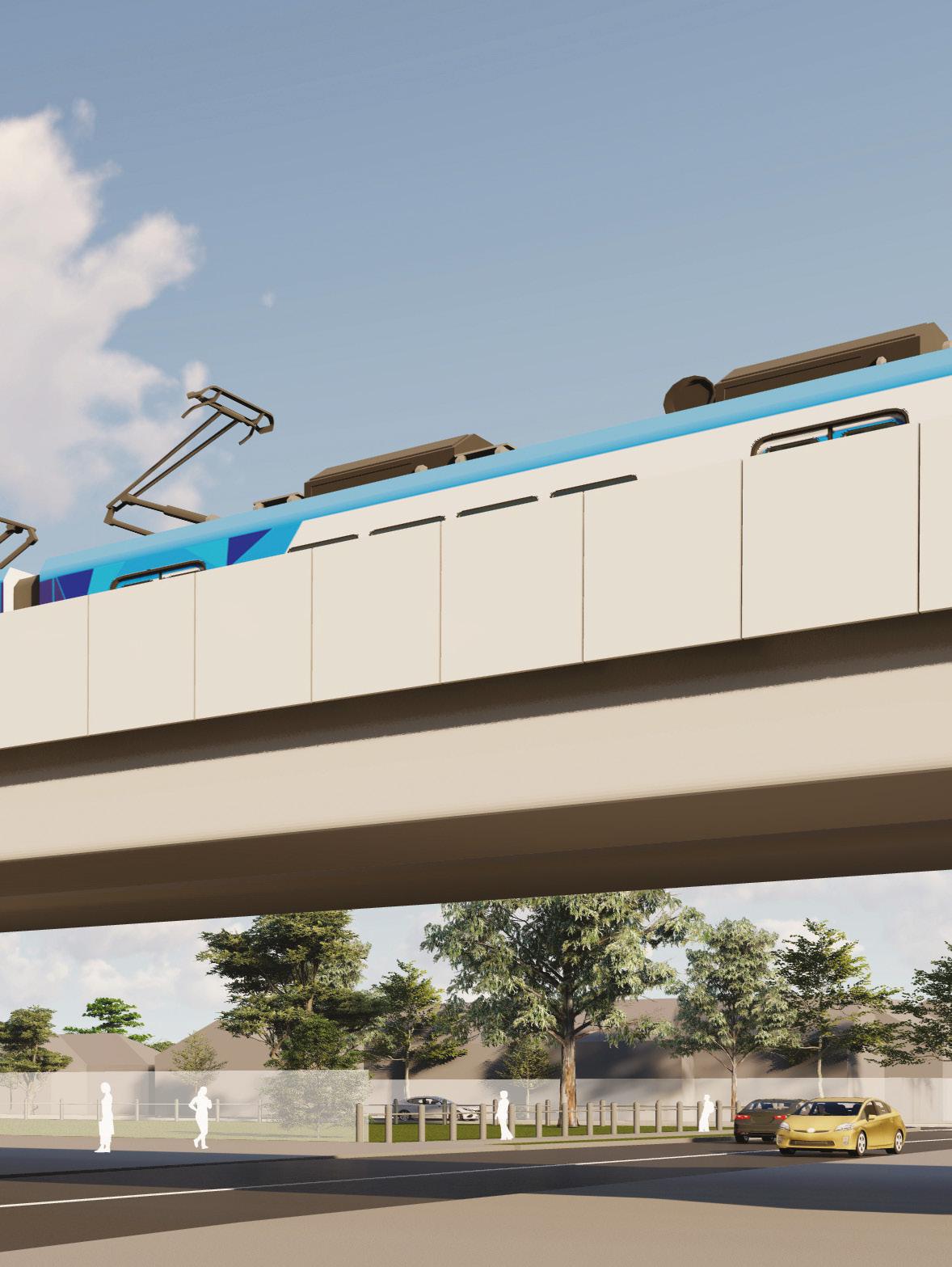
The solution also allows more trees and vegetation to be retained and minimises impacts on underground utilities.
Elevating the rail line will relieve congestion on Webb Street, making it safer and easier for drivers, pedestrians and cyclists to move around.
WHAT ARE THE CHALLENGES?
The Narre Warren area has a high water table, therefore drainage is an important part of the design. Expert hydrologists in the team will ensure flooding, drainage and run-off issues are considered.
“The area is known for flooding, and this is one of the reasons the rail bridge solution has been selected,” Mr Hedley said.
Minimising road and rail disruptions throughout construction, and the impact of those disruptions on local businesses and residents is another key challenge for the project team.
“The rail-over-road option will be constructed largely offline meaning construction will require considerably fewer temporary road and rail closures,” Mr Hedley said.
As with any major project, there will be disruption from time to time, and we’ll always communicate this to passengers and road users in advance.
The Pakenham line through Narre Warren caters for daily metropolitan passenger and regional trains, and freight train services.
“We are also working to minimise disruptions on the Pakenham Line as it is a busy line, with multiple projects working along it. Where possible we will coordinate disruptions with other projects,” Mr Hedley said.
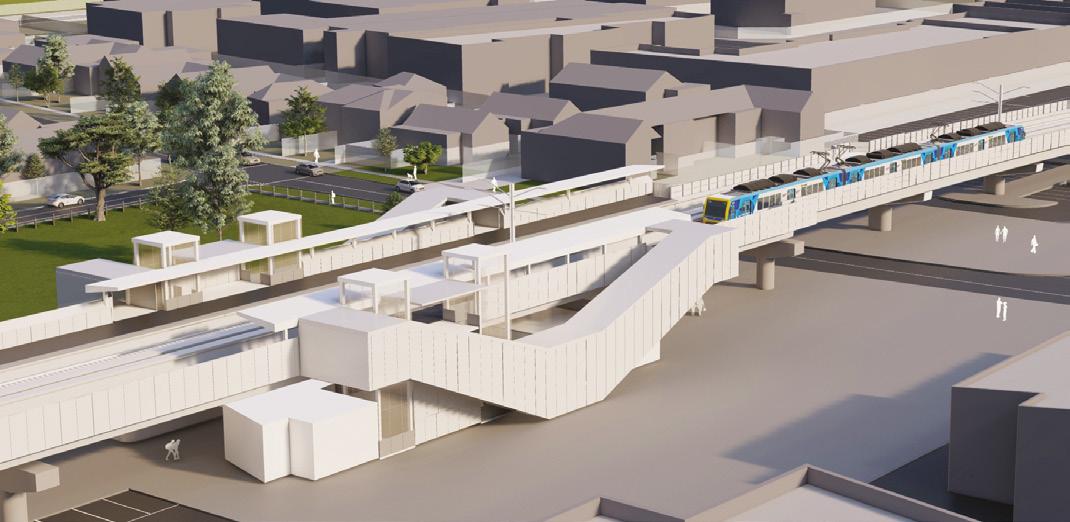
WHAT’S NEXT?
The elevated rail bridge and new station final design is progressing, but further technical assessments and community input is still to be gathered to inform the final design.
Community engagement is an important part of the project, and the project invited the community to provide feedback on the vision and values for the area, as well as the early concept designs.
Site investigations are already underway, and later in 2022, project teams will work in and around the rail corridor with equipment like trucks and small drilling rigs to undertake further site investigations.
Final designs and further community engagement are expected later this year. Construction is scheduled to start in late 2022, with the level crossing removed by 2025.
www.infrastructuremagazine.com.au June 2022 // Issue 23
BRIDGES 57
Webb Street and Narre Warren Station precinct map.
REMOTE MONITORING THE SAFETY OF BRIDGES
Australia is a land familiar with harsh environments, exercising the resilience of our infrastructure. The biggest test however, comes from the day-to-day, ever-increasing use of our roads and bridges.
Rising traffic volumes and aging infrastructure pose a serious risk of unplanned maintenance and network disruptions if left unmanaged. For bridge owners, managers and operators, knowing how the bridge is performing and ensuring its availability to service is critical.
Routine bridge inspections are an essential component of the decision-making process for resource allocation in transportation agencies, but the inspections themselves require significant labour, resources and are prone to human error. They can be disruptive to road and rail users, and manual methods do not provide the deep or timely insights needed to fully understand both near-term and long-term structural health issues.
Eloque, a joint venture between the Victorian Government and Xerox, aims to solve the lack of insightful bridge data so that asset owners can confidently and more effectively monitor their fleet of bridges.

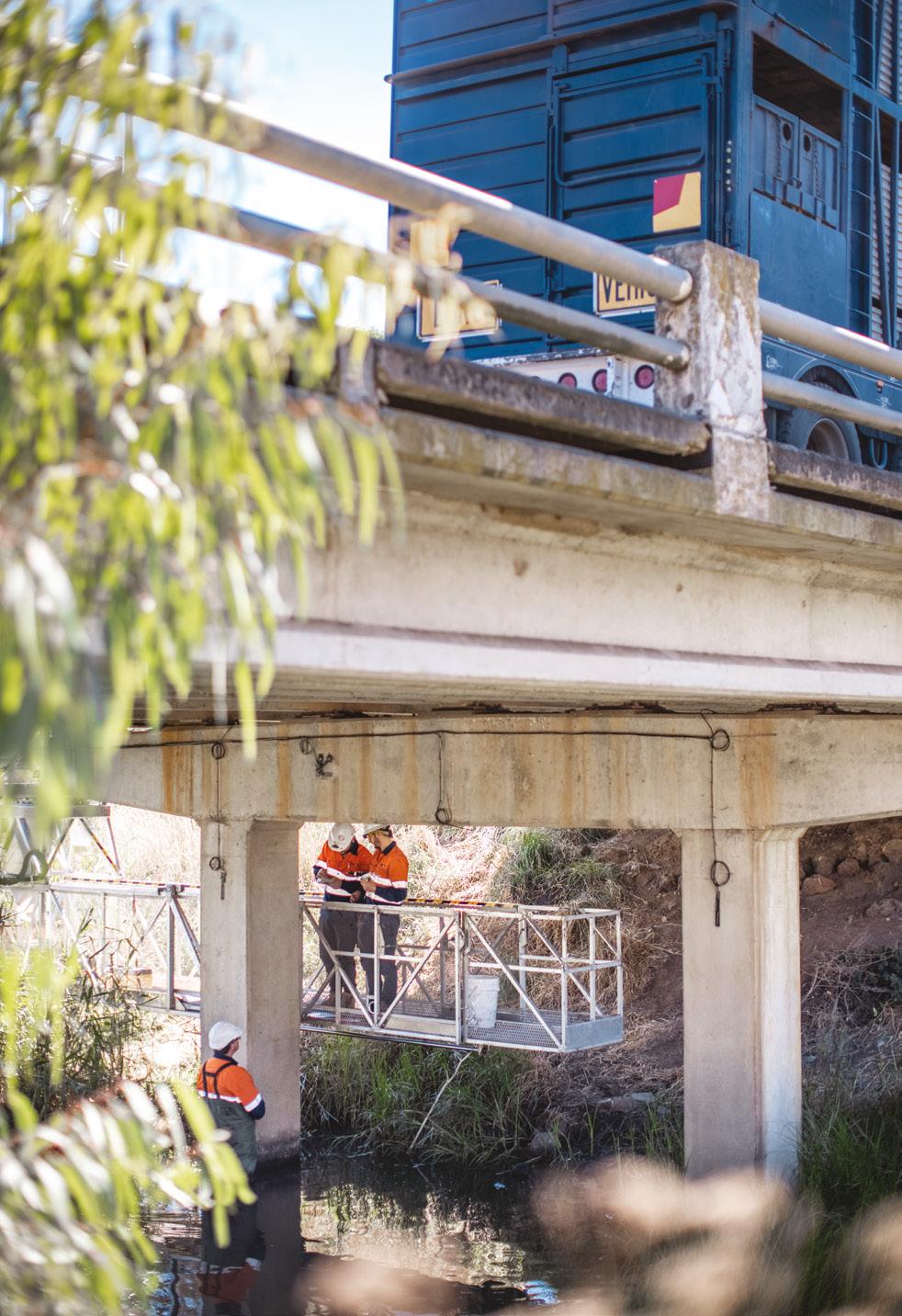
The use of remote sensing technologies presents a new approach to asset management, augmenting current practices by providing both qualitative and quantitative measures of a bridge’s condition, all whilst enabling integration with emerging digital smart city technologies.
Established in 2021, Eloque has already been installed on twelve bridges across Victoria as part of a $50 million Victorian Government program. The system uses multiplexed fibre-optic sensors attached to structures to accurately measure and estimate parameters indicative of bridge condition online, such as structural strain, thermal response, and other metrics.
AMBITIOUS INFRASTRUCTURE MONITORING
Understanding how bridges respond to loads over time permits us to design and schedule interventions that will prolong a structure’s life while moving to more preventative actions and reducing unplanned maintenance.
These insights give engineers the ability to manage structures at an individual bridge, route, or regional basis. The technology has shown its importance for savings in bridge inspections and engineering assessments, design feedback for stakeholders, as well as other applications such as train or vehicle axle monitoring and super-load planning.
Eloque is taking advantage of the recent innovations in data science, engineering, high-speed internet connectivity, and secure cloud analytics. Whilst Eloque is deployed on road, rail and pedestrian bridges, its system architecture can also lend itself to applications in many other asset classes in the future.
The agreement with the Victorian Government Department of Transport will see more than 60 installations this year, making it the most ambitious infrastructure monitoring project of its kind.
June 2022 // Issue 23 www.infrastructuremagazine.com.au
58 BRIDGES // SPONSORED EDITORIAL For more information, please contact
media@eloque.com.

60+
Installations in 2022
Eloque’s structural health monitoring technology delivers data-driven, intelligent insights into the condition of your bridges. Our end-to-end solution uses fibre-optic sensors to give you a continuous safety check of your asset portfolio.
Bringing assets to life eloque.com

BUILDING BRIDGEWATER BRIDGE
BIGGEST TRANSPORT PROJECT BRIDGES 60
TASMANIA’S
June 2022 // Issue 23 www.infrastructuremagazine.com.au

While building a new Bridgewater Bridge has been talked about for more than two decades, it is now becoming a reality, with the awarding of a contract for the design and construction of the project to McConnell Dowell. Work is now underway in preparation for construction to start later this year on what will be the biggest transport infrastructure project in Tasmania’s history.
BRIDGES 61
www.infrastructuremagazine.com.au June 2022 // Issue 23
Described as a once-in-a-generation project, the anticipation around the construction of a new Bridgewater Bridge, around 20km north of Hobart, is growing.
The project itself isn’t a new concept. It’s been talked about for more than 20 years, and locals know better than anyone the variety of different plans and designs that have been developed over that period.
Work on the $786 million Australian and Tasmanian government project has ramped up over the past two years, with the project now gearing up to break ground later this year.
Forming a critical part of Tasmania’s transport network, the Bridgewater Bridge is a key link in the Burnie to Hobart freight corridor, Tasmania’s highest volume freight network.
It also acts as an important transport connection for greater Hobart, facilitating access between central Hobart and growing communities at Bridgewater and Brighton, as well as between the Brighton Transport Hub and major industrial and freight distribution centres in Glenorchy.
New Bridgewater Bridge Project Director, Ben Moloney, said upgrading the important corridor will benefit the 22,000 people that travel across the bridge and on surrounding roads each day.
“Removing the bottlenecks currently experienced at each end of the bridge will reduce congestion, but it will mean people can more reliably plan their journeys with consistent travel times,” Mr Moloney said.
“On top of that, a free-flowing crossing with a higher speed limit will improve freight routes and improve productivity for the heavy vehicle industry.”
DEVELOPING DESIGNS AND TENDERS
While the need for a new bridge is obvious, what may be a lesser-known fact is that the new bridge will be the fifth built across the River Derwent at this location.
Completed in 1946, the current steel truss vertical lift bridge is reaching the end of its useable life, and with an unreliable lifting span, the structure is expensive to maintain.
The bridge and causeway no longer meet contemporary design requirements, and despite connecting to the National Land Transport Network at either end, the bridge provides just a single lane of traffic in each direction and a 60km/h speed limit.
Projects of this size and scale don’t come around often in Tasmania. To allow input and expert advice from the construction industry, the Tasmanian Government chose to utilise a competitive Early Contractor Involvement (ECI) procurement process to deliver the project.
Mr Moloney said CPB Contractors and McConnell Dowell were shortlisted following an extensive Request for Proposal process and spent 2021 working collaboratively with the government to develop their designs and tenders.
“The ECI process allowed us to look more broadly at the industry and utilise experienced road and bridge builders to showcase their practical knowledge and expertise to develop designs and construction methods best suited to the Tasmanian market,” Mr Moloney said.
“What we want to be able to do is achieve the best whole-oflife value for money project that delivers ongoing benefits to Tasmanians, and I think we will be able to do that”.
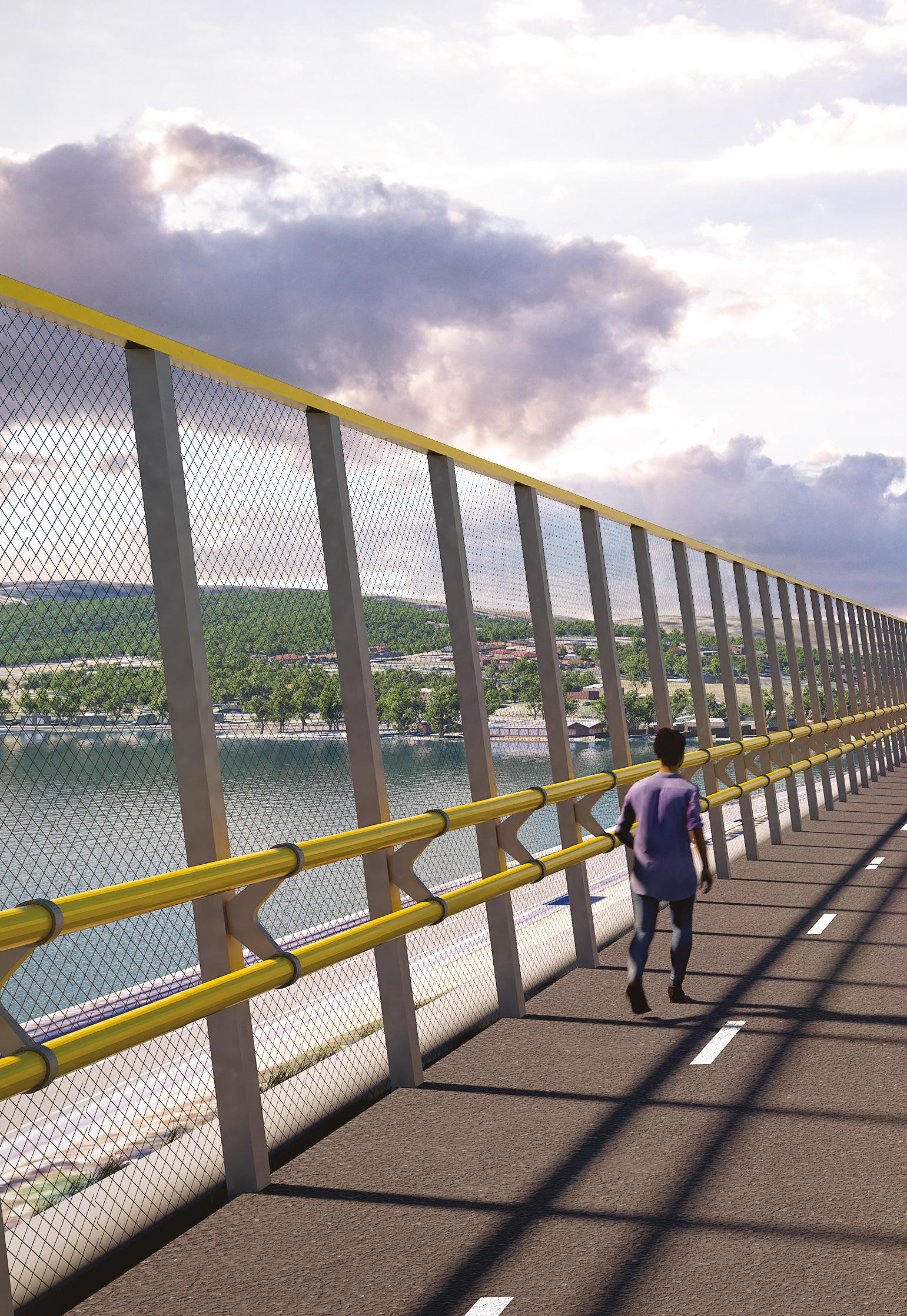
McConnell’s chosen design will see the construction of a new 1.2km precast concrete box girder bridge built downstream of the existing Bridgewater Bridge. The four-lane structure will include a three-metre-wide shared path for cyclists and pedestrians and a navigation clearance matching the Bowen Bridge some 15km downstream.
Construction will be via a temporary bridge structure and interlinked barge pontoons and will also include precast concrete production and batching plants.

At Granton, the Lyell Highway junction and Black Snake Road junction will be grade separated from the Brooker Highway, allowing for free-flowing traffic from the Brooker Highway onto the Lyell Highway towards New Norfolk.
June 2022 // Issue 23 www.infrastructuremagazine.com.au BRIDGES 62
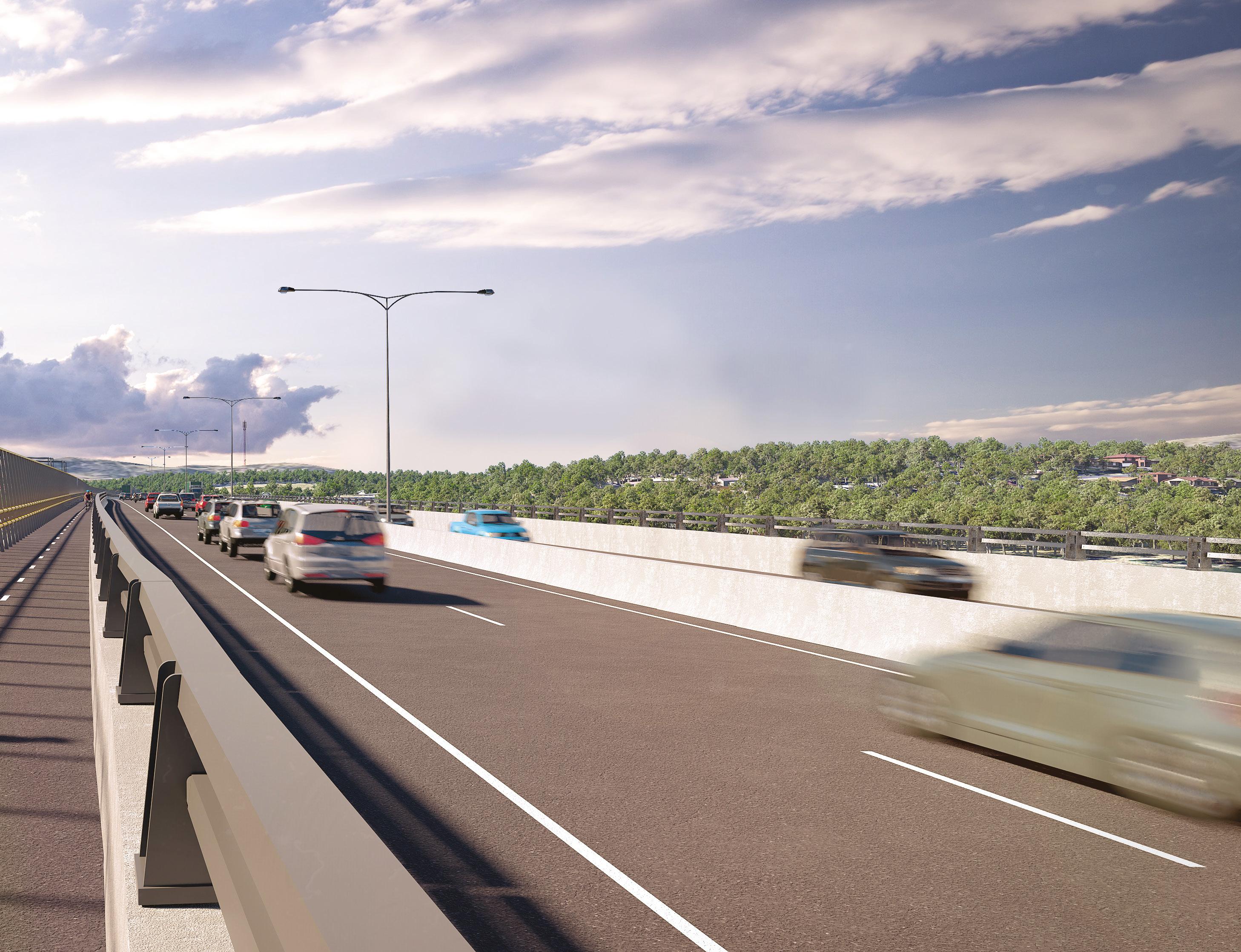
One the northern side of the river at Bridgewater, the chosen design includes new Midland Highway ramps at Old Main Road, and the connection of Gunn Street and Old Main Road under the new bridge.
STAKEHOLDER ENGAGEMENT AND JOB OPPORTUNITIES
Mr Moloney said feedback from the local community and broader stakeholder groups played a vital role in design development for the bridge and interchanges, with an extensive engagement and consultation process undertaken on a reference design in late 2020.
“We heard loud and clear from the community that they wanted free flowing connections and better access to and from local roads,” Mr Moloney said.
“Based on that feedback, a number of enhancements were incorporated into McConnell Dowell’s design including a south bound on ramp onto the bridge from Bridgewater and better connections between the Brooker Highway and Lyell Highway, allowing for improved travel between Hobart and Derwent Valley.”
Local residents and commuters travelling through the area won’t be the only winners, with major construction to support around 830 direct and indirect jobs.
It is expected that McConnell Dowell will procure around 85 per cent of the construction work through subcontract agreements with Tasmanian companies, who will need to recruit extra capacity into their organisations. This will provide increased job and career opportunities for Tasmanians and potentially increase the long-term skills and capacity of the industry.
Mr Moloney said the flow-on effects to the broader Tasmanian community will be significant, with a range of industries set to reap the benefits of such a major construction project.
“We know we will see an increase in work in the civil construction industry, but there are also exciting opportunities for small businesses as well, from the local café to accommodation in the area,” Mr Moloney said.
“This project will leave a legacy both in the local communities where we will see construction, but also to the broader Tasmanian community.”
Early activities, including detailed design and site investigations, are now underway ahead of major construction starting later this year once necessary approvals are in place.
Construction is expected to take around three years, with the new bridge scheduled to be open to traffic by the end of 2024.
www.infrastructuremagazine.com.au June 2022 // Issue 23 BRIDGES 63
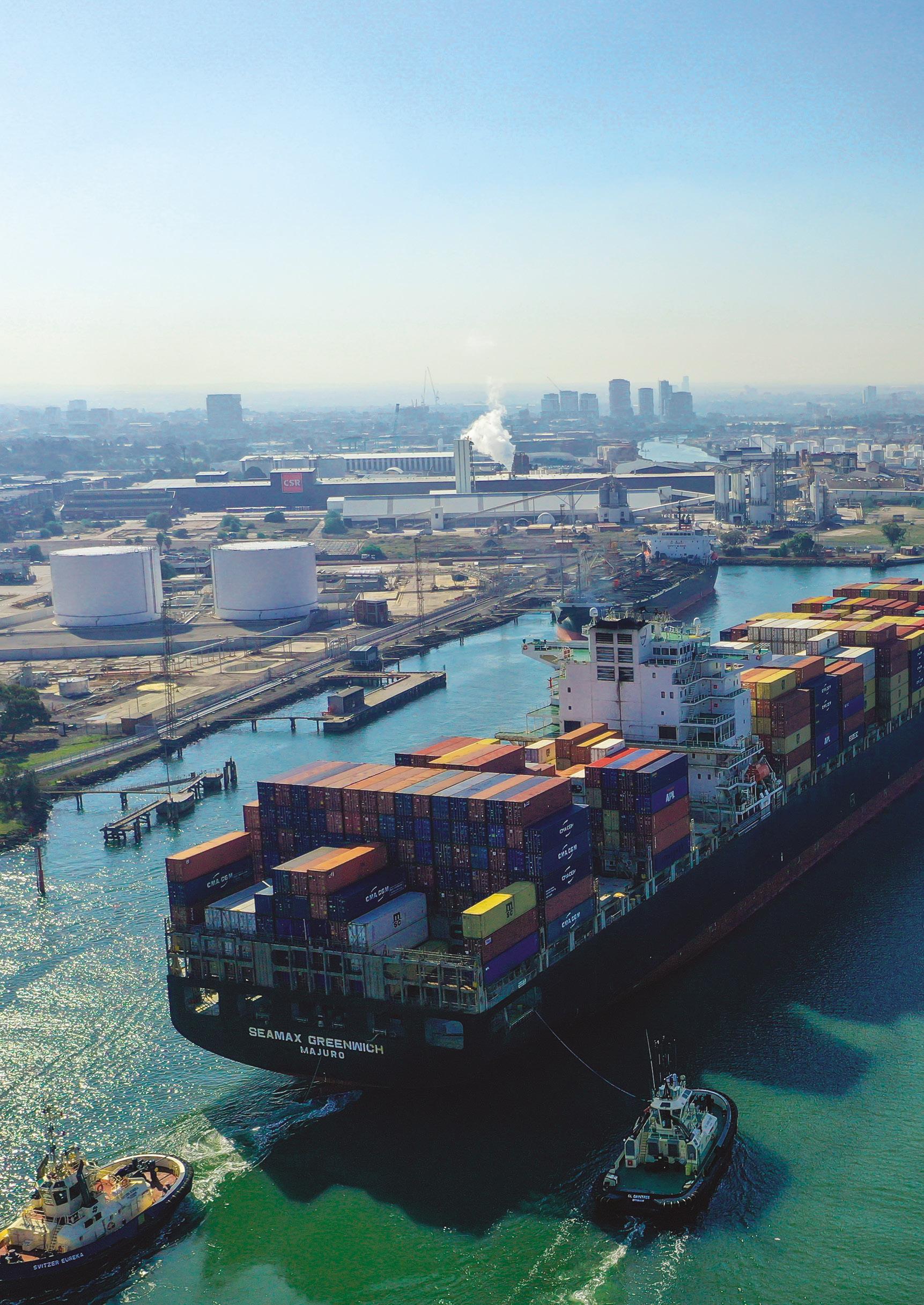
CHALLENGES AND OPPORTUNITIES FACING THE FREIGHT SECTOR
64 FREIGHT AND LOGISTICS
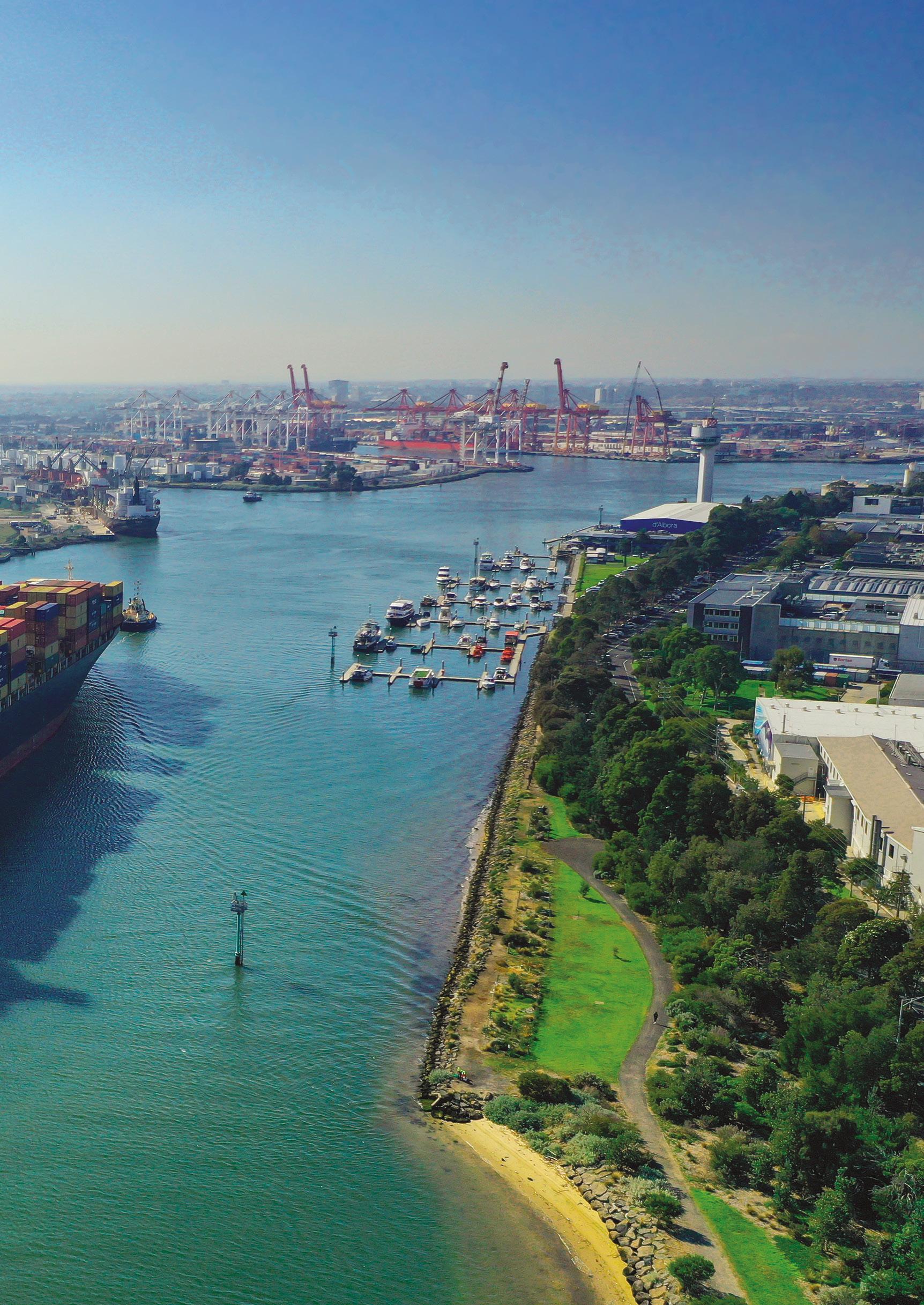 by Mikayla Bridge, Journalist, Infrastructure Magazine
by Mikayla Bridge, Journalist, Infrastructure Magazine
During her presentation at the 2022 Critical Infrastructure Summit, Rachel Smith, the Head of Government and Policy at the Australian Logistics Council (ALC), explored the current state of Australia's logistics and freight sector, and the harmonisation that is needed in the future.
65 FREIGHT AND LOGISTICS

Ms Smith has more than eleven years of experience in policy, membership and strategic organisation, working closely with multiple divisions of State and Federal Governments as well as across a wide range of industries, including engineering, housing, health, pharmacy and supply chain.
The Australian Logistics Council represents major Australian logistics supply chain customers, providers, infrastructure owners and suppliers, throughout the entire supply chain. Its work with all levels of government ensures that Ms Smith’s knowledge of the sector is timely, well-informed and consistent.
STATE OF PLAY
The freight sector is woven into the backbone of every Australian household. The common goods used by each Australian, including food, clothing, appliances and medicine are all transported by freight operators. The supply chain also provides fundamental materials used to build and operate critical community infrastructure such as roads, hospitals and schools.
Throughout 2020-2022, the supply chain has undergone a major upheaval, and Ms Smith’s presentation explored the challenges and opportunities the freight industry experienced
during this period. Having joined ALC in August 2020, Ms Smith immediately began her new role by dealing with COVID border restrictions, surveillance testing regimes for truck drivers, and ensuring that freight could move uninhibited across Australia.
“Some of the many COVID related disruptions included high demand for imported goods transported by containers. For example, household electronics, furniture, machinery and medicine. Prices were pushed up as households were spending more money on goods rather than on travel and other COVID affected services,” Ms Smith said.
“Ship supply shortages as well as high fuel costs and labor shortages sent shipping prices higher, and port congestion and health protocols prevented port access.”
After two years of COVID-related challenges, Australia also faced extreme weather events like flooding, which recently cut off critical rail links into the Northern Territory and Western Australia, as well as recent global shortages of AdBlue and increased fuel prices.
“The freight and logistics sector has risen to the challenge time and time again, yet the interdependencies and critical points of failure, and the need for greater resilience, are now evident more than ever,” Ms Smith said.
June 2022 // Issue 23 www.infrastructuremagazine.com.au 66 FREIGHT AND LOGISTICS
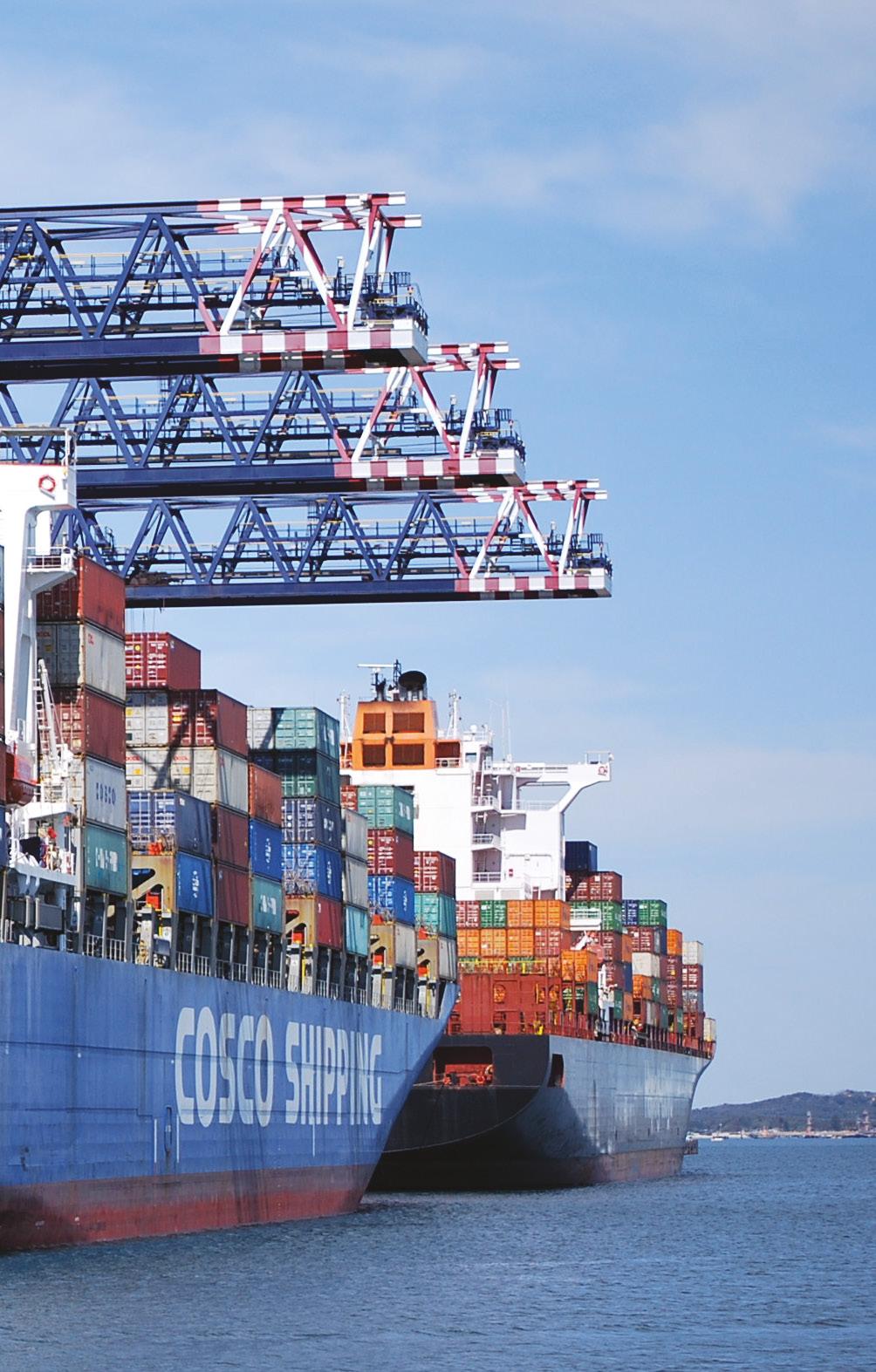
In addition to these unforeseen challenges, Australia is facing increased capacity constraints as the nation’s population grows. Studies estimate that congestion costs will rise to $39.8 billion by 2031, which has already doubled since 2016 to 19 billion. Australia's urban freight task is set to grow by 60 per cent by 2040.
Many businesses in 2021-22 have also doubled their e-commerce operations, and show no sign of stopping. This growth indicates a need to rethink the way businesses operate in line with consumer and community expectations. As Australia's population grows, so do the freight tasks.
“There is this increasing need to preserve industrial land for warehouses and freight activities to support growth and address issues such as urban encroachment,” Ms Smith said.
“There is a forecasted additional need for 490,000m2 per annum of additional e-commerce dedicated logistics space
required by 2025. Over the next five years it forecasts an additional 2.4 million square metres of e-commerce dedicated logistic space will be required just in Australia.”
HARMONISATION AND UP-SKILLING
In order to secure the future of Australia’s supply chain, Ms Smith said the sector needs increased harmonisation between jurisdictions and government.
“We are after all a single national economy. There are some challenges ahead in terms of road user charging reform, to ensure that we can adequately fund the roads that we use and that users pay their fair share,” Ms Smith said.
“Also, harmonisation of urban planning principles that adequately cater for the needs of freight, which are ultimately the expectations of consumers in the Australian community. There's also other opportunities in terms of skills and the transition to net zero economies.”
According to Ms Smith, these opportunities must be explored because the current workforce in the freight and logistics sector is stretched to capacity.
As more and more tasks within the sector are digitised, more roles are converting from low-skilled to semi-skilled, and as we make the shift towards greener, more sustainable technology, such as electric vehicles, the roles and requirements of mechanics in the industry will shift.
“This is a challenge for industry, but also an opportunity to look at the way we attract, train and retain staff in a competitive employment market, such as Australia's, particularly now with almost full employment,” Ms Smith said.
“With the challenges and demand for skills also comes the shift towards a net zero economy. The world is moving and the transport sector has an important role to play in helping Australia meet its emission reduction targets.
“We're seeing a number of positive initiatives at the enterprise level, but the transition will be influenced by a range of factors, including access to the right technology, industry incentives, consumer expectations, regulatory settings and investor sentiment, as well as global capital markets.”
Many of these positive initiatives are the result – or require the need for – harmonisation across jurisdictions. Ms Smith said that natural disasters such as extreme weather conditions or COVID outbreaks require national responses, which go hand in hand with an interconnected supply chain.
Implementing national responses will require regulations to be reviewed and possibly retired in coming years, in order to create solutions to industry challenges that align with contemporary community ideals.
Despite the need for these changes, Ms Smith expressed optimism for the future of the freight and logistics sector.
She said that state border restrictions due to COVID have highlighted the need for a national approach and for jurisdictions to work together, to ensure an interconnected supply chain and meeting the needs of Australians as a nation, not simply individual states.
www.infrastructuremagazine.com.au June 2022 // Issue 23 Register
67 FREIGHT AND LOGISTICS
for free to watch Rachel Smith’s presentation at the Critical Infrastructure Summit on demand by visiting: www.critical-infrastructure.com.au.
HOW TO INCREASE RAIL FREIGHT’S MODAL SHARE

June 2022 // Issue 23 www.infrastructuremagazine.com.au 68 FREIGHT AND LOGISTICS
by the Australasian Railway Association (ARA)
As a means to move freight, rail works. In many instances, it is the stand-out performer when compared to other modes of transport. This is particularly true for moving heavy bulk material over long distances.
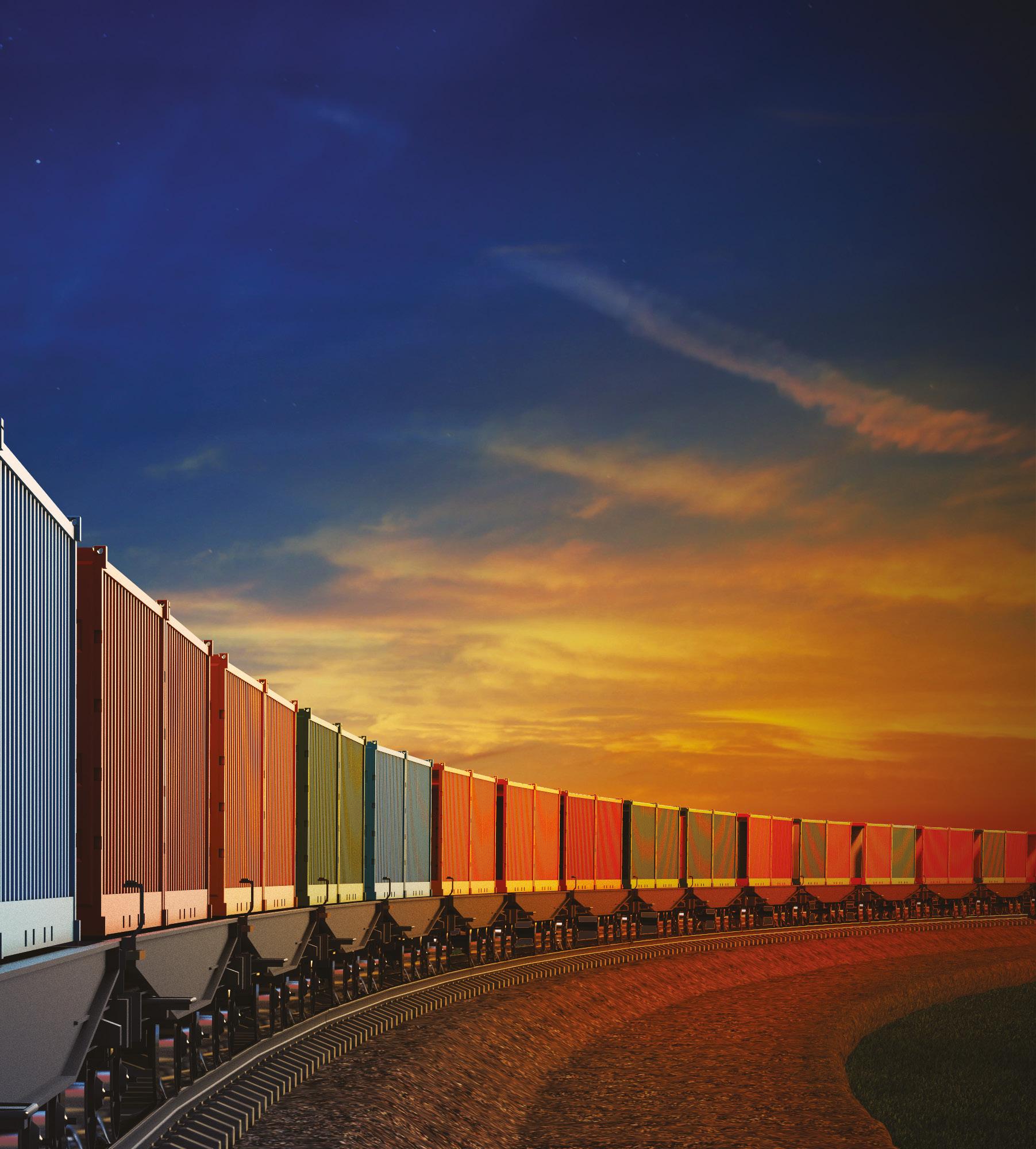
www.infrastructuremagazine.com.au June 2022 // Issue 23
69 FREIGHT AND LOGISTICS

The Australasian Railway Association (ARA) has long advocated for greater use of rail in the freight sector to maximise the clear safety and sustainability benefits that can be derived.
However, despite the advantages rail freight can offer the community and economy, achieving increased modal share has traditionally proven to be difficult.
State policies across Australia have set a range of mode share targets over the last decade, aiming to increase the use of rail to up to 30 per cent of the overall freight task.
Unfortunately, rail’s share of freight movements in and out of container ports remains low, sitting at between just two to 17 per cent across the country.
Earlier this year, the ARA released a new report on the impediments to rail modal shift to define the key challenges preventing greater use of rail freight despite government aspirations to maximise the benefits rail has to offer.
The release of the report was timely given the essential role rail will play in meeting our growing freight task.
FOUR KEY AREAS THAT REQUIRE ACTION
In 2019, rail met 56 per cent of the national freight task and carried five times more bulk freight than road.
Rail is expected to meet almost three quarters of the growth in demand for freight to 2030, highlighting its essential role in supporting strong supply chains as demand grows.
It is also an essential part of the sustainable growth of the freight sector, with rail generating 16 times less carbon pollution than road, and easing congestion on our city roads and regional highways.
However, urgent action is needed now to support greater use of rail to meet growing demand in the freight sector.
The report identified four areas that were key to increasing rail freight’s modal share:
1. Need to address policies for metropolitan networks shared by freight and passenger services
Shared networks in the freight sector generally prioritise passenger services, with some networks also implementing track curfews for freight services.
June 2022 // Issue 23 www.infrastructuremagazine.com.au 70 FREIGHT AND LOGISTICS
These policies reduce the time available for freight services on the network and limit the ability of freight operators to establish schedules that maximise the efficiency of their fleet.
While new, dedicated freight lines are an obvious solution in some locations, the fact remains that shared networks will be a reality for some time to come, and a shift in policy settings will be essential to addressing this issue.
During the pandemic, greater flexibility was applied to some freight networks to ensure essential supply chains remained open.
The experience highlighted the opportunity for new approaches that still preserve network efficiency for passenger services, but which deliver better passenger and freight rail integration to make the best possible use of the network.
2. Improved land use planning to support the development of dedicated rail hubs
Last mile costs can have a significant impact on rail freight’s competitiveness. Creating hubs that locate businesses using rail close to inter-modal terminals can significantly reduce these costs and support the development of complementary services.
It is therefore essential that land is preserved for rail facilities and railrelated services along key freight routes to maximise co-location opportunities over the long term.
3. Creation of new rail terminals will help achieve higher volumes of freight on rail Rail does require higher freight volumes to be competitive with other modes and the establishment of new freight terminals can be key to supporting this outcome.
However, the up-front costs of rail terminals can be high and financial assistance in their early growth stages may be required to maximise the full benefit of these investments.
It is important funding decisions for new rail infrastructure such as terminals considers not just the capacity benefits the projects can deliver, but also the wider social, environment and social benefits greater use of rail has to offer.
4. Lowering handling costs at ports and rail terminals will be key to greater use of rail freight
Higher freight loading and unloading costs when compared to rail has likely affected mode shift over time.
Rail terminal costs, including handling costs at ports, has impacted rail’s competitiveness.
It is pleasing to see many ports have, or plan to, address this issue to support greater use of rail in the future.
Enhancements to freight infrastructure to increase automation, implement modern loading facilities and monitoring technology, and support efficient connections between all freight modes will also support reduced handling costs over time.
EXPLORING FURTHER INDUSTRY OPPORTUNITIES
While the report confirmed there remains a great deal of work to do to support increased use of rail freight, the good news is that investment in the sector is strong.
The progress of landmark projects such as Inland Rail, in addition to investments in infrastructure to improve efficiency such as the Botany Rail Duplication, highlight a clear commitment to supporting greater use of rail as part of an efficient and resilient national supply chain.
The ARA is continuing to work closely with industry to explore opportunities for greater use of rail, with a joint research project with the Australasian Centre for Rail Innovation, Freight on Rail Group (FORG) and the Department of Infrastructure, Transport, Regional Development and Communications (DITRDC) currently underway.
The project will build on the outcomes of the ARA’s report to further assess industry perceptions, barriers and opportunities to improve rail freight modal share.
Ultimately, greater use of rail will support improved outcomes for the freight sector as a whole as demand grows. That is why action is needed now to make the most of the wide range of benefits rail freight has to offer.
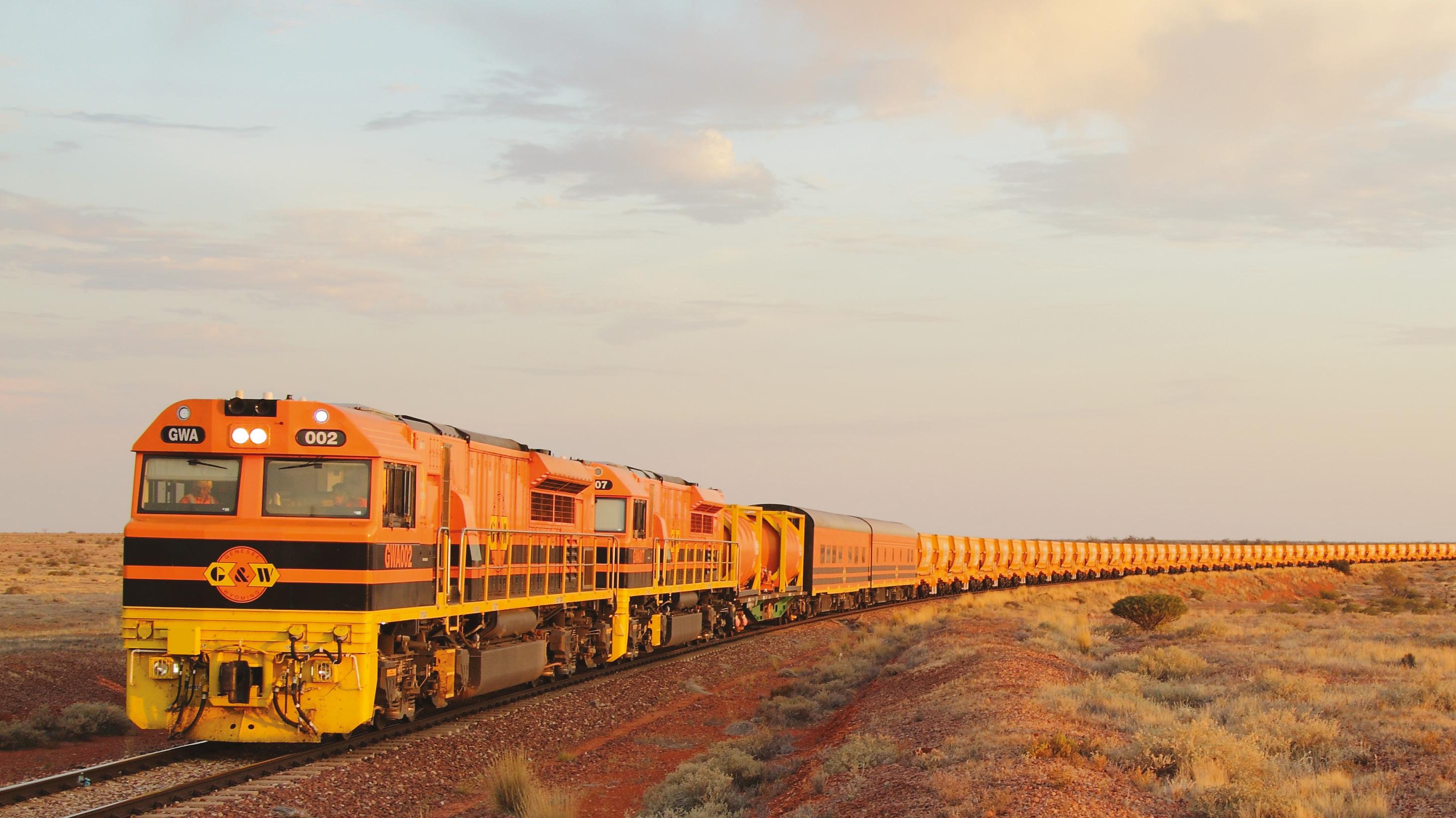

www.infrastructuremagazine.com.au June 2022 // Issue 23 71 FREIGHT AND LOGISTICS
FEATURES SCHEDULE
September 2022
Deadline: 8 July 2022
Ports Asset Management
AI and machine learning
Intelligent Transport Systems (ITS)
Safety and risk management
Sustainability
DISTRIBUTION TBC
March 2023
Roads and Traffic Digital Twins
Software, communications and connectivity
Signalling, tracking and control systems
Condition monitoring and maintenance
Spatial & GIS
Deadline: TBC
November 2022
Rail
Deadline: 7 October 2022
IoT & cloud communication
Security Disaster management
Tunnels
Drones/UAVS
Funding/investment
DISTRIBUTION TBC
June 2023
Training and skills
DISTRIBUTION TBC
ADVERTISERS’ INDEX
Automated and electric vehicles
Freight and logistics
DISTRIBUTION TBC
Deadline: TBC
72 June 2022 // Issue 23 www.infrastructuremagazine.com.au
Aerometrex 48-49 AGD Systems 7 BlastOne International 9 Digital Utilities 2022 IBC Eloque 58-59 Mastt 11 Parchem Construction Supplies 12-13 Polymaster IFC SICK OBC STRAILastic Australia 27 Airport Urban development
Smart cities Bridges
21–23 June 2022
Three virtual conferences:
• Future Grids – 21 June
• Engaging Customers – 22 June
• Cyber Security – 23 June
Creating efficient and secure future grids and engaging customers in the new digital era.




2022 Brought to you by Register at www.digitalutilities.com.au
REGISTRATION IS FREE!
INTELLIGENTLY ON TRACK AT ANY TIME.

Maneuvering carefully and improving work processes: Manuel’s job is to make mobile work machines intelligent. Thereby, he relies on SICK’s longtime experience with intelligent sensors. Smart solutions provide information on position, inclination and speed, warn about collisions, and keep machines on course. Connected in a clever way, these kinds of information lead to more efficiency, less downtime and lower repair costs. Manuel has recognized the potential of automation. And thanks to SICK, he is already today on the right track and prepared for the future, long before daily life might overrun him. We think that’s intelligent. www.sick.com/mobile_automation











































 by Chris Melham, Chief Executive, Civil Contractors Federation National
by Chris Melham, Chief Executive, Civil Contractors Federation National












 Tby Jon Davies, CEO, Australian Constructors Association
Tby Jon Davies, CEO, Australian Constructors Association

















 by Norris Carter, CEO, Hobart Airport
by Norris Carter, CEO, Hobart Airport





 by CSIRO
by CSIRO







 by Christopher Allan, Journalist, Infrastructure magazine
by Christopher Allan, Journalist, Infrastructure magazine
























 by Mikayla Bridge, Journalist, Infrastructure Magazine
by Mikayla Bridge, Journalist, Infrastructure Magazine











